Ringway Tech TG8862 DIGITAL PIANO User Manual
Ringway Tech(Jiangsu) Co.,Ltd. DIGITAL PIANO
User Manual
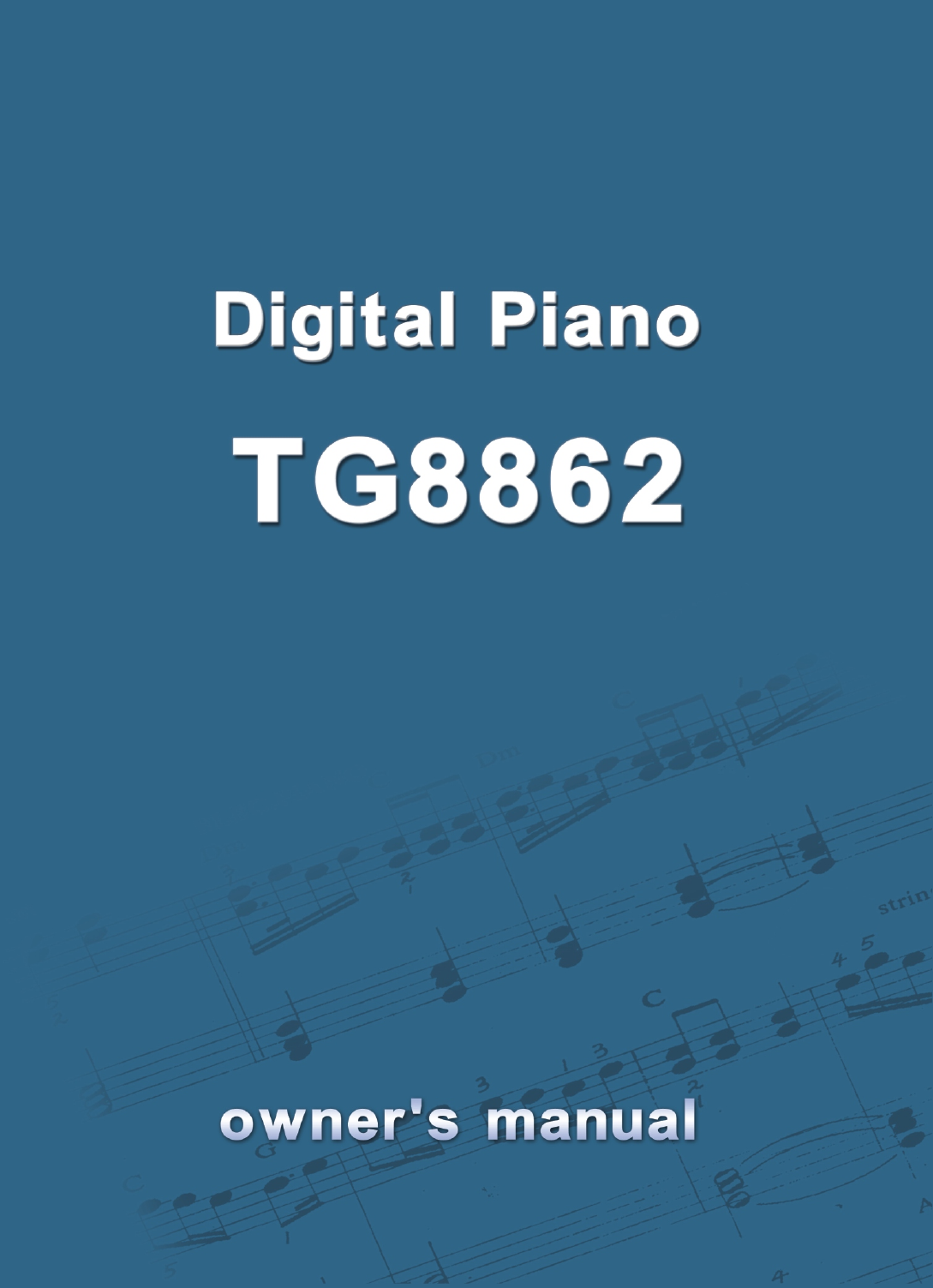
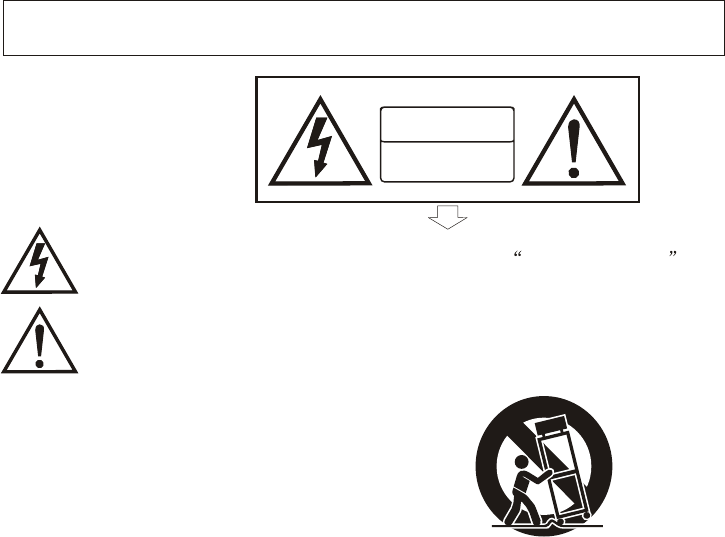
1) Read these instructions.
2) Keep these instructions.
3) Heed all warnings.
4) Follow all instructions.
5) Do not use this apparatus near water.
6) Clean only with dry cloth.
7) Do not block any ventilation openings,install in accordance with the manufacturer s instructions.
8) Do not install near any heat sources such as radiators, heat registers,stoves,or other apparatus (including am
plifiers) that produce heat.
9) Do not defeat the safety purpose of the polarized or grounding-type plug.A polarized plug hase two blades
with one wider than the other.A grounding type plug has two blades and a third grounding prong.The wide blade
or the third prong are provided for your safety,if the provided plug does not fit into your outlet.consult an elec
trician for replacement of the obsolete outlet.
10) Protect the power cord from being walked on or pinched particularly at plugs.convenience receptacles,and
the point where they exit from the apparatus.
11) Only use attachments/accessories specified by the manufacturer.
12) Use only with the cart,stand,tripod,bracket,or table specified by the manufacturer,or sold with the
apparatus.When a cart is used,use caution when moving the cart/apparatus combination to avoid injury from
tip-over (Figure 1).
13) Unplug this apparatus during lightning storms or when unused for a long periods fo time.
14) Refer all servicing to qualified service personnel.Servicing is required when the apparatus has been dam
aged in any way,such as power-supply cord or plug is damaged,liquid has been spilled or objects have fallen
into the apparatus,the apparatus has been exposed to rain or moisture,does not operate normally,or has been
dropped.
WARNING:To reduce the risk of fire or electric shock,do not expose this apparatus to rain or moisture.
CAUTION:Apparatus shall not be exposed to dripping or splashing and no objects filled with
liquids,such as vases,shall be placed on the apparatus.
(Figure 1)
Thank you for purchasing this digital instrument.For perfect operation and security,please
read the manual carefully and keep it for future reference.
Precaution
Safety Precautions
Important Safety Instructions
RISK OF ELECTRIC SHOCK
DO NOT OPEN
CAUTION
The lightning flash with arrowhead symbol within an equilateral triangle is in
tended to alert the user to the presence of uninsulated dangerous voltage
within the product s enclosure that may be of sufficient magnitude to constitute a
risk of electric shock to persons.
The exclamation point within an equilateral triangle is intended to alert the user
to the presence of important operating and maintenance(servicing) instructions in
the literature accompanying the product.
Your digital piano is a high-quality digital piano with 88 standard
touch sensitivity keyboard and combines the most advanced PCM
tone generation technology. This digital piano lets you record your
performances and Registration settings to a USB Disk. Each user
song lets you record up to sixteen independent tracks. In order to
obtain maximum performance and enjoyment, please read this
manual thoroughly while trying out the various features described.
Thanks For Using Our Digital Piano

................................ 2
3
3
3
3
5
5
5
5
6
7
7
7
8
9
10
11
12
12
13
15
16
16
17
17
18
19
22
24
27
28
29
30
31
32
33
34
35
36
37
38
39
40
41
42
43
Panel Control
Connectors
Using DC Power Jack
Using Headphones
Using Foot Pedals
Using MIDI IN/OUT Jack
Using Line IN/OUT Jack
Using MIDI Thru/In/Out Jack
Using Line In/Out Jack
USB-MIDI/USB AUDIO
Basic Operation
Standby/On Switch
Adjust the Volume
Demo Play
Voices
Selecting a Voice
Dual Mode
Mixer
Playing Portable Grand Piano
Keymode
Transpose
Tune
Tempo/Tap
Metronome
Touch
One Touch Setting
User Edit
Effect
Function
Main Voice Pan
Split Voice Pan
Dual Voice Pan
Main Voice Octave
Split Voice Octave
Dual Voice Octave
Arpeggio
Midi In
Midi Out
Local
Reverb Type
Main voice Reverb Level
Split Voice Reverb Level
Dual Voice Reverb Level
Chorus Type
Main voice Chorus Level
Split voice Chorus Level
....................................
...................
.......................
.......................
............
.............
.......
................
.............
............................
..................................
.......................
..................................
............................................
.........................
..................................
..........................................
.......
......................................
.. ...................................
............................................
...................................
...................................
.......................
...........................................
.....................................
. ..........................................
........................................
......................
......................
...........................
......................
.....................................
.....................................
.....................................
..........................................
................................
.............
.............
.............
.............
.............
...............................
44
45
46
48
49
50
51
52
53
54
55
56
57
58
59
59
60
60
61
61
61
62
62
64
64
66
68
68
68
69
69
69
69
70
70
70
73
74
74
77
79
80
81
82
Start the Style
Stop the Style
Fade
Adding Fill-In
Adjusting the Accompaniment
Volume
User rhythm recording
Registration Memory
Store
Load
Freeze Function
Saving the Registration Data
to USB Disk
Song Recording
Quick Recording
Multi Track Recording
Delete Song
USB File Button
USB Volume
Chord Dictionary
Selecting the Chord Root
Selecting the Chord Type
Exiting the Chord Dictionary
Teaching Function
Left/Right Hand
3 Steps of Learning Feature
Factory Set
Appendix
Voice List
Style List
Percussion Voice List
MIDI Implementation Chart
Specifications
Assemble Draft
Dual voice Chorus Level
Pedal1 Control
Pedal2 Control
Main voice Track
Split voice Track
Dual voice Track
USB Speed
Play Mood
Left/right Hand
Auto Power Off
Auto Accompaniment
Selecting a Style
...........................
...........................
...............
.............................
.............................
..........................
...........................
..........................
..................................
..................................
...........................
...........................
...................
..........................
..............................
..............................
............................................
..............................
........................................
....................
....................
...........................................
...........................................
...........................
..............................
..... ............ ................
..........................
..................
.................................
. .............
..............
..........................
........
........................
..........................
..........
....................................
.......................................
.....................................
.....................................
...................
..............................
............................
..........
................................
..........................
Contents
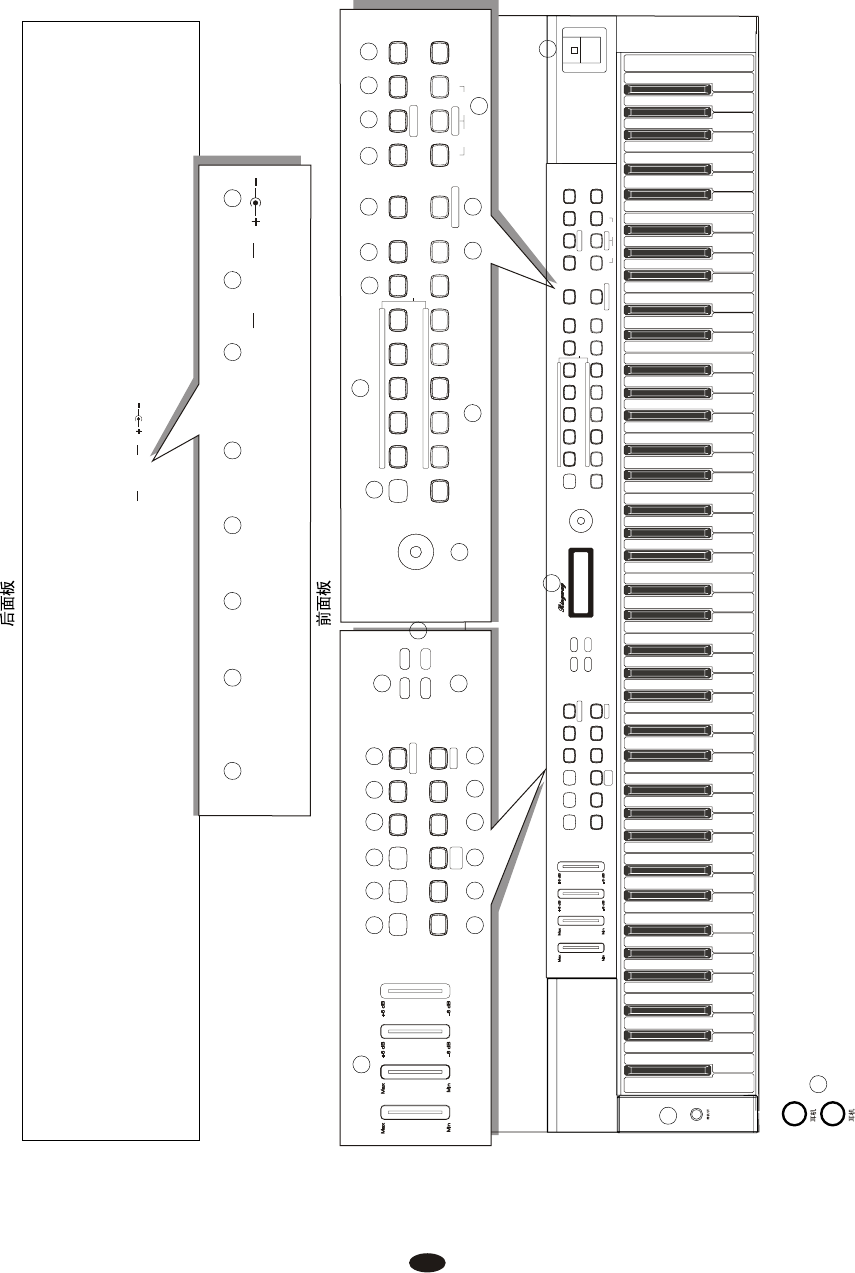
USB TO DEVICE
DC 12V
DC 12V
1
2
1
2
3
4 5 6 7 8 9
10 11 12 13 14 15
16
17
18
19
20
21 22 23 24 25 26 27 28
29 30 31 32
34
33
35 36 37 38 39 40 41
42
ACC.
ACC.
VOLUME
VOLUME
TRANS.
TRANS.
TUNE
TUNE
BASS
TREBLE
TREBLE
TEMPO / TAP
TEMPO / TAP
FILL IN 1
FILL IN 1
STORE / BANK
STORE / BANK
MASTER
MASTER
VOLUME
FADE
FADE
SYNCHRO
SYNCHRO
INTRO
INTRO
METRONOME
METRONOME
DATA CONTROL
DATA CONTROL
NUMBER
NUMBER
MIXER
MIXER
KEYMODE
KEYMODE
ENDING
ENDING
START
START
STOP
STOP
FILL IN 2
FILL IN 2
VARIATION
VAR IAT IO N
O.T.S
FUNCTION
FUNCTION
ENTER
ENTER
TG8862
VOICE
VOICE PIANO
ORGAN
ORGAN GUITAR
BASS
BASS
USER VOICE
USER VOICE
STYLE
8BEAT
8 BEAT
BALLAD
BALLAD
DANCE
DANCE
DISCO
DISCO
USER STYLE
USER STYLE
M1
M1
M2
M2
M3
M3
M4
M4
M5
M5
1 2 3 4 5
6 7 8 9 0
DUAL
GRAND PIANO
GRAND PIANO
FREEZE
FREEZE
TOUCH
TOUCH
DEMO / LEARN
DEMO / LEARN
CHORD
CHORD
DICTIONARY
DICTIONARY
USER EDIT
USER EDIT
REVERB
REVERB
CHORUS
CHORUS
USB FILE
USB FILE
RECORD
RECORD
PLAY / LOAD
PLAY / LOAD
SAVE TO
SAVE TO
MULTI
MULTI
DELETE
DELETE
STORE / BANK
STORE / BANK
DATA CONTROL
DATA CONTROL
NUMBER
VOICE
VOICE PIANO
ORGAN
ORGAN
GUITAR
GUITAR
BASS
BASS
USER VOICE
USER VOICE
STYLE
8 BEAT
8BEAT
BALLAD
BALLAD
DANCE
DANCE
DISCO
DISCO
USER STYLE
USER STYLE
M1 M2 M3 M4 M5
1 2 3 4 5
6 7 8 9 0
DUAL
DUAL
GRAND PIANO
GRAND PIANO
FREEZE
FREEZE
TOUCH
TOUCH
DEMO / LEARN
DEMO / LEARN
CHORD
CHORD
DICTIONARY
DICTIONARY
USER EDIT
USER EDIT
REVERB
REVERB
CHORUS
CHORUS
USB FILE
USB FILE
RECORD
RECORD
PLAY / LOAD
PLAY / LOAD
SAVE TO
SAVE TO
MULTI
MULTI
DELETE
DELETE
+
-
I
I
I
I
I
I
I
I
I
I
I
I
I
I
I
I
I
I
I
I
I
I
I
I
I
I
I
I
I
I
I
I
I
I
I
I
I
I
I
I
I
I
I
I
I
I
I
I
I
I
I
I
I
I
I
I
I
I
I
I
I
I
I
I
I
I
I
I
I
I
I
I
I
I
I
I
I
I
I
I
I
I
I
I
I
I
I
I
I
I
I
I
I
I
I
I
I
I
I
I
I
I
I
I
I
I
I
I
I
I
I
I
I
I
I
I
I
I
I
I
I
I
I
I
I
I
I
I
I
I
I
I
ACC.
ACC.
VOLUME
VOLUME
TRANS.
TRANS.
TUNE
TUNE
BASS
BASS
TREBLE
TREBLE
TEMPO / TAP
TEMPO / TAP
FILL IN 1
FILL IN 1
MASTER
MASTER
VOLUME
VOLUME
FADE
FADE
SYNCHRO
INTRO
INTRO
METRONOME
METRONOME
MIXER
MIXER
KEYMODE
KEYMODE
ENDING
ENDING
START
START
STOP
FILL IN 2
FILL IN 2
VAR I ATIO N
VAR I ATIO N
O.T.S
O.T.S
FUNCTION
FUNCTION
ENTER
ENTER
+
-
I
I
I
I
I
I
I
I
I
I
I
I
I
I
I
I
I
I
I
I
I
I
I
I
I
I
I
I
I
I
I
I
I
I
I
I
I
I
I
I
I
I
I
I
I
I
I
I
I
I
I
I
I
I
I
I
I
I
I
I
I
I
I
I
I
I
I
I
I
I
I
I
I
I
I
I
I
I
I
I
I
I
I
I
I
I
I
I
I
I
I
I
I
I
I
I
I
I
I
I
I
I
I
I
I
I
I
I
I
I
I
I
I
I
I
I
I
I
LINE OUT
LR
LINE IN
LINE IN
MIDI IN
MIDI INMIDI OUT
MIDI THRU
MIDI THRU
PEDAL
USB TO HOST
USB TO HOST
DC 12V
DC 12V
LINE OUT
LINE OUT
LR
LINE IN
LINE IN
MIDI IN
MIDI IN
MIDI OUT
MIDI OUT
MIDI THRU
MIDI THRU
PEDAL
PEDAL
USB TO HOST
USB TO HOST
1

Panel Contents
2
Top Panel
1. STANDBY/ON
2. MASTER VOLUME
ACC.VOLUME
BASS/TREBLE
3. LCD DISPLAY
4. [FADE] Button
5. [TEMPO/TAP] Button
6. [METRONOME] Button
7. [TRANS./TUNE] Button
8. [MIXER] Button
9. [KEYMODE] Button
10. [SYNCHRO] Button
11. [INTRO/ENDING] Button
12. [START/STOP] Button
13. [FILL IN 1] Button
14. [FILL IN 2/VARIATION] Button
15. [O.T.S] Button
16. [FUNCTION] Button
17. [ENTER] Button
18. [+/ -] Button
19. [DATA CONTROL] Button
20. [VOICE/STYLE] Button
21. VOICE and STYLE SELECT/
Number 0~9 Button
22. [NUMBER ] Button
23. [DUAL ] Button
24. [GRAND PIANO] Button
25. [CHORD DICTIONARY] Button
26. [USER EDIT] Button
27. [REVERB] Button
28. [CHORUS] Knob
29. [STORE/BANK] Buttons
[M1~M5] Button
[FREEZE] Button
30. [TOUCH] Buttons
31. [DEMO/LEARN] Button
32. [USB FILE] Button
[RECORD] Button
[PLAY/LOAD] Button
[SAVE TO] Button
33.USB TO DEVICE
Rear
34
Panel
. PEDAL Jack
35. USB TO HOST Jack
36. MIDI THRU Jack
37. MIDI OUT Jack
38. MIDI IN Jack
39. LINE OUT Jack
40. LINE IN JACK
LINE OUT(R/L)
41. DC 12V Jack
42. PHONES Jack
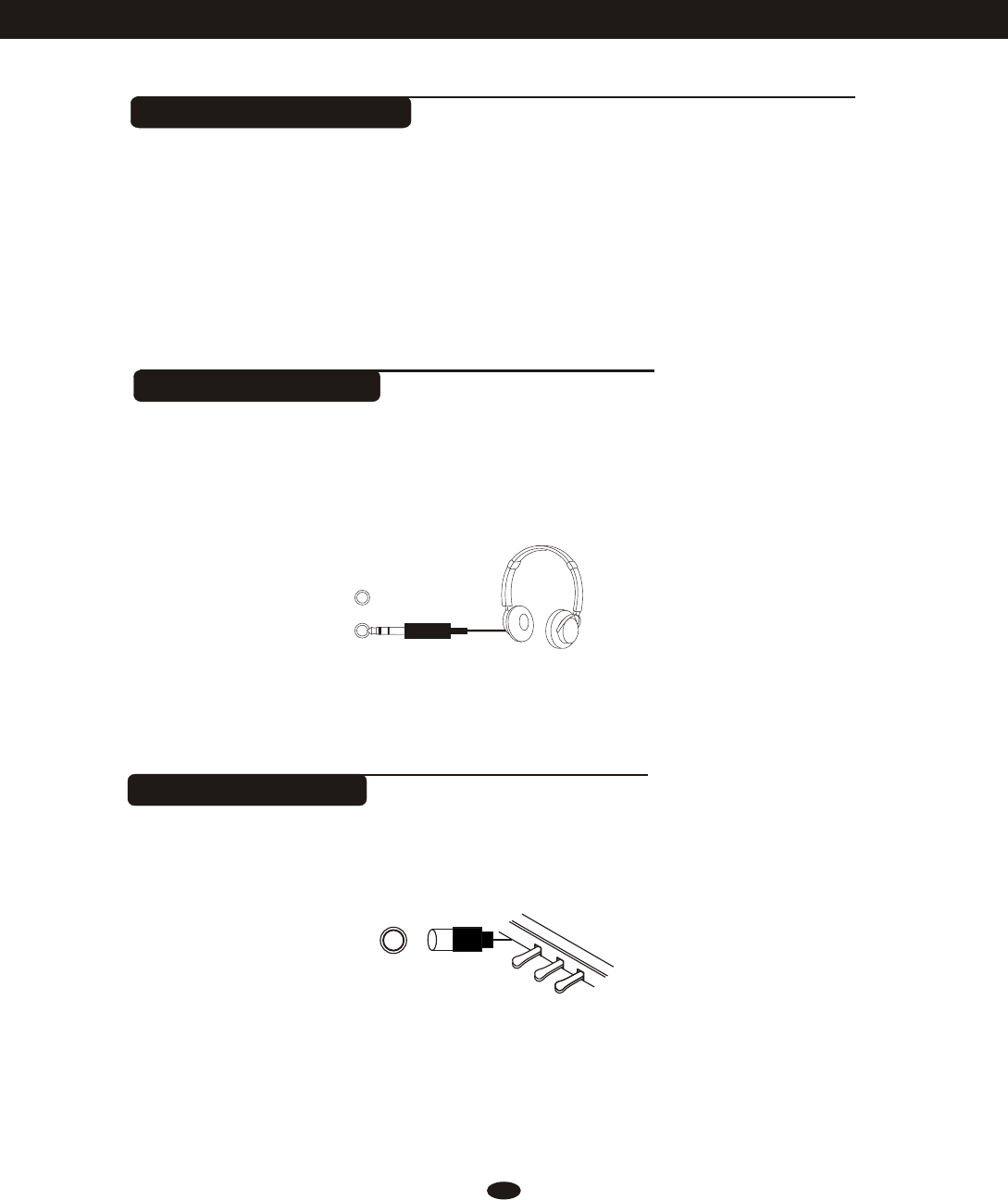
Connectors
3
Using DC Power Jack
Using Headphones
Two sets of standard stereo headphones can be plugged in here for private
practice or late-night playing. The internal speaker system is automatically shut
off when a pair of headphones is plugged into PHONES jacks.
PHONES 2
PHONES 1
Plug the DC output cable from the provided power adapter into DC IN jack in the
bottom panel of your instrument, then plug the AC cable of your power adapter into
the AC power socket. Please confirm your country’s Mains voltage is compatible
with the supplied power adaptor. Most of the world’s electrical supply is 220v or
240v 50Hz - Some countries such as the USA are on 110v / 60Hz.
Using Foot Pedals
Connect the plug of the foot pedal unit to the pedal jack on the rear panel.
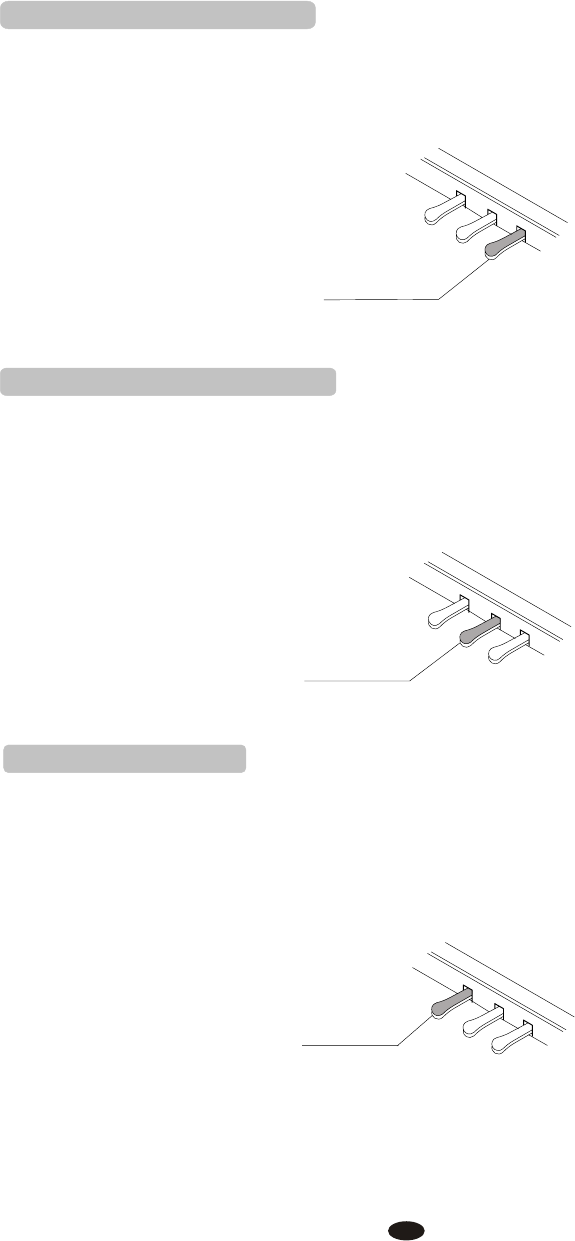
2. Sostenuto Pedal (Center)
If you play a note or chord on the keyboard and press the sostenuto pedal while
the notes are held, those notes will be sustained as long as the pedal is held, but
all subsequently played notes will not be sustained.
SOSTENUTO
It performs the same function as the damper pedal on an actual acoustic piano,
letting you sustain the sound of the voices even after releasing your fingers from
the keys.
SUSTAIN
1. Damper Pedal (Right)
3. Soft Pedal (Left)
The Soft Pedal controls the sound volume. Press the pedal to decrease the
output sound volume.
SOFT
4
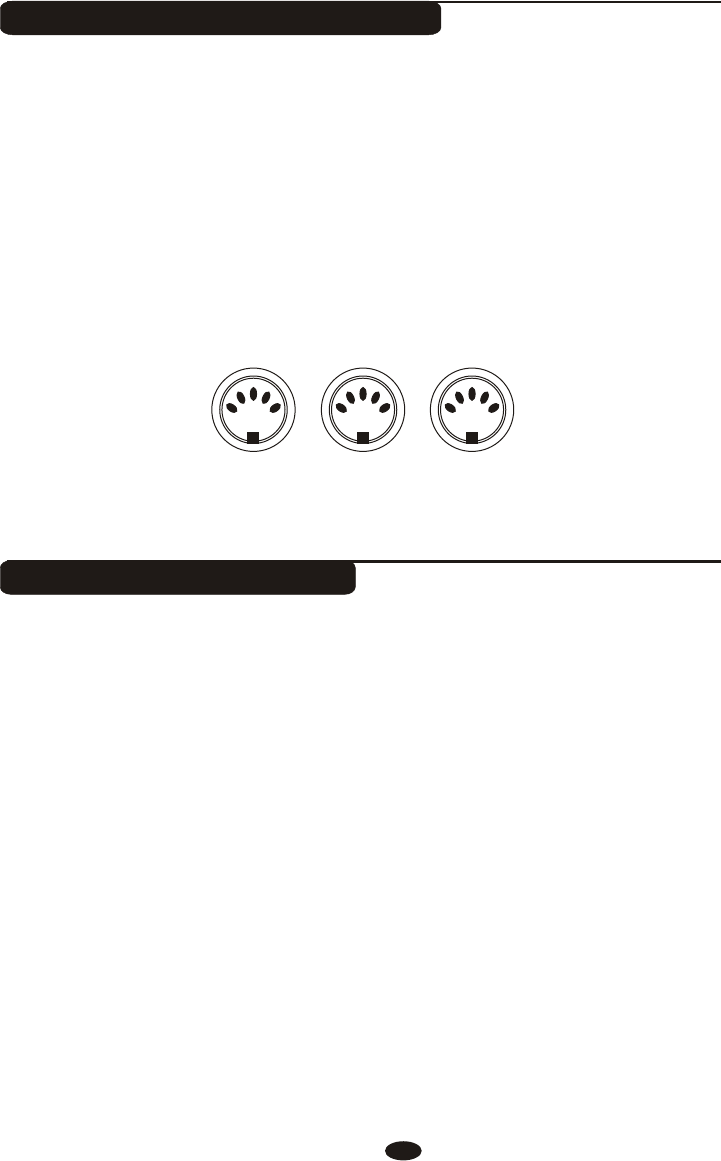
Using MIDI THRU/IN/OUT Jack
The Midi In connector receives the Midi data from an external Midi device.
The Midi Out connector transmits Midi data generated by the instrument to
other Midi instruments.
The Midi THRU connector retransmits any data from the Midi In directly to
other Midi devices.
Using Line IN/OUT Jack
The audio output from other sound system connected to the LINE IN jack on
the bottom panel can be mixed with the sound of the unit. This function is
convenient when you want to play along with a favourite song.
The Line out jack can be used to deliver the output of the piano to a keyboard
amplifier, stereo sound system, mixing console or tape recorder.
MIDI IN
MIDI OUT
MIDI THRU
5
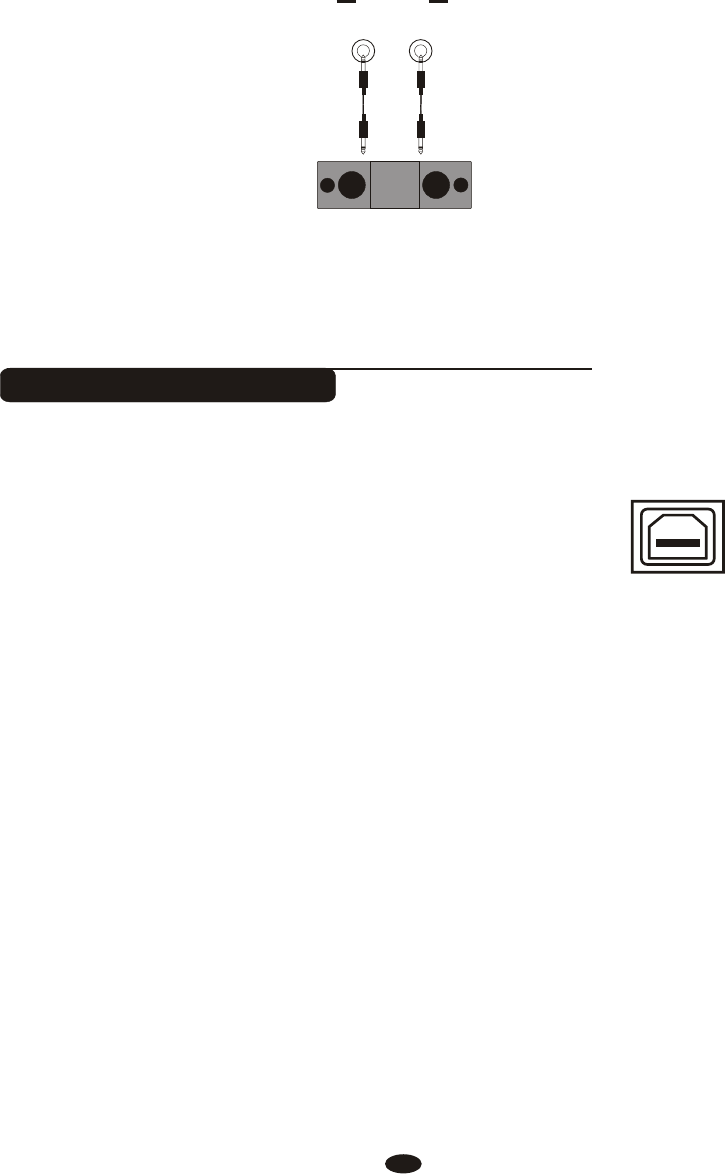
USB-MIDI/USB AUDIO
This product allows the transfer of MIDI over USB.
There is a specific way in which the MIDI signals are
routed for maximum flexibility. In a standard Digital
Piano, the built-in keyboard sends MIDI signals to the
internal sound bank as well as the 5-pin MIDI output.
In this digital piano, the keyboard not noly sends MIDI
to the internal sound bank (just like normal) but also
sends MIDI simultaneously to the internal MIDI
connection which hooks up inside the device to the
Audio Interface.
It is the Audio Interface that controls the USB-MIDI.
USB AUDIO interface is a digital audio interface. By USB cable, you can digitally
transfer intact audio signals of PC to
when you play this instrument; likewise, you can transfer
intact audio signals of the instrument to PC to record and edit music.
this instrument, and enjoy it on this instrument
or use it for accompany
USB
TO HOST
USB
TO HOST
LINE OUT
LR
6
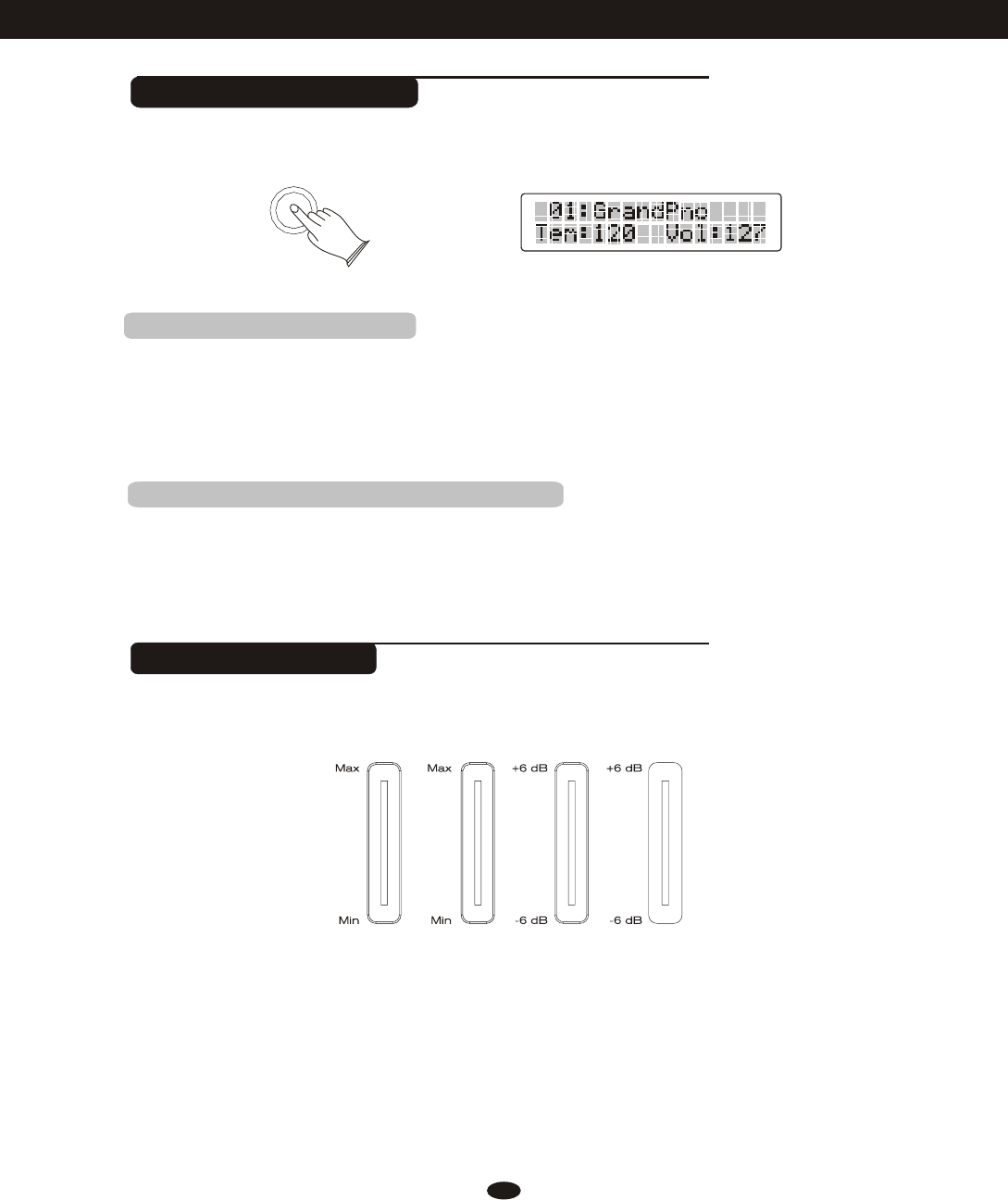
Basic Operation
STANDBY/ON Switch
Adjust the Volume
Turn the power on by pressing the [STANDBY/ON] switch, the panel LCD display
will light.
Use [MASTER VOLUME] control to adjust the volume to your desired level.
7
2.Deactivate the AUTO STANDBY function
This product will switch off automatically in 30 minutes after no any operation
on it. In this case, press the [standby/on] button to off mode, and press the
[STANDBY/ON] button again to turn the power switch on.
Hold the first white key and first black key on the left
side of the keyboard at the same time and then turn on
the unit to deactivate the AUTO STANDBY function.
STANDBY/ON
ACC.
ACC.
VOLUME
VOLUME BASS
TREBLE
TREBLE
MASTER
MASTER
VOLUME
I
I
I
I
I
I
I
I
I
I
I
I
I
I
I
I
I
I
I
I
I
I
I
I
I
I
I
I
I
I
I
I
I
I
I
I
I
I
I
I
I
I
I
I
I
I
I
I
I
I
I
I
I
I
I
I
I
I
I
I
I
I
I
I
I
I
I
I
I
I
I
I
I
I
I
I
I
I
I
I
I
I
I
I
I
I
I
I
I
I
I
I
I
I
I
I
I
I
I
I
I
I
I
I
I
I
I
I
I
I
I
I
I
I
I
I
I
I
1.AUTO STANDBY
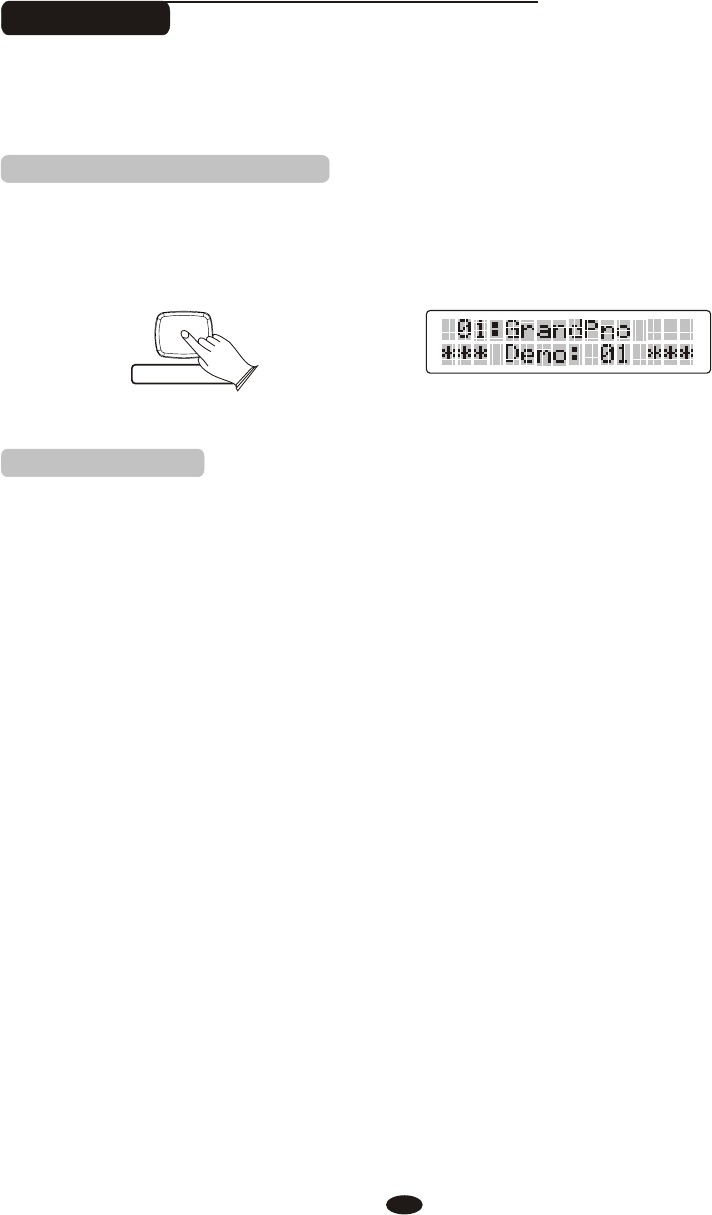
Demo Play
There are 16 demo songs that you can play individually. Here's how you can
select and play the demo songs .
1. Listen to the Demo Song
Press [DEMO/LEARN] button to play the demo songs in sequence. Use [+/-]
buttons or [DATA CONTROL] knob to select the number of the song you want to
play.
2. Stop Playing
Press [DEMO/LEARN] button again to stop playing.
DEMO / LEARN
8
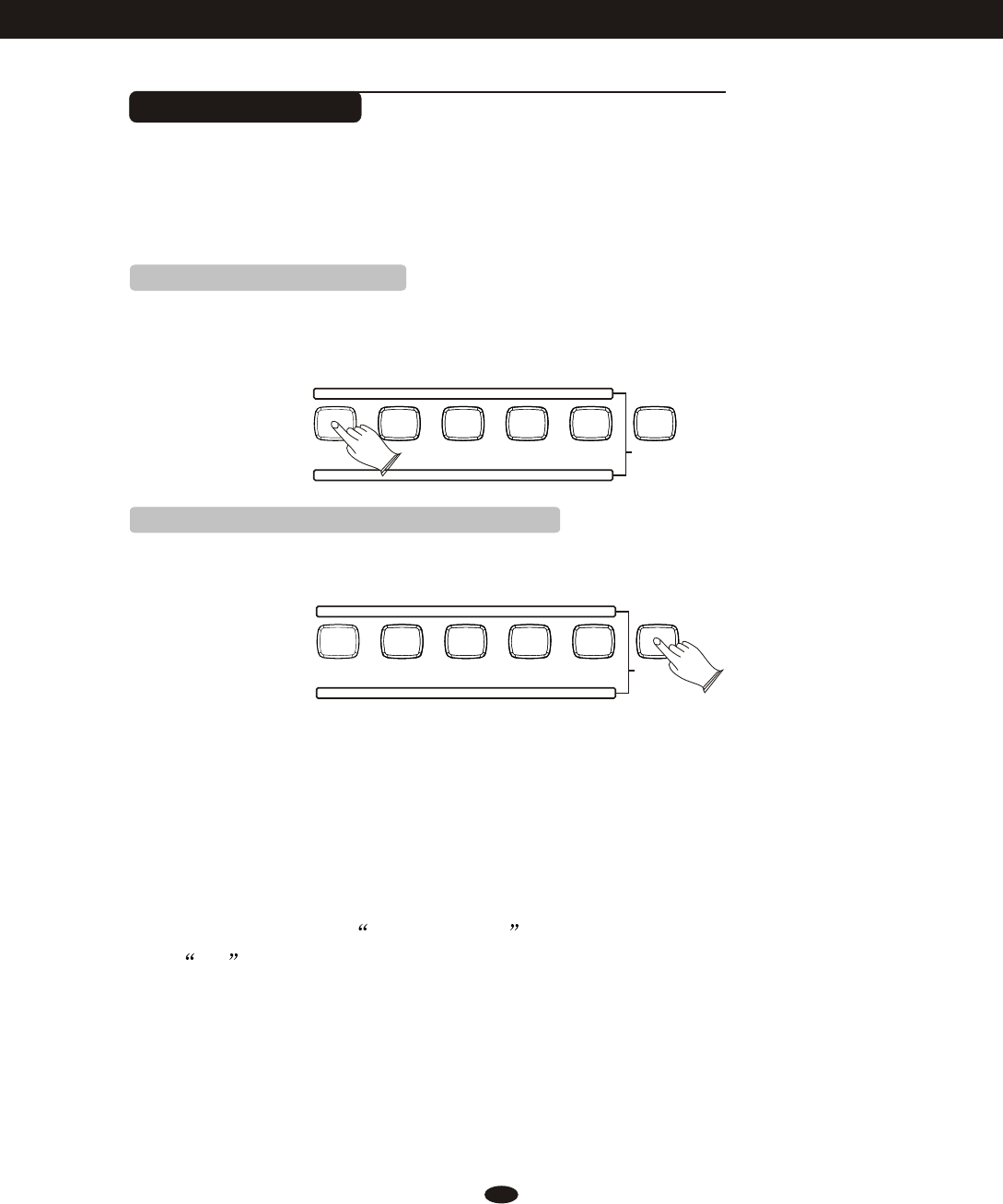
2.Use Number Button and [+/-] Buttons
Press the [NUMBER] button, the indicator light color is red. Now you can use
number 0~9 or [+/-] Buttons to select voice.
Voice 01~09 :press number 0 first, then press 1~9
Voice 10~99 : press two numeric buttons directly, for example: to select 99
press the number 9 button and then the number 9 to select the
sound.
Voice 100~479: press the number Press 1 to 4 of a button and hold it until
the number appears on the display, then you can enter the tens
and ones digits.
For example: to select 123 Sea Shore press number 1 button and hold it
until 1_ appears, then press the number 2 and the number 3 buttons to select
the sound.
You also can press the [+/- ] buttons until the desired voice appears on the display.
Selecting a Voice
Your instrument has 479 voices,include 128(01-128) GM standard voices.
[+] / [-] buttons or
[DATA CONTROL] knob
You can use the voice button on the panel, use
to select voice.
1.Selecting Voice Directly
When the [VOICE/STYLE] button is unlighted, means your piano is in Voice
mode, now you can use the voice button on the panel to select voice directly, the
first row of buttons below as the direct sound.
Voices
PIANO
PIANO
8 BEAT
8 BEAT
8 BEAT
8 BEAT
1 2 3 4 5
1 2 3 4 5
6
6
NUMBER
NUMBER
NUMBER
NUMBER
ORGAN
ORGAN
ORGAN
GUITAR
GUITAR
GUITAR
GUITAR
BASS
BASS
USER VOICE
USER VOICE
USER VOICE
USER VOICE
BALLAD
BALLAD
BALLAD
BALLAD
DANCE
DANCE
DISCO
DISCO
USER STYLE
USER STYLE
USER STYLE
USER STYLE
7
7
8
8
9
9
0
0
9
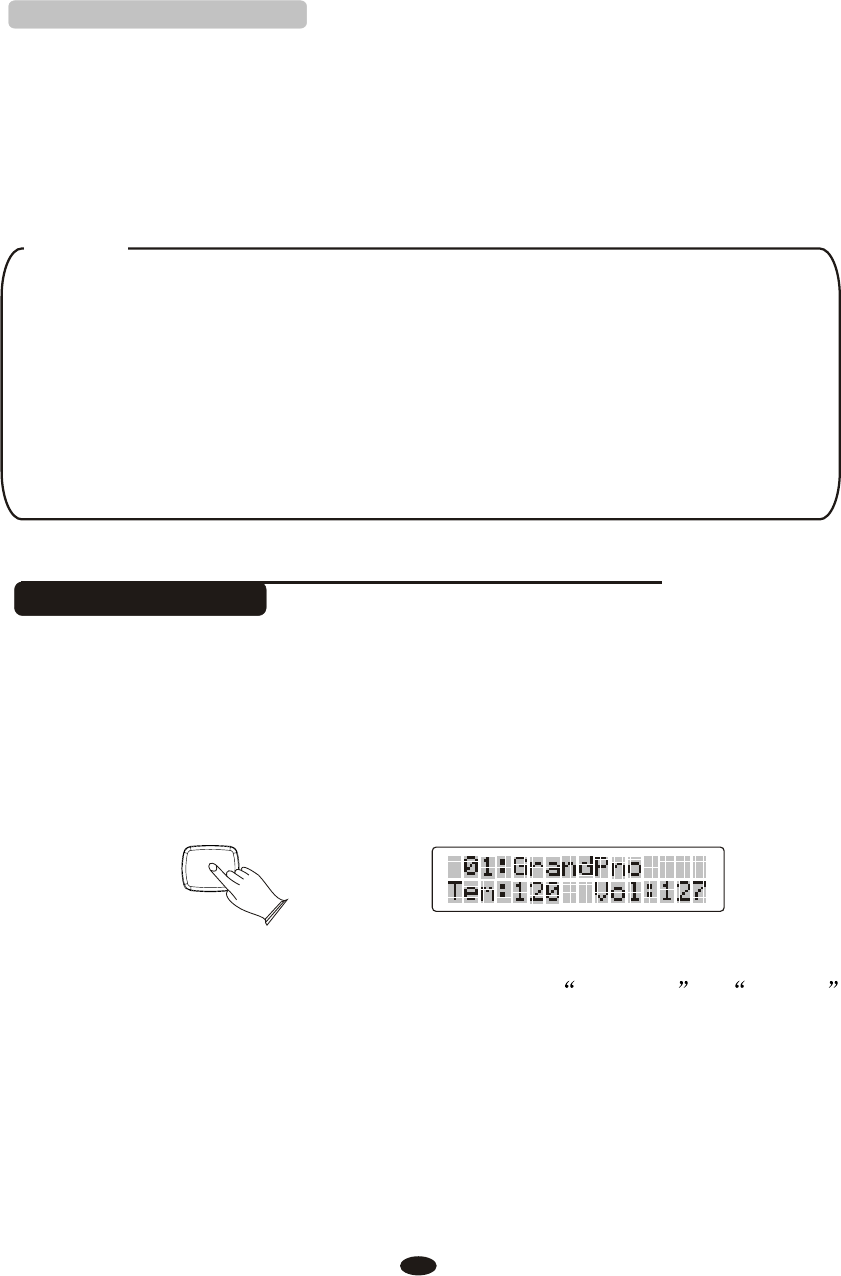
NOTE
When [VOICE/STYLE] button is unlighted, it meams the current selection
in VOICE mode .
When [VOICE/STYLE] button is lighted, it meams the current selection in
STYLE mode .
When [NUMBER] button is unlighted, it meams the current selection in
direct VOICE or STYLE mode.
When [NUMBER] button is lighted, it meams the current selection in
NUMBER SELECT mode .
Dual Mode
In dual mode two voices may be played simultaneously, each at selected volumes.
press [DUAL] button and the
To adjust the volume of the Dual Voice, please refer to D.Volume in MIXER
function. P11
to exit.
indicator is flashing, then press the voice button to
select the second voice.No operation in 4 seconds, the display will be returned to
the Main Voice mode.
Press [DUAL] button again
DUAL
In the Voice Mode, clockwise or counterclockwise rotation [DATA CONTROL],
can quickly select the Voice.
Clockwise rotation is increasing rapidly, counterclockwise rotation for the rapid
decline.
3.Use Data Control Knob
10
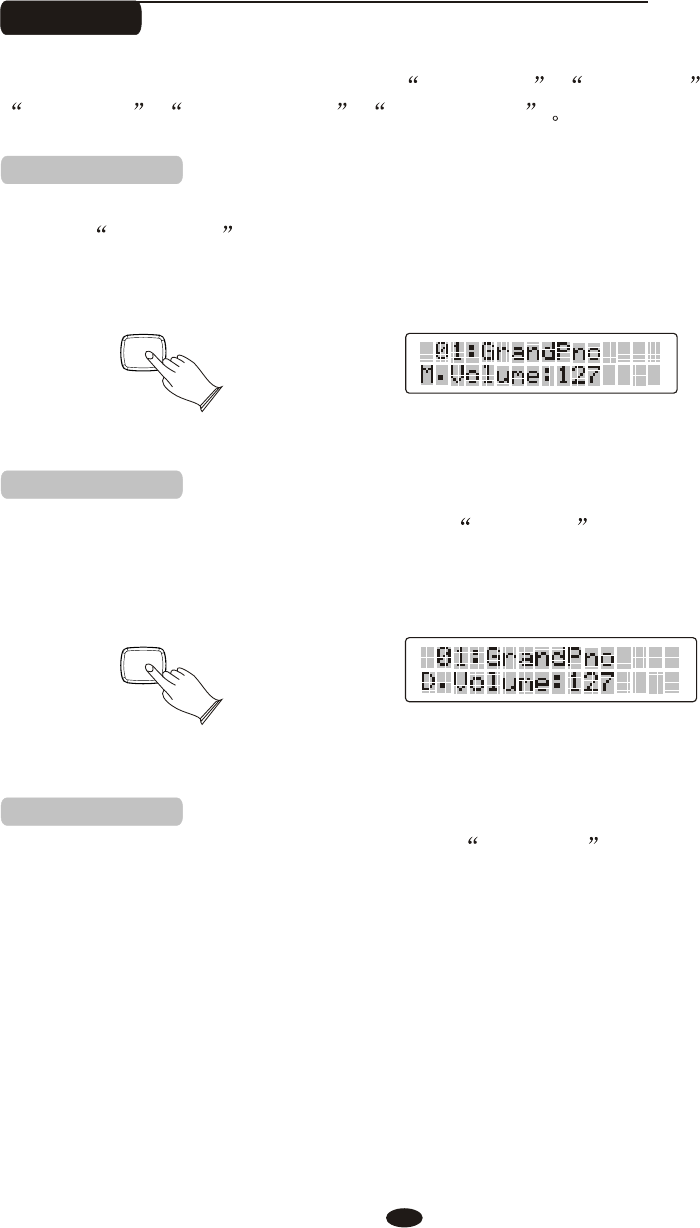
Mixer
Press [MIXER]button ,you can select M
M
.Volume , S.Volume ,
D.Volume , Metro Volume , USB Volume
When not in Dual mode or Split mode, press the [MIXER] button repeatedly
to select .Volume , then use [Data Control] knob
to set the Main Volume. Range: 00~127. Default: 127.
Press the [MIXER] button repeatedly to select S.Volume , indicator
is flashing, then use [Data Control] knob to set the main
volume. Range: 00~127. Default: 127.
Press the [MIXER] button Repeatedly to select D.Volume , indicator
is flashing, then use [Data Control] knob to set the Main
Volume. Range: 00~127. Default: 127.
[+/-] Buttons or
the
[+/-] Buttons or
the
[+/-] Buttons or
MIXER
MIXER
1. M.Volume
2. S.Volume
3. D.Volume
11
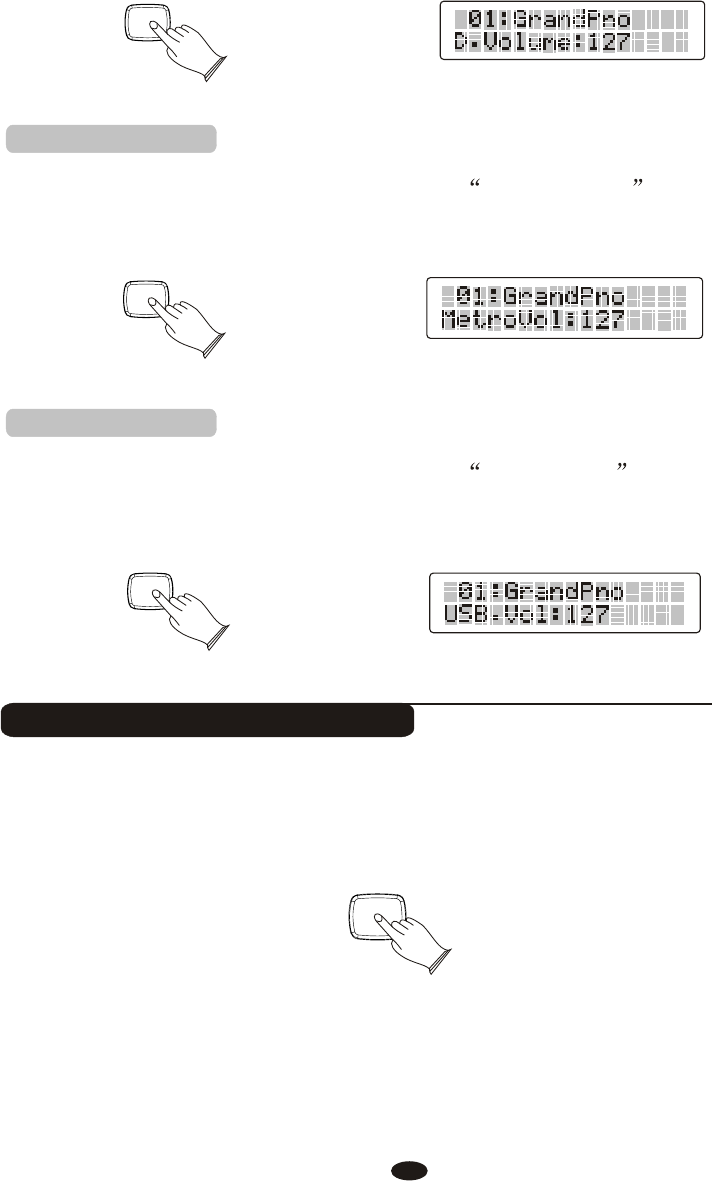
4. Metro Volume
Press the [MIXER] button Repeatedly to select Metro.Volume , then use
[Data Control] knob to set the Main Volume. Range: 00~127.
Default: 100.
[+/-]
Buttons or
5. USB Volume
Press the [MIXER] button Repeatedly to select USB Volume , then use
[Data Control] knob to set the Main Volume. Range: 00~127.
Default: 100.
[+/-]
Buttons or
Playing Portable Grand Piano
Press [GRAND PIANO] button.
This convenient function lets you instantly call up the Grand Piano voice.
MIXER
MIXER
MIXER
MIXER
MIXER
GRAND PIANO
12
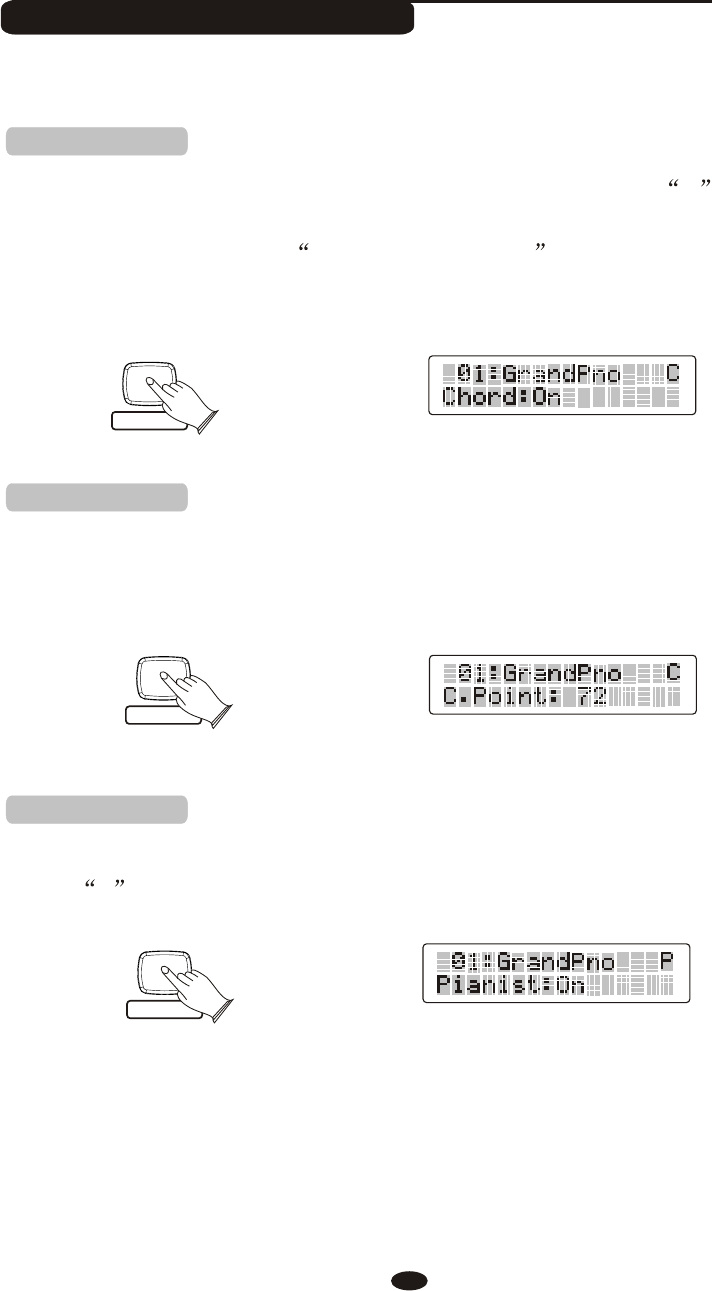
Keymode
You can adjust the chord, pianist, harmony, split piont, twin by pressing
[KEYMODE]button.
1. Chord mode
Press [KEYMODE] button, select chord mode, LCD will display C symbol in
the upper right corner of the screen. The specified left-hand section
of the keyboard becomes the Auto Accompaniment section, and chords played
in this section are automatically detected and used as a basis for fully automatic
accompaniment with the selected style.
(left 34 keys)
2. Chord point
Select Normal mode at first,and then hold down the [KEYMODE] button until the
display shows "C.Point", then use the [+/-] buttons or turn the data to set chord
point. Range:00~87.
3. Pianist mode
Press the [KEYMODE] button repeatedly to select keyboard mode, LCD will
display P symbol in the upper right corner of the screen.
KEYMODE
KEYMODE
KEYMODE
13
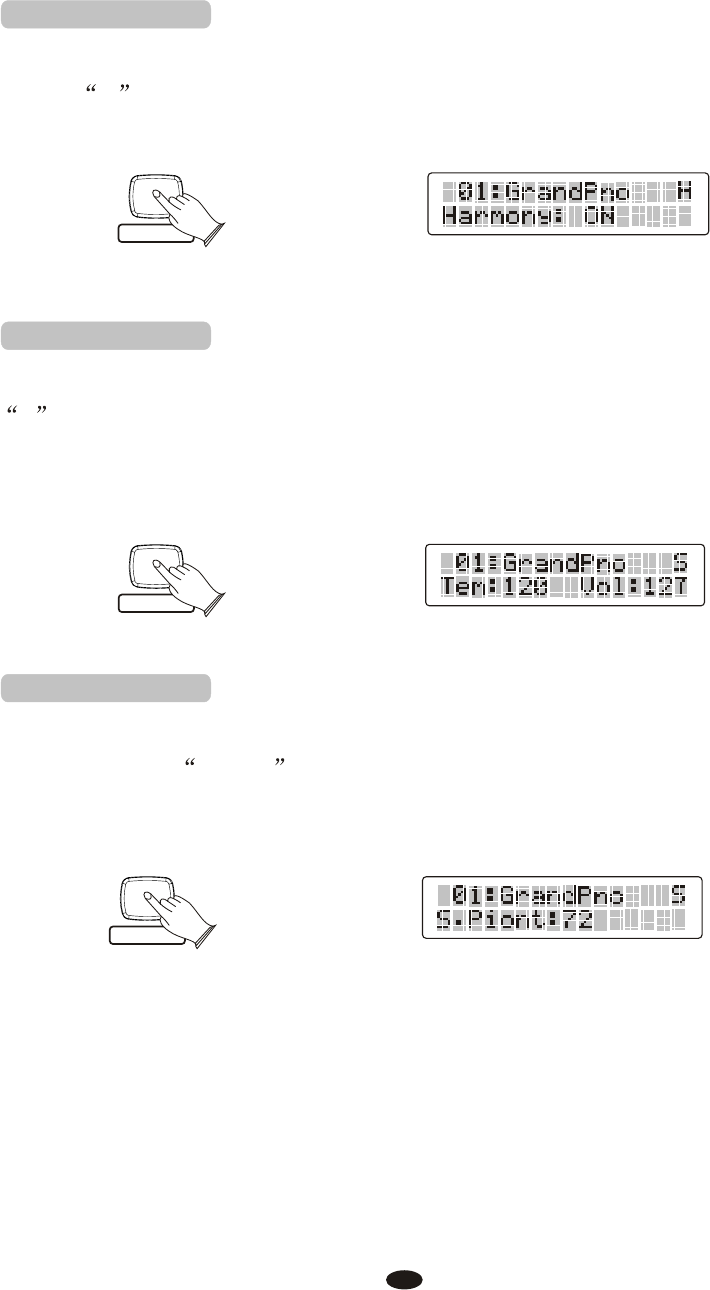
4. Harmony mode
Press the [KEYMODE] button repeatedly to select harmony mode, LCD will
display H symbol in the upper right corner of the screen.
5. Split mode
Press the [KEYMODE] button repeatedly to select split mode, LCD will display
S symbol in the upper right corner of the screen, your keyboard will be split
into sctions which means different voices can be played with the left and right
hands at the sanme time.
6. Split point
Select harmony mode at first,and then hold down the [KEYMODE] button until
the display shows S.Point , then use the [+/-] buttons or turn the data to set
split point. Range:00~87.
KEYMODE
KEYMODE
KEYMODE
14
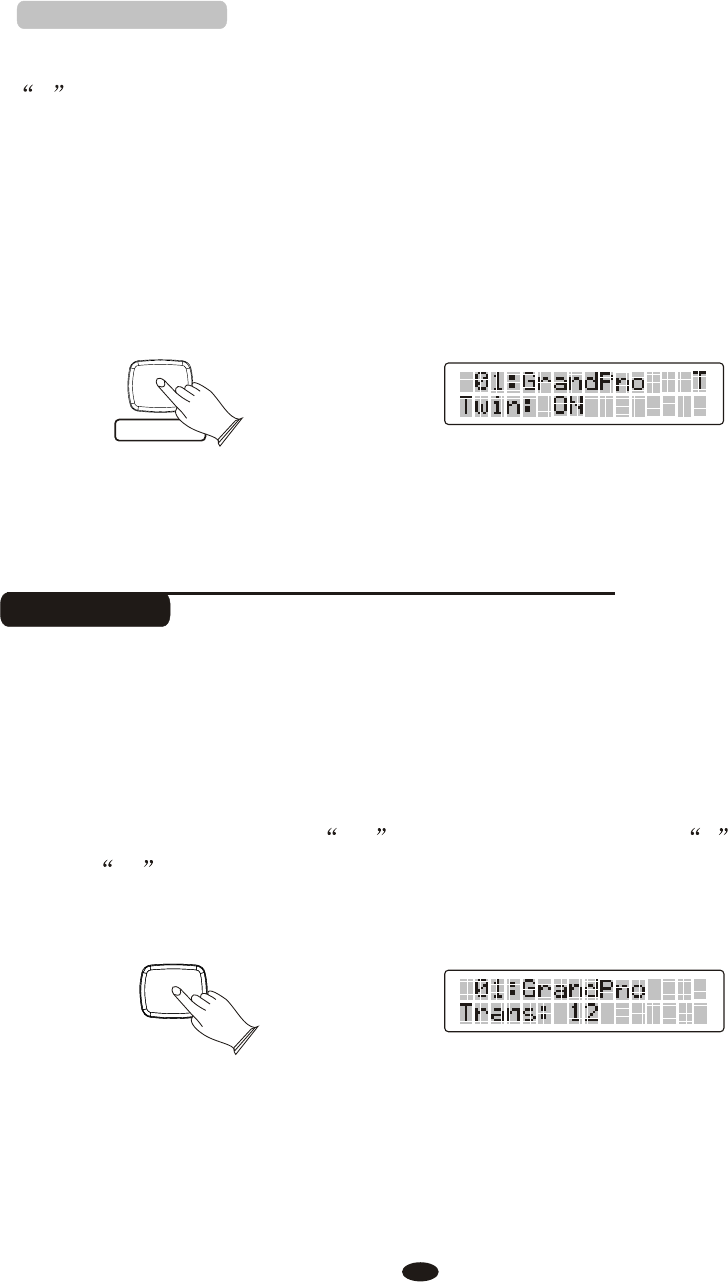
7. Twin mode
Press the [KEYMODE] button repeatedly to select twin mode, LCD will display
T symbol in the upper right corner of the screen, the keyboard will be separated
into two play areas.
#
Right: from C3 to C7
Left: from A-1 to C3
Transpose
The Transpose function allows you to change the pitch of the instrument in semitone
steps, up to a maximum setting of 12 semitones (a maximum of one octave up or down).
Press [ Use [+/- ] buttons to transpose up or down as required.
The transposition range is from -12 (down one octave) through 0 (normal
pitch) to 12 (up one octave).
TRANS./TUNE] button ,
KEYMODE
TRANS.
TUNE
15
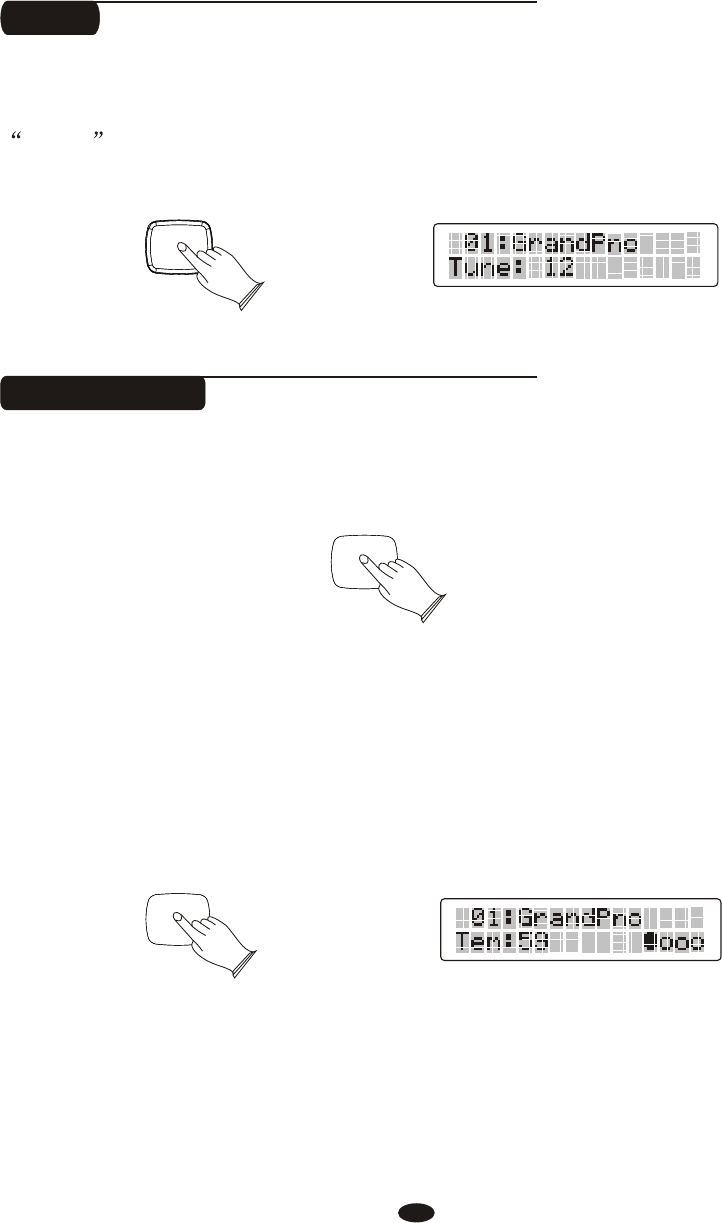
Tune
The function makes it possible to tune the pitch of your imstrument to match
other instruments.Press [ ] button repeatedly, LCD will display
TUNE , use [+/-] buttons to set Tune value:-64-63.
TRANS./TUNE
Tempo/Tap
Press the [TEMPO/TAP] button, use[+/-] buttons or [DATA CONTROL] knob to
decrease or increase the tempo, metronome and styles. Range: 20-280.
If you want to set the tempo before starting rhythm, you have to tap the button
4 times, automatic accompaniment of percussion can start automatically according
to the speed of your keys.
Tap on the button 2 times while rhythm is playing, the rhythm tempo are set as
your desired speed.
TEMPO / TAP
TEMPO / TAP
TEMPO / TAP
TRANS.
TUNE
16
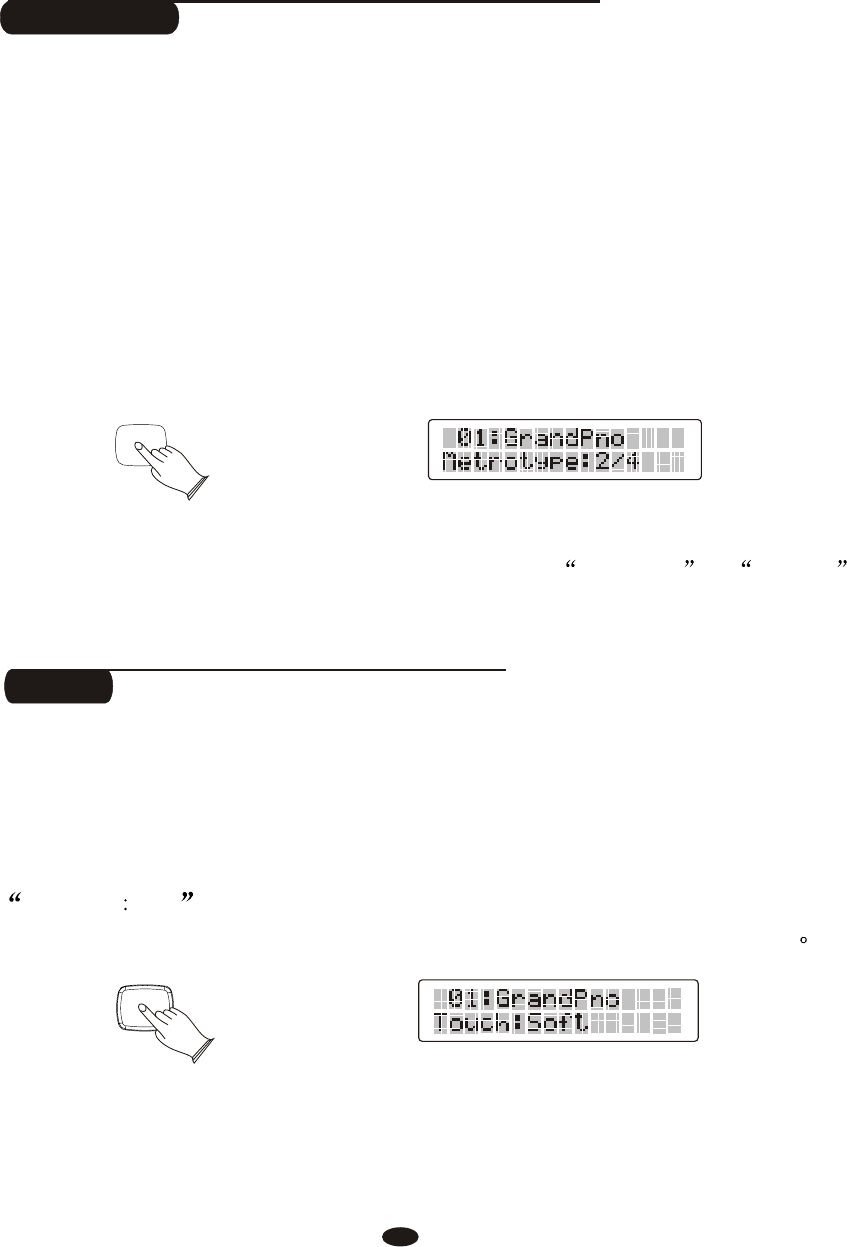
Metronome
Metronome is a convenient feature for practice, and it can also provide a solid
rhythmic guide when recording.
The metronome sound is alternately turned on and turned off by pressing
[METRONOME] button.
Time signature: 2/2,1/4, 2/4, 3/4, 4/4, 5/4,6/4, 3/8, 6/8, 7/8,9/8,12/8. 4/4
Metronom
Hold the [METRONOME] button to enter the page for selecting the time signature.
Then use the [+] and [-] buttons or the [DATA CONTROL] knob to select your
desired time signature.
(Default: )
To adjust the volume of the e, please refer to Metro.Vol in MIXER
function. P12
Touch
The touch function provides three different types of keyboard touch sensitivity
that can be selected to match different playing styles.When turn on the piano, the
touch sensitivity default is open.
Press [TOUCH] button, the button indicator is unlighted, LCD will display
Press [TOUCH] button again, the button indicator is
lighted, use [+/-] button to select 3 type of touch sensitivity:
FixTouch 100 . Then
Normal, Hard, Soft
METRONOME
TOUCH
17
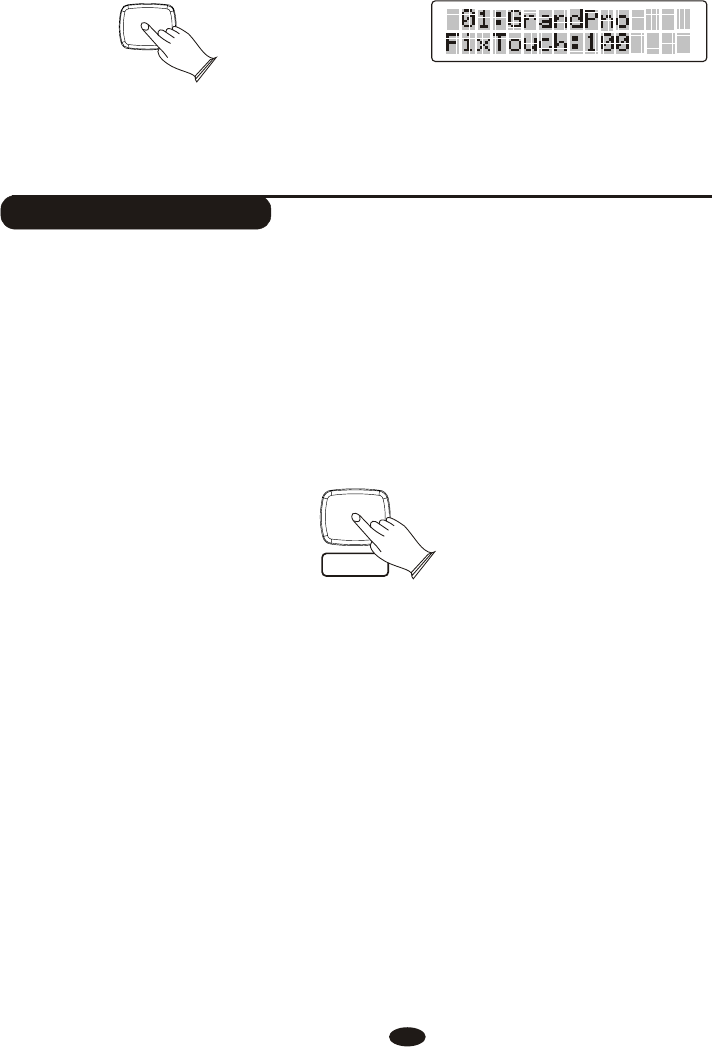
When touch sensitivity is off, Y use [+/-] buttons
or to select the value of Fixtouch volume.
the indicator is unlighted. ou can
[DATA CONTROL] knob Range:00~127.
Default: 100.
One Touch Setting
This function is actually a convenient feature which automatically selects a
suitable voice for you when you select a style.
Press [O.T.S] button repeatedly can turn on or turn off One Touch Setting.
In addition, various panel settings
(such as voice, effect, Tempo, etc.) that match the selected style can be recalled
with just a single button [O.T.S].
TOUCH
O.T.S
18
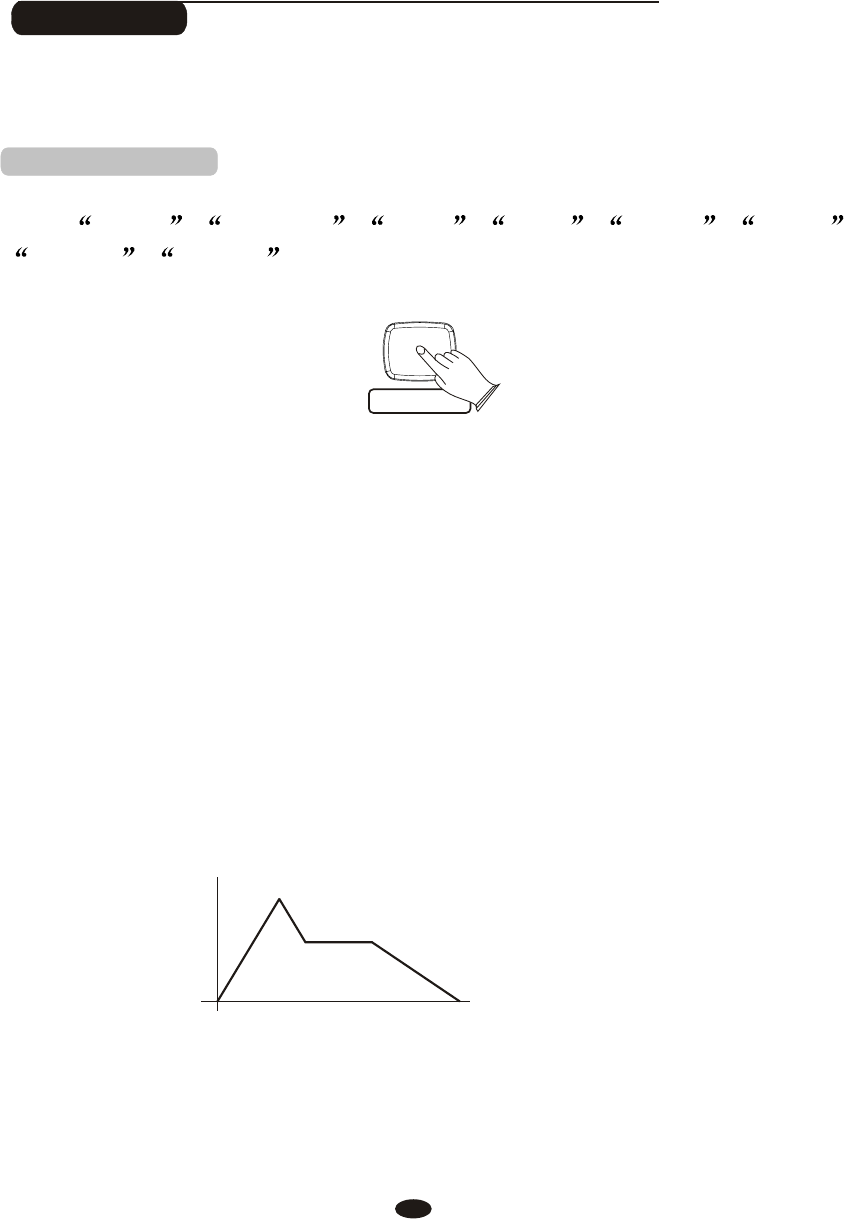
User Edit
Press [USER EDIT] button to edit the voice that you want, then save the voice to
the voice bank, So that you can easily use it.
1.User voice Contrl
[USER EDIT] button repeatedly to
select
Select the voice you want to edit and then press
Cut Off , Resonance , Attack , Decay , Release , Vibrate ,
Vibdepth , Vibdelay ,then use [+/-] buttons to set these parameters.
Cut Off: Is the control parameter to control the variation of audio and change the
filter range of the filter, which may produce the overtone's variation of the sound.
Range: 00~127. The default value is the median 64 without any effect. (Hint: Similar
to a treble knob on a Hi-Fi system.)
Resonance: Sets the volume of the overtone on Cutoff Frequency. Higher resonance
value produces higher volume of the overtone near the Cutoff Frequency.
Range: 00~127. The default value is the median 64 without any effect. (Hint: Similar
in effect to singing into your hands and making the size of your cupped hands bigger
and smaller.)
The parameters of Envelope' s variations are as follows:
Attack
Decay
Release
USER EDIT
19

Attack: How quickly the sound is produced after playing the note. Higher Attack
value numbers indicated in the LCD, cause the note to build up to full volume,
more slowly. (Like an Accordion) Lower Attack value numbers in the LCD screen,
produces faster key response. (Like a bell or gong or piano or jazz organ). The
sound is immediate.
Decay: Sets how quickly the sound produced dies away whilst holding the note
down. Guitars, bells, and other plink type sounds have a quick decay. Whereas a
slow decay or even zero decay would be an organ-like effect. If the key is held
down the sound will be produced for the entire time that the key is held down.
Release: The release time is how long the sound continues after the note is let go.
(Hint a Trumpet has a short release time, meaning the sound produced stops
immediately, but a gong has a very long release. After the strike of the gong, the
sound carries on for many seconds before fading away.
ate: Sets the speed of the vibrato effect. The higher values produce faster vibrato
speeds. Range: 00~127. The default value is the middle value of 64 without any
effect.
epth: Sets the intensity of the vibrato effect. The higher values produce strong
vibrato effects. Range: 00~127. The default value is the middle value of 64 without
any effect.
Vibdelay: set the delay time of the vibrato effect and higher value produces longer
delay time. Range: 00~127. The default value is the middle value of 64 without
any effect.
Vibr
Vibd
20
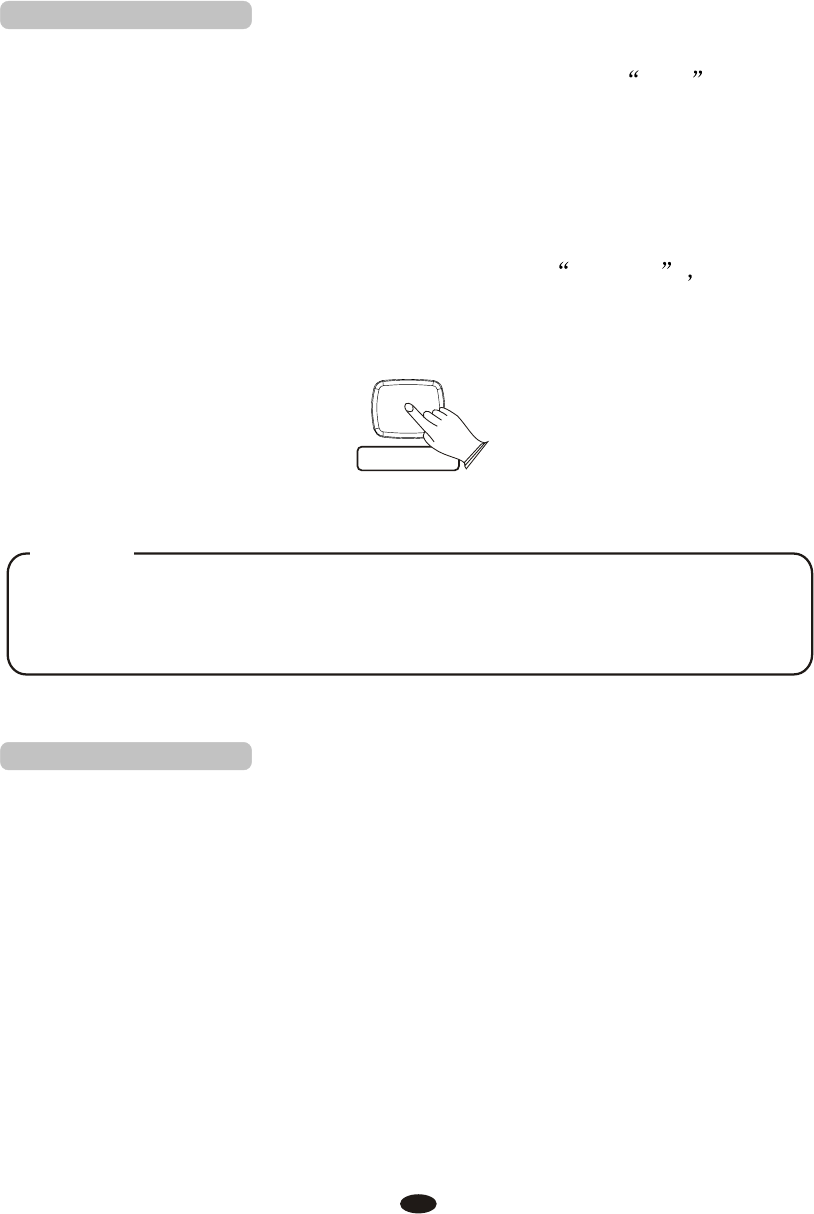
2.Save User Voice
Your piano contains 1 banks for saving User Voice. You can modify the voice's
Envelope, Vibrato and Filter parameters and then save this New sound or
edited Sound to the User Voice Bank.
Select a voice as the user voice and then press
ou can modify the voice's parameters
Hold down [ so that you
can save the edited voice to the desired User Voice Bank.
[USER EDIT] button, the buttons
indicator is lighted, y .
USER EDIT] button, LCD will display Save Ok
You can only save the VOICE data ( Envelope, Vibrato and Filter
settings) to User Voice Banks. Other functions such as Dual Voice,
Split Mode and so on, are not sound edits and cannot be stored here.
NOTE
3.Load User Voice
Press [USER EDIT] button directly to load the desired user voice.
USER EDIT
21
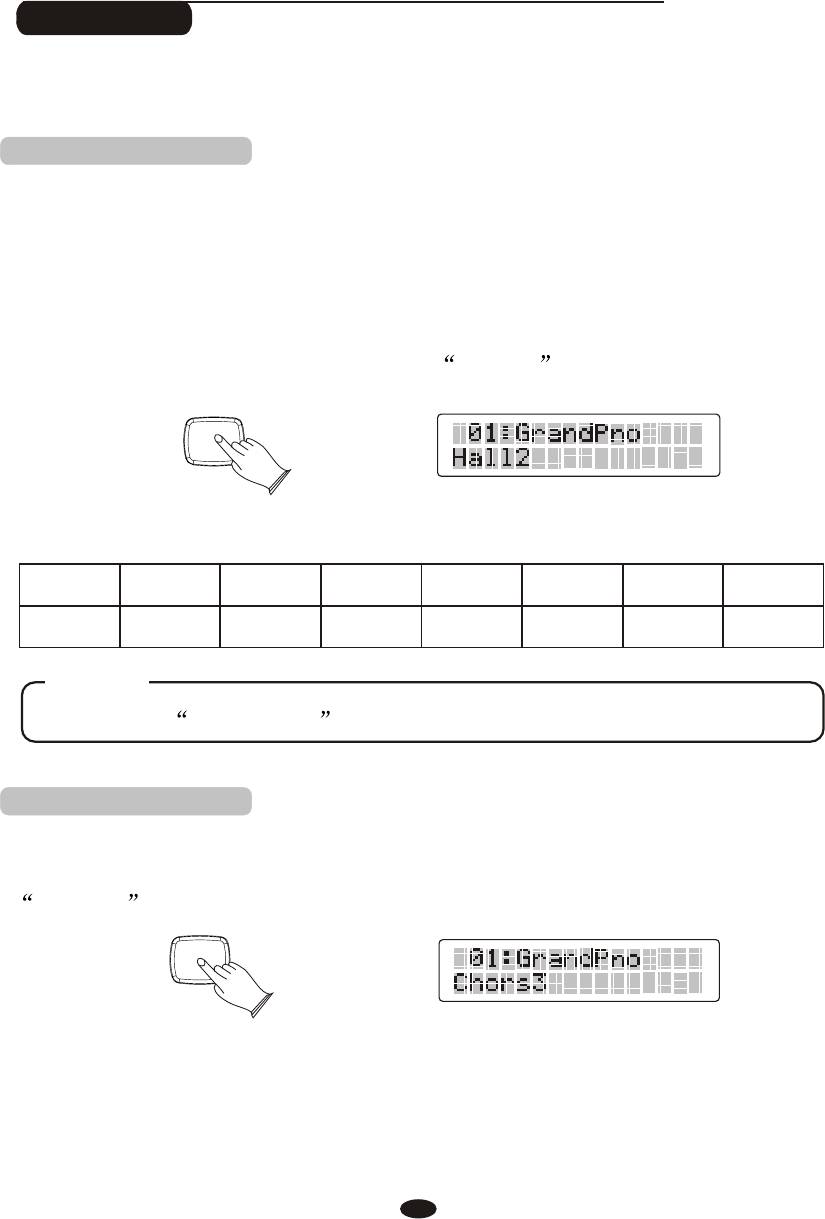
Effect
This function allows you to perform the overall sound in a realistic style.
The [REVERB] button selects a number of digital reverb effects that you can
use for extra depth and expressive power.
Press [REVERB] button can turn off or turn on the reverb effect.
Press [REVERB] button, use knob to select reverb
type. No reverb is produced when you select Rev O ff . Default type: Hall2.
[+/-] button or [DATA CONTROL]
1 2 3 4 5 6 7 8
Hall1 Hall2 Room1 Room2 Room3 Stage1 Stage2 Plate
Reference: Reverb Type in function menu. P37
NOTE
The reverb types in the list below can be selected from the reverb display.
Shimmering, broadening effect. Press [CHORUS] button,
select chorus type. No chorus is produced when you select
ChorsOff , and the indicator is off.
use
knob to
Default type: Chorus3.
[+/-] button or
[DATA CONTROL]
1. Reverb
REVERB
REVERB
2.Chorus
CHORUS
CHORUS
22
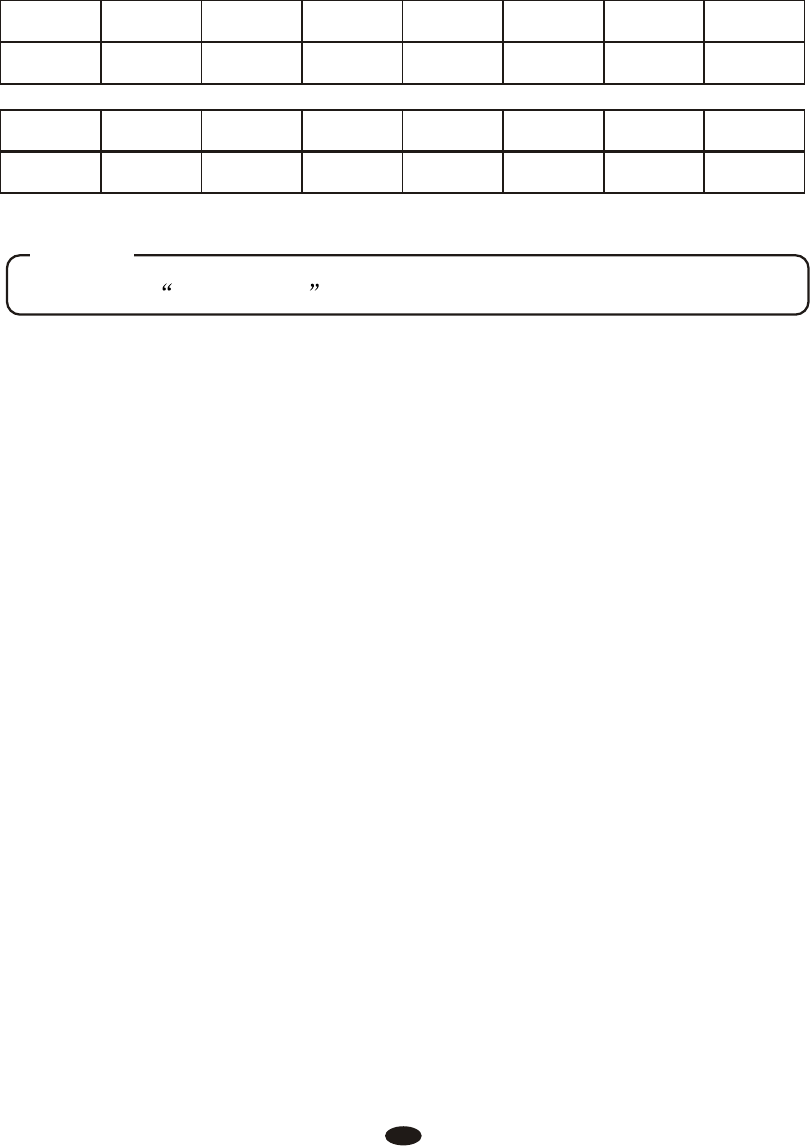
The chorus types in the list below can be selected from the chorus display.
1 2 3 4 5 6 7 8
Chorus1 Chorus2 Chorus3 Chorus4 Feedback Flanger1 ShrtDelay ShrtDlFb
9 10 11 12 1 3 14
Flanger2 Flanger3 Celeste1 Celeste2 Celeste3 Celeste4
Reference: Chorus Type in function menu. P41
NOTE
23
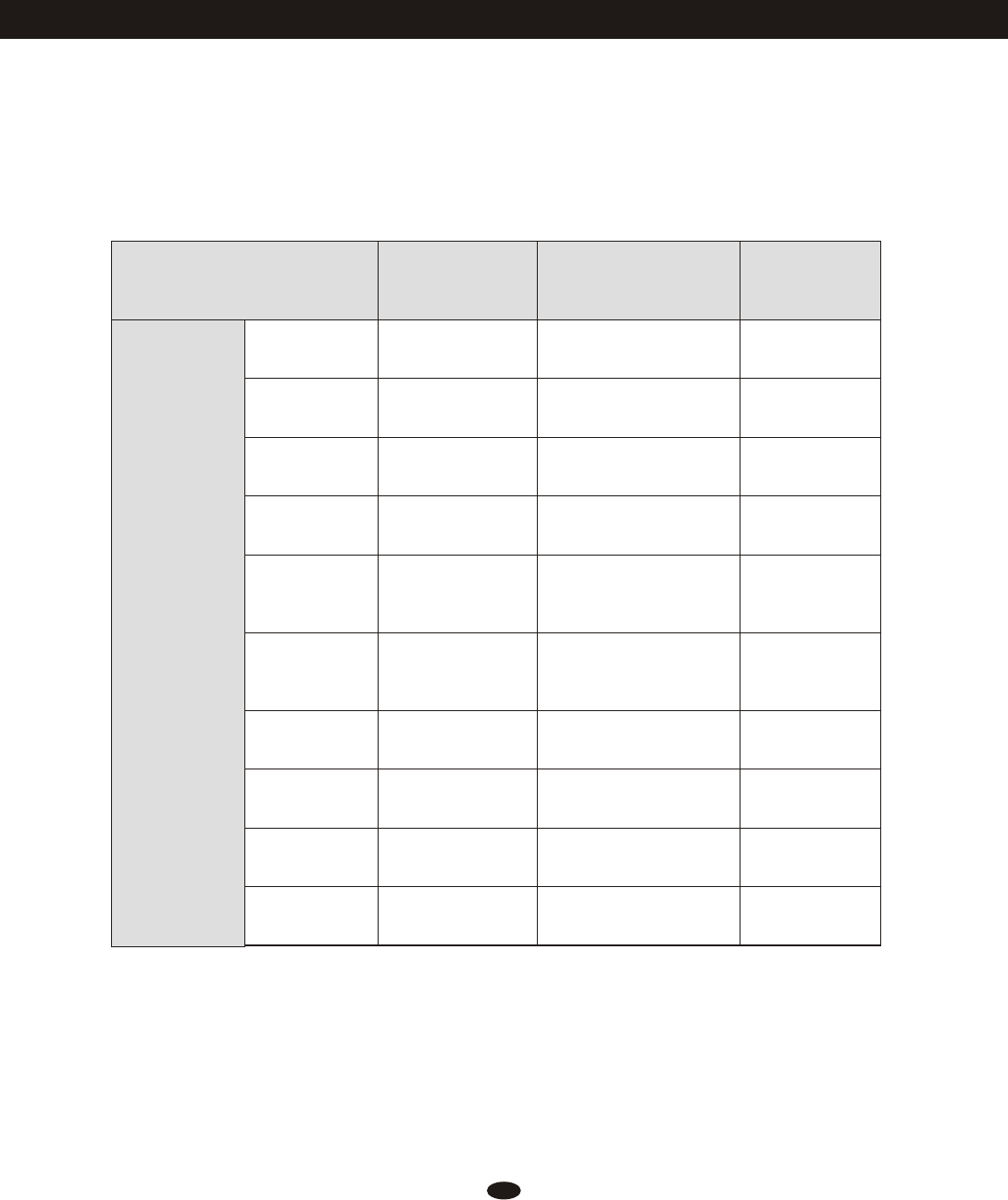
Funtion
Repeatedly press the [ ] button the function to call up the, see the table
below:
function
Funtion type LCD display Range Default
-64~63 00
00
00
00
00
00
Performance?
Main.Pan?
Main.Oct?
SpiltOct?
Dual.Oct?
MIDI In?
Arpeggio?
SplitPan?
Dual.Pan?
MIDI Out?
Local?
-64~63
-64~63
-2~2
-2~2
-2~2
01,02,OFF
ON/OFF
ON/OFF
01~16,OFF
OFF
ON
ON
ON
Main.Pan
Main.Oct.
SpiltOct.
Dual.Oct.
MIDI In
Arpeggio
SplitPan
Dual.Pan
MIDI Out
Local
24
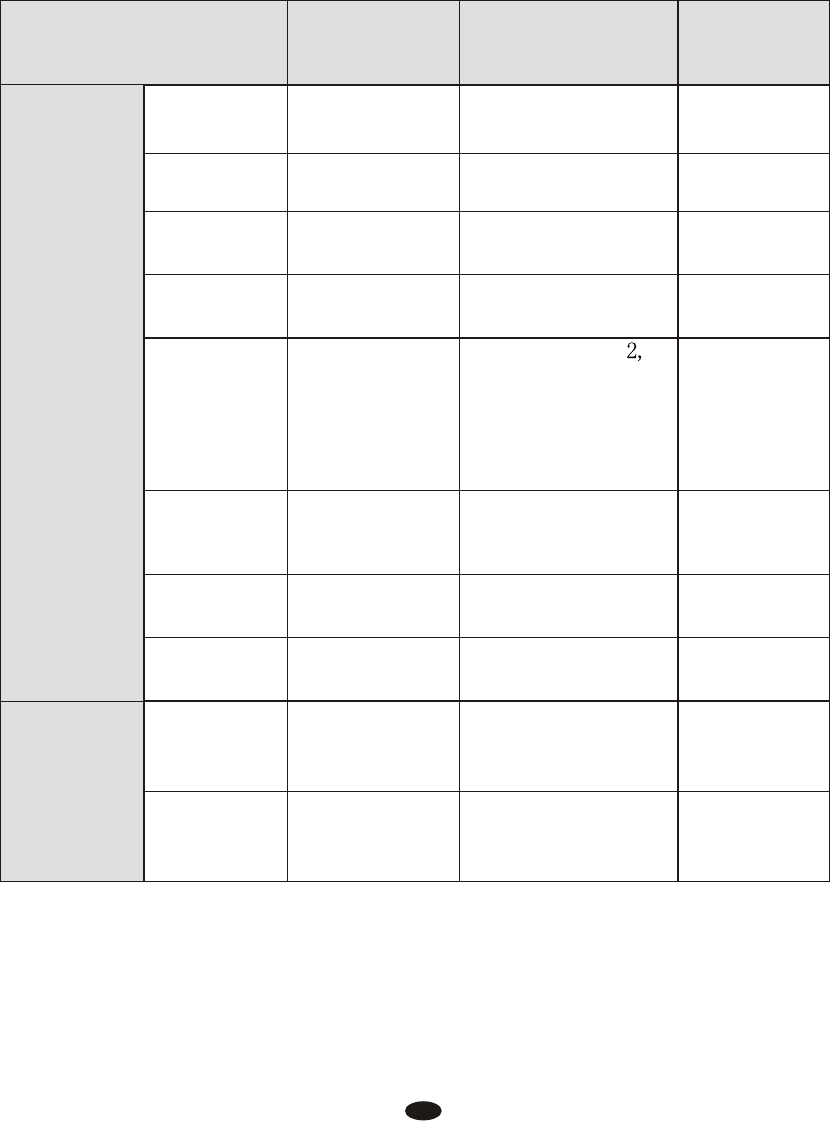
Rev.Type?
D.RevVol?
Chr.Type?
M.ChrVol?
D.ChrVol?
Hall1,Hall2,Room1,
Room2,Room3,Stage1,
Stage2,Plate
Chorus1,Chorus
Chorus3,Chorus4,
Feedback,Flanger1,
ShrtDely,ShrtDlFb,
Flanger2,Flanger3,
Celeste1,Celeste2,
Celeste3,Celeste4
S.ChrVol?
Effect?
M.RevVol?
S.RevVol?
Pedal 1?
Pedal 2?
00~127
00~127
00~127
00~127
00~127
00~127
32
32
32
32
32
32
Pd1-Fill In1,Pd1-Fill In2,
Pd1-Tap,Pd1-MemoryUp,
Pd1-Play,Pd1-Null,Pd1-Soft,
Pd1-sost,Pd1-StartStop
Pd2-Fill In1,Pd2-Fill In2,
Pd2-Tap,Pd2-MemoryUp,
Pd2-Play,Pd2-Null,Pd1-Soft,
Pd2-sost,Pd2-StartStop
Pedal Assign?
Pd1-Soft
Pd2-Null
Hall2
Chorus3
Funtion type LCD display Range Default
Rev.Type
D.RevVol
Chr.Type
M.ChrVol
D.ChrVol
S.ChrVol
M.RevVol
S.RevVol
Pedal 1
Pedal 2
25
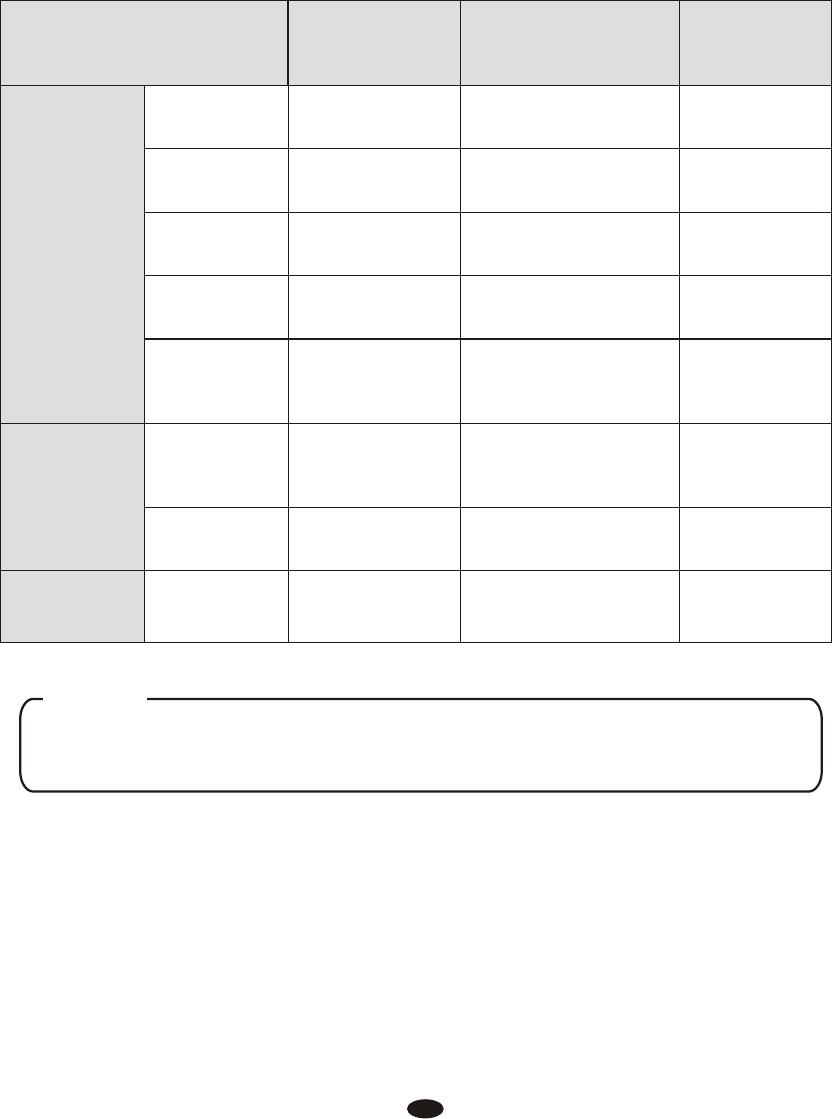
M.RecTrk?
USBSpeed?
PlayMode?
Grading?
Auto Power Off?
01~16,OFF
01~16,OFF
01~16,OFF
LearnHand?
Usb.Function?
S.RecTrk?
D.RecTrk?
50~200
Single,Chain,Random
ON/OFF
Left/Right
SLEEPMODE:20Min/
30Min/40Min/50Min/
60Min/OFF
01
02
03
100
Chain
30Min
Learn?
Other.Func?
Funtion type LCD display Range Default
Right
ON
M.RecTrk
USBSpeed
PlayMode
Grading
Auto Power Off
LearnHand
S.RecTrk
D.RecTrk
Press [FUNCTION] button, If 5 seconds without any operation, the piano will
automatically exit the menu.
NOTE
26
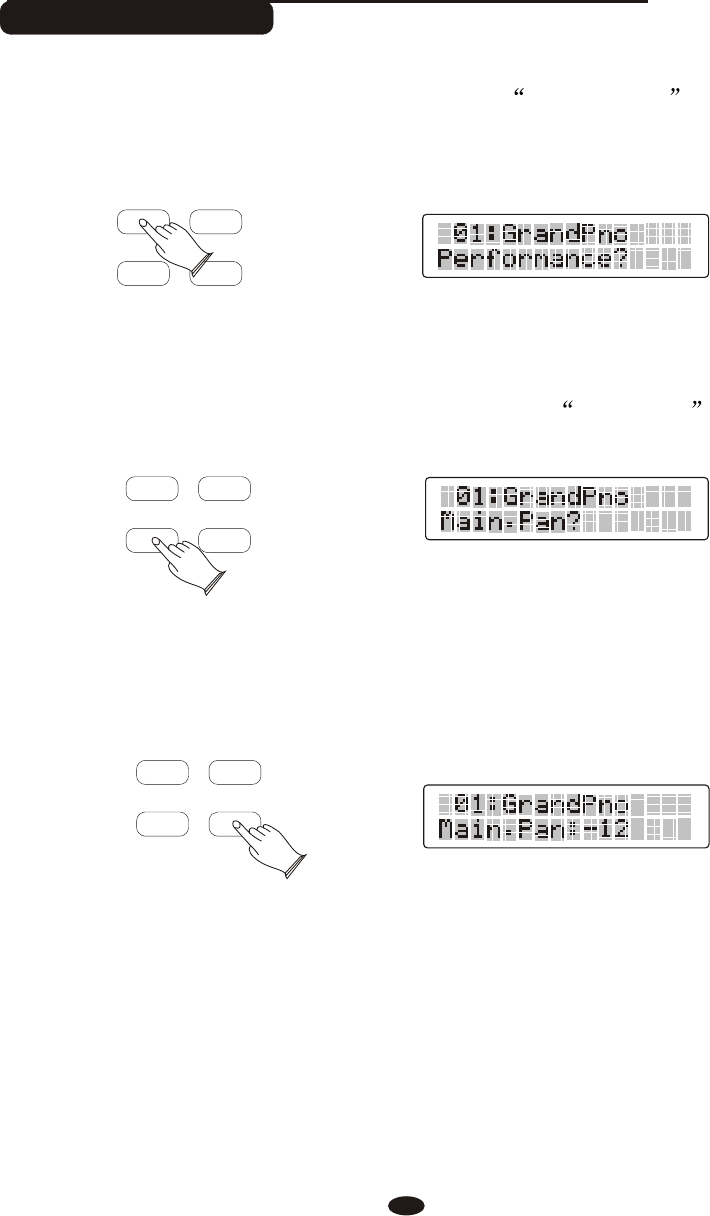
Main Voice Pan
Press the [+] and [-] buttons simultaneously to restore the default
Press [ENTER] button to confirm, LCD will display
Press [ENTER] button to confirm, use [+/-] buttons or
to set the main voice pan value.
value:00.
Main.Pan?
the [DATA
CONTROL] knob
Press the [FUNCTION] button, LCD will display Performance?
FUNCTION
FUNCTION
FUNCTION
FUNCTION
FUNCTION
ENTER
ENTER
ENTER
ENTER
+
+
+
-
-
-
27
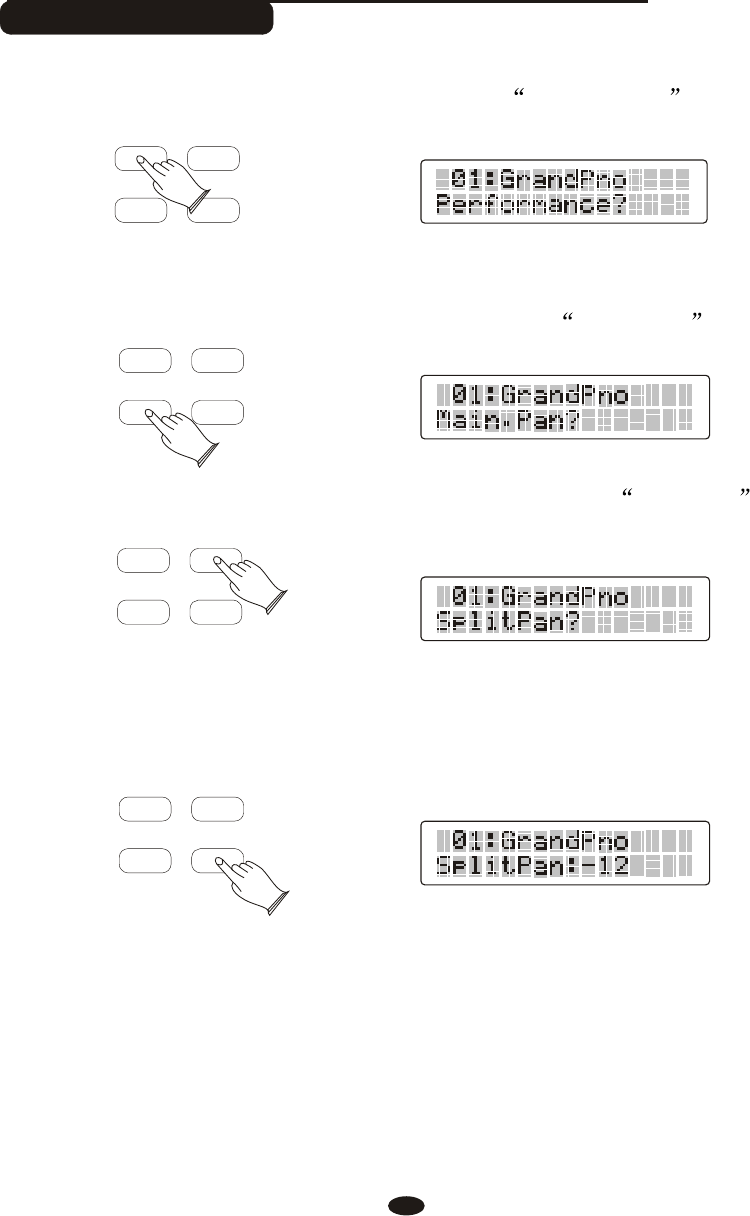
Split Voice Pan
Press the [+] and [-] buttons simultaneously to restore the default
Press [ENTER] button to confirm, LCD will display
se [+/-] buttons or to select
Press [ENTER] button to confirm, use [+/-] buttons or
to set the split voice pan value.
value:00.
Main.Pan?
U the [DATA CONTROL] knob SpiltPan?
the [DATA
CONTROL] knob
Press the [FUNCTION] button, LCD will display Performance?
FUNCTION
FUNCTION
ENTER
ENTER
+
-
FUNCTION
FUNCTION
ENTER
+
-
FUNCTION
ENTER
+
-
FUNCTION
ENTER
+
-
28
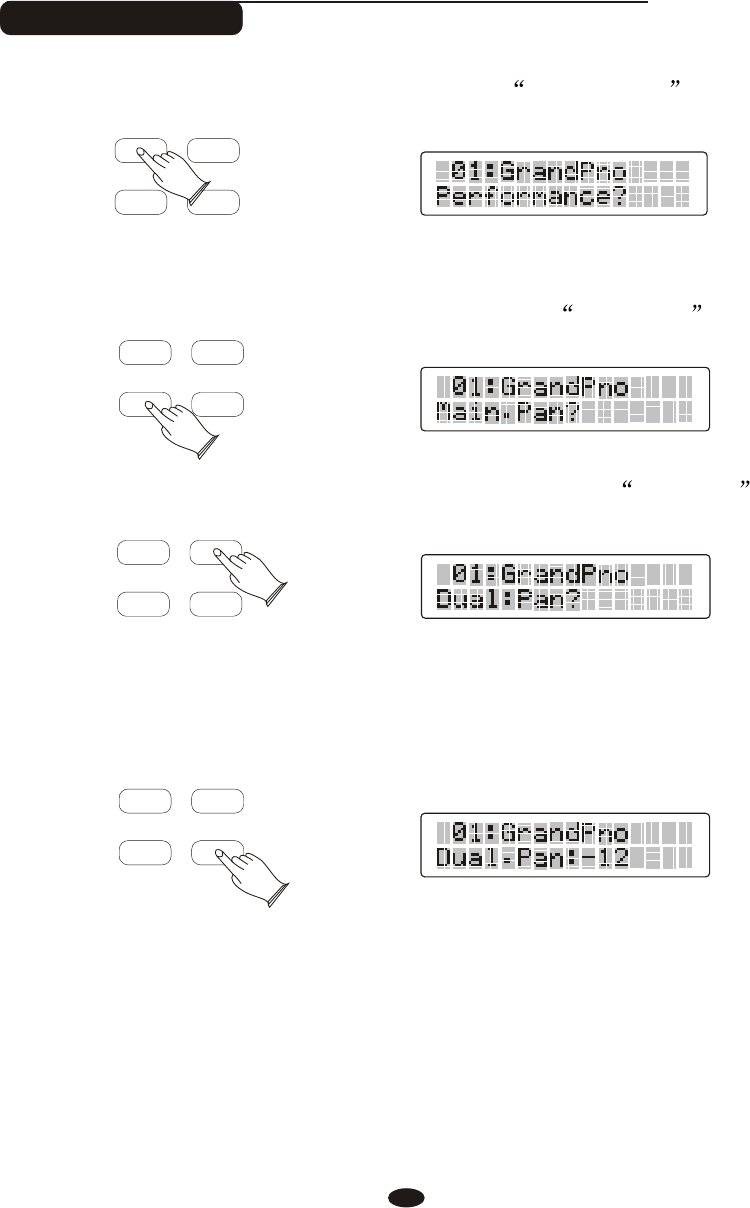
Dual Voice Pan
Press the [+] and [-] buttons simultaneously to restore the default
Press [ENTER] button to confirm, LCD will display
se [+/-] buttons or to select
Press [ENTER] button to confirm, use [+/-] buttons or
to set the dual voice pan value.
value:00.
Main.Pan?
U the [DATA CONTROL] knob SpiltPan?
the [DATA
CONTROL] knob
Press the [FUNCTION] button, LCD will display Performance?
FUNCTION
FUNCTION
ENTER
ENTER
+
-
FUNCTION
FUNCTION
ENTER
+
-
FUNCTION
ENTER
+
-
FUNCTION
ENTER
+
-
29
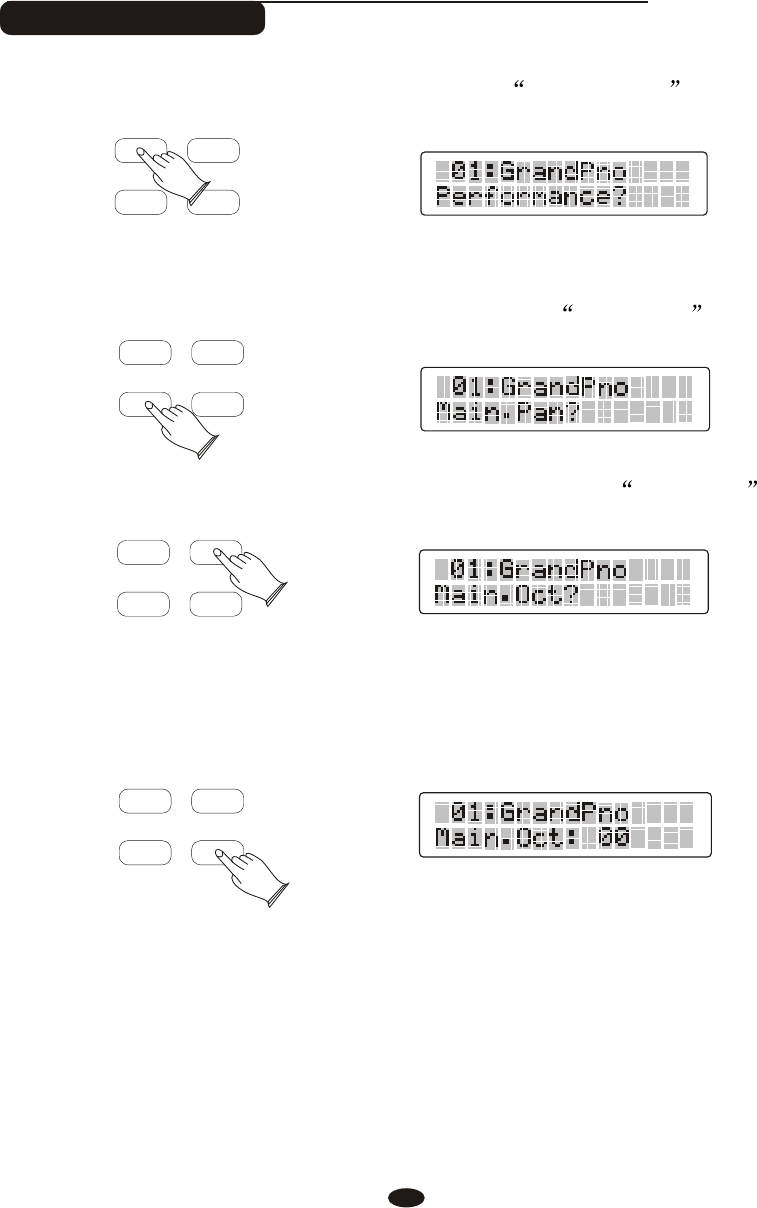
Main Voice Octave
Press the [+] and [-] buttons simultaneously to restore the default
Press [ENTER] button to confirm, LCD will display
se [+/-] buttons or to select Main Oct
Press [ENTER] button to confirm, use [+/-] buttons or
to set the main voice octave value.
value:00.
Main.Pan?
U the [DATA CONTROL] knob ?
the [DATA
CONTROL] knob
Press the [FUNCTION] button, LCD will display Performance?
FUNCTION
FUNCTION
ENTER
ENTER
+
-
FUNCTION
FUNCTION
ENTER
+
-
FUNCTION
ENTER
+
-
FUNCTION
ENTER
+
-
30
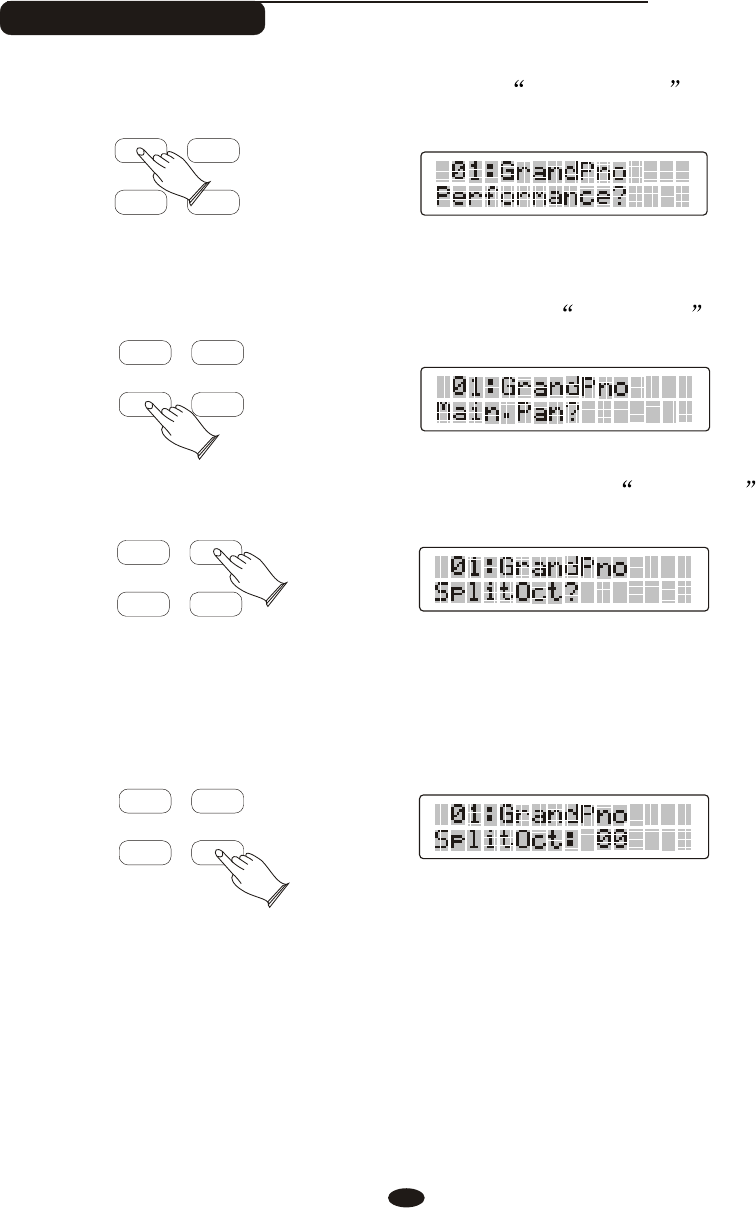
Split Voice Octave
Press the [+] and [-] buttons simultaneously to restore the default
Press [ENTER] button to confirm, LCD will display
se [+/-] buttons or to select
Press [ENTER] button to confirm, use [+/-] buttons or
to set the Split voice octave value.
value:00.
Main.Pan?
U the [DATA CONTROL] knob Spilt.Oct?
the [DATA
CONTROL] knob
Press the [FUNCTION] button, LCD will display Performance?
FUNCTION
FUNCTION
ENTER
ENTER
+
-
FUNCTION
FUNCTION
ENTER
+
-
FUNCTION
ENTER
+
-
FUNCTION
ENTER
+
-
31
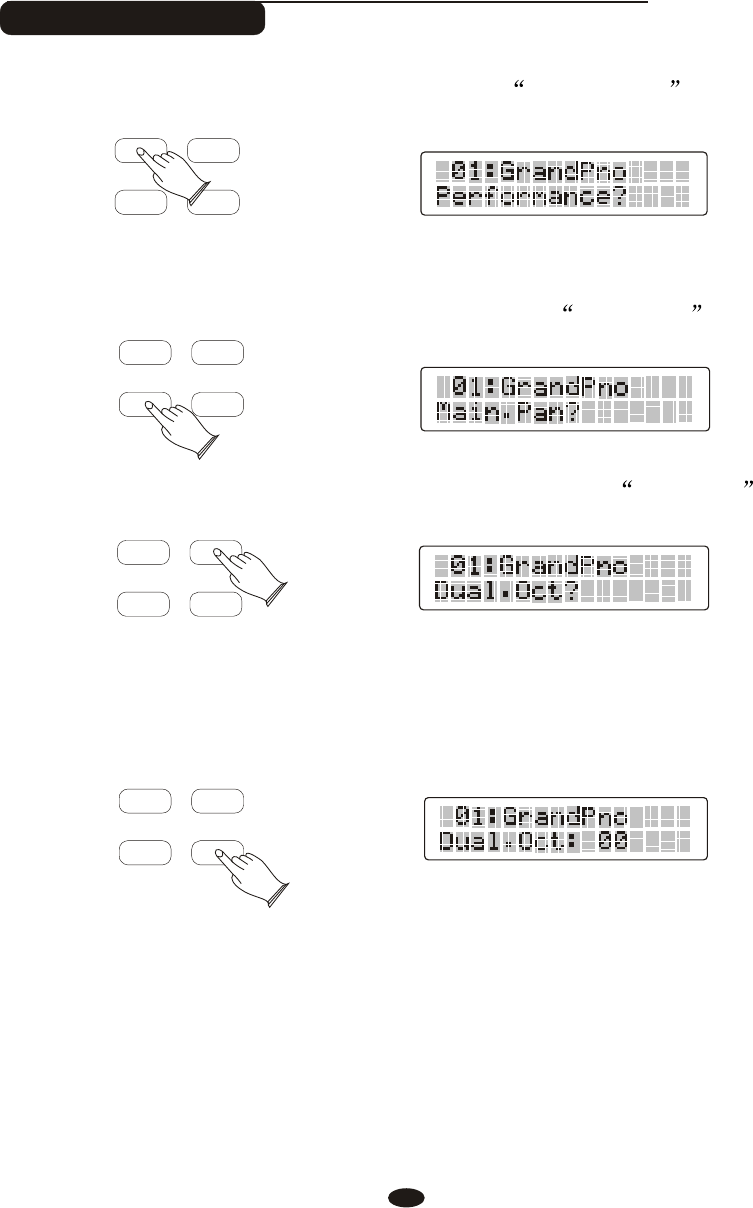
Dual Voice Octave
Press the [+] and [-] buttons simultaneously to restore the default
Press [ENTER] button to confirm, LCD will display
se [+/-] buttons or to select Dual
Press [ENTER] button to confirm, use [+/-] buttons or
to set the dual voice octave value.
value:00.
Main.Pan?
U the [DATA CONTROL] knob Oct?
the [DATA
CONTROL] knob
Press the [FUNCTION] button, LCD will display Performance?
FUNCTION
FUNCTION
ENTER
ENTER
+
-
FUNCTION
FUNCTION
ENTER
+
-
FUNCTION
ENTER
+
-
FUNCTION
ENTER
+
-
32
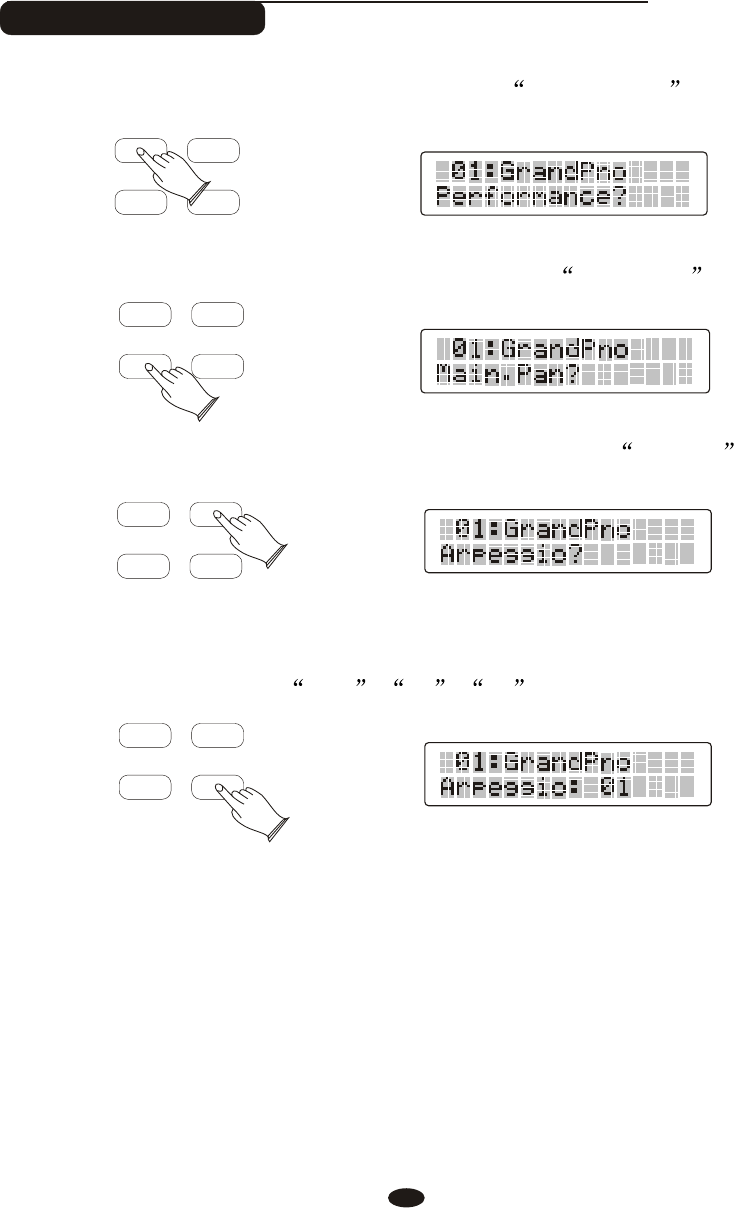
Arpeggio
Press [ENTER] button to confirm, LCD will display
se [+/-] buttons or to select
Press [ENTER] button to confirm, use [+/-] buttons or
to select .
Main.Pan?
U the [DATA CONTROL] knob Arpeggio?
the [DATA
CONTROL] knob OFF , 01 , 02
Press the [FUNCTION] button, LCD will display Performance?
FUNCTION
FUNCTION
ENTER
ENTER
+
-
FUNCTION
FUNCTION
ENTER
+
-
FUNCTION
ENTER
+
-
FUNCTION
ENTER
+
-
01~ Press and hold down one key or a plurality of keys , you will hear a
continuous and from low to high.
02~ Press and hold down one key or a plurality of keys , you will hear a
continuous and from high to low .
OFF~ The Arpeggio is off.
33
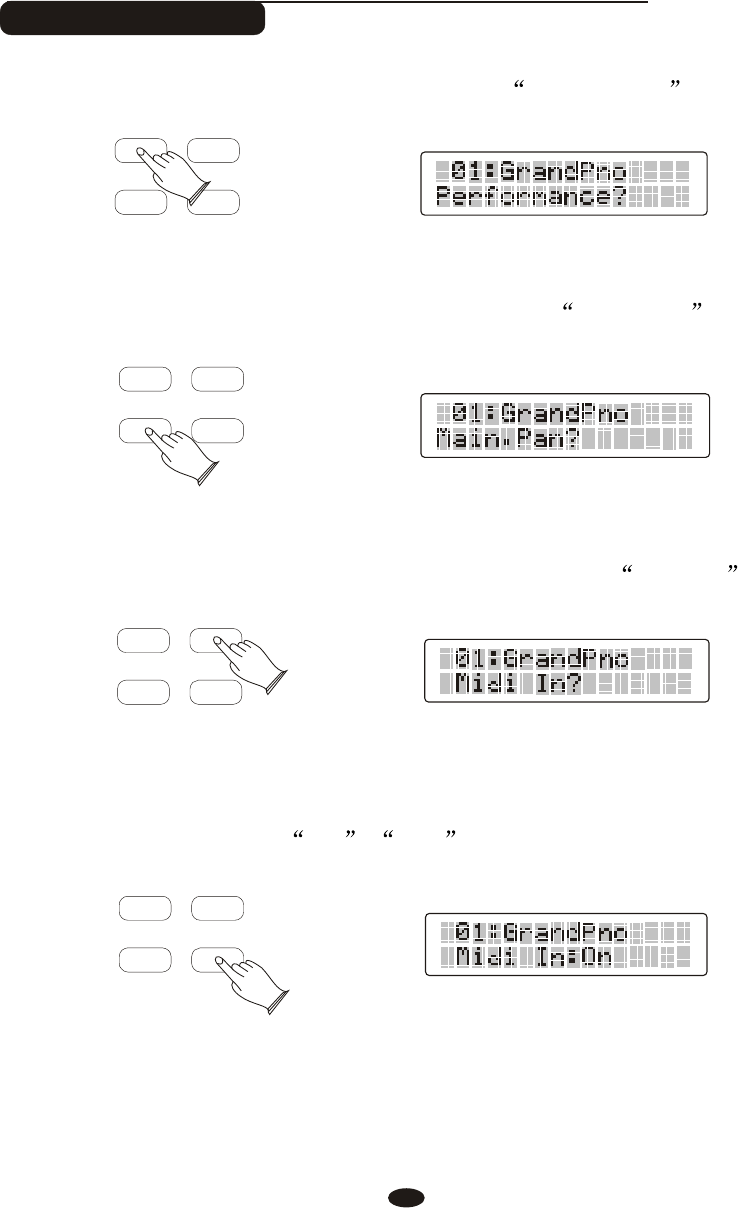
Midi In
Press [ENTER] button to confirm, LCD will display
se [+/-] buttons or to select Midi In
Press [ENTER] button to confirm, use [+/-] buttons or
to select .
Main.Pan?
U the [DATA CONTROL] knob ?
the [DATA
CONTROL] knob ON , OFF
Press the [FUNCTION] button, LCD will display Performance?
FUNCTION
FUNCTION
ENTER
ENTER
+
-
FUNCTION
FUNCTION
ENTER
+
-
FUNCTION
ENTER
+
-
FUNCTION
ENTER
+
-
34
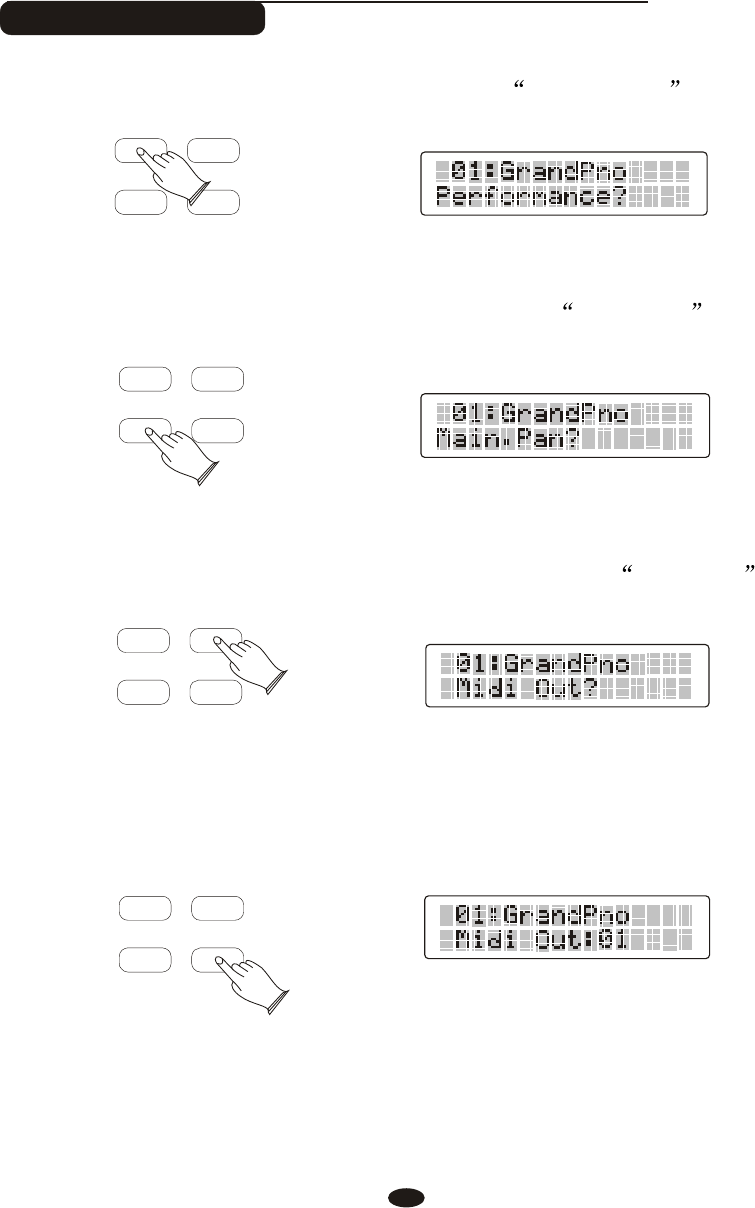
Midi Out
Press [ENTER] button to confirm, LCD will display
se [+/-] buttons or to select Midi Out
Press [ENTER] button to confirm, use [+/-] buttons or
to select1~16 .
Main.Pan?
U the [DATA CONTROL] knob ?
the [DATA
CONTROL] knob ,OFF
Press the [FUNCTION] button, LCD will display Performance?
FUNCTION
FUNCTION
ENTER
ENTER
+
-
FUNCTION
FUNCTION
ENTER
+
-
FUNCTION
ENTER
+
-
FUNCTION
ENTER
+
-
35
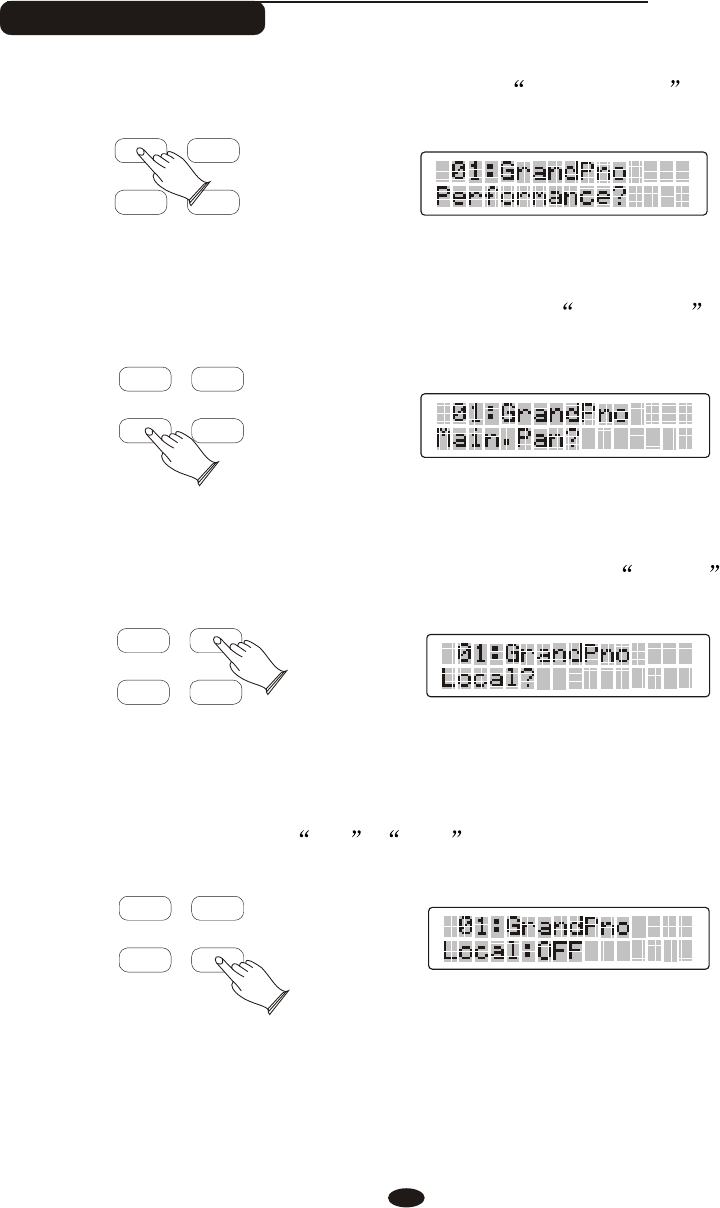
Local
Press [ENTER] button to confirm, LCD will display
se [+/-] buttons or to select Local
Press [ENTER] button to confirm, use [+/-] buttons or
to select ON .
Main.Pan?
U the [DATA CONTROL] knob ?
the [DATA
CONTROL] knob , OFF
Press the [FUNCTION] button, LCD will display Performance?
FUNCTION
FUNCTION
ENTER
ENTER
+
-
FUNCTION
FUNCTION
ENTER
+
-
FUNCTION
ENTER
+
-
FUNCTION
ENTER
+
-
36
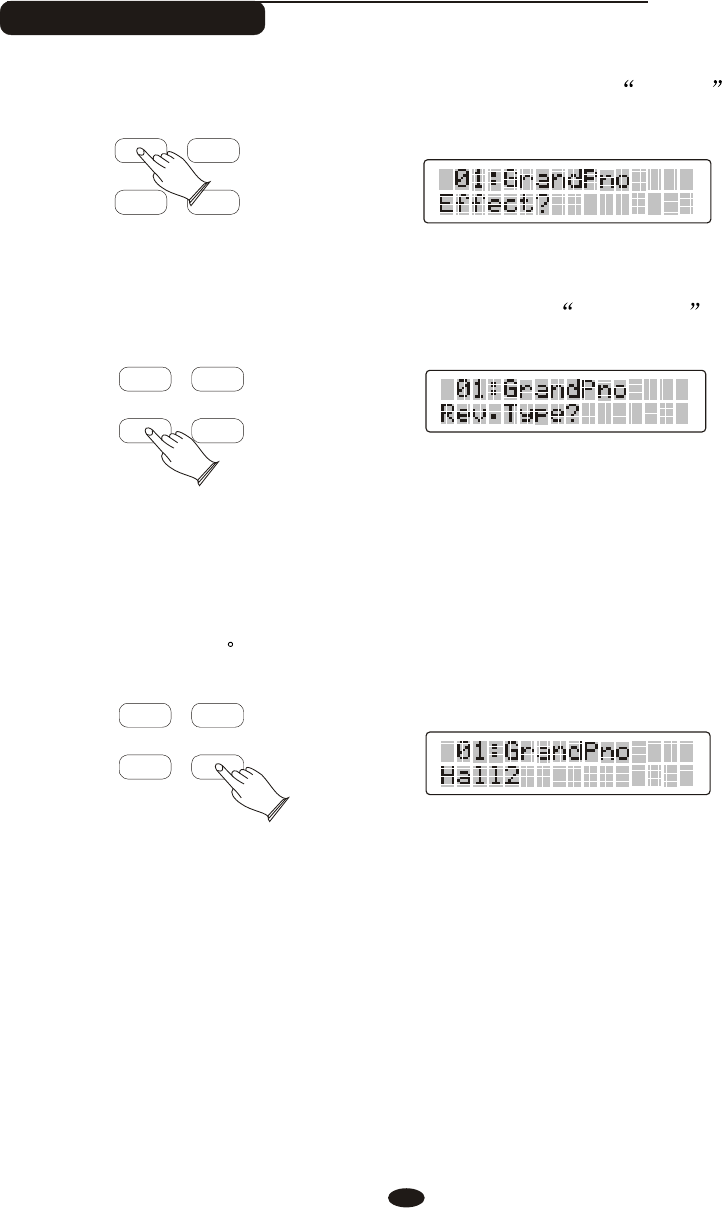
Reverb Type
Press the [+] and [-] buttons simultaneously to restore the default
Press [ENTER] button to confirm, LCD will display Rev.Type
Press [ENTER] button to confirm, use [+/-] buttons or
to select 8 reverb type:
reverb type: .
?
the [DATA CONTROL]
knob Hall1, Hall2, Room1, Room2, Room3,
Stage1, Stage2, Plate
Hall2
Press the [FUNCTION] button repeatedly, LCD will display Effect?
FUNCTION
FUNCTION
ENTER
ENTER
+
-
FUNCTION
FUNCTION
ENTER
+
-
FUNCTION
ENTER
+
-
37
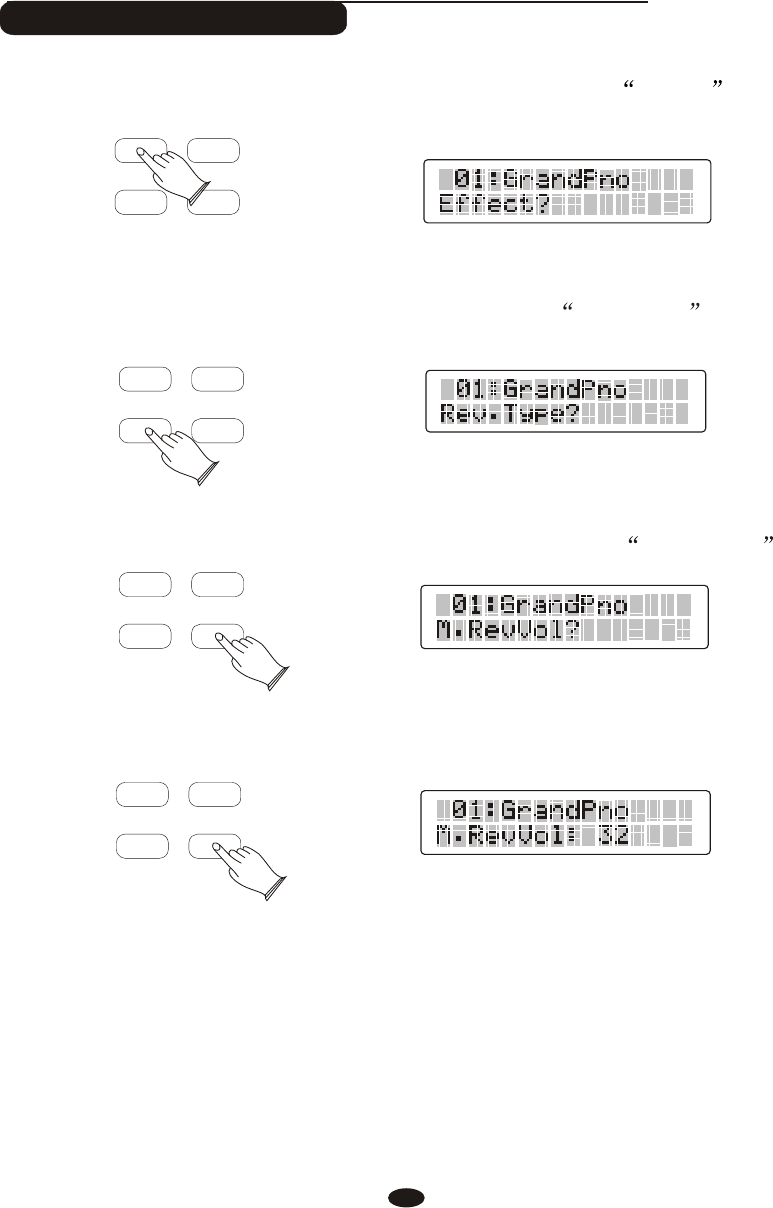
Main voice Reverb Level
Press [ENTER] button to confirm, LCD will display Rev.Type?
Use [+/-] buttons or the [DATA CONTROL] knob to select M.RevVol?
Press [ENTER] button to confirm, use [+/-] buttons or the [DATA CONTROL]
knob to set main voice reverb level value.
Press the [+] and [-] buttons simultaneously to restore the default
value:32.
Press the [FUNCTION] button repeatedly, LCD will display Effect?
FUNCTION
FUNCTION
ENTER
ENTER
+
-
FUNCTION
FUNCTION
ENTER
+
-
FUNCTION
FUNCTION
ENTER
ENTER
+
+
-
-
38
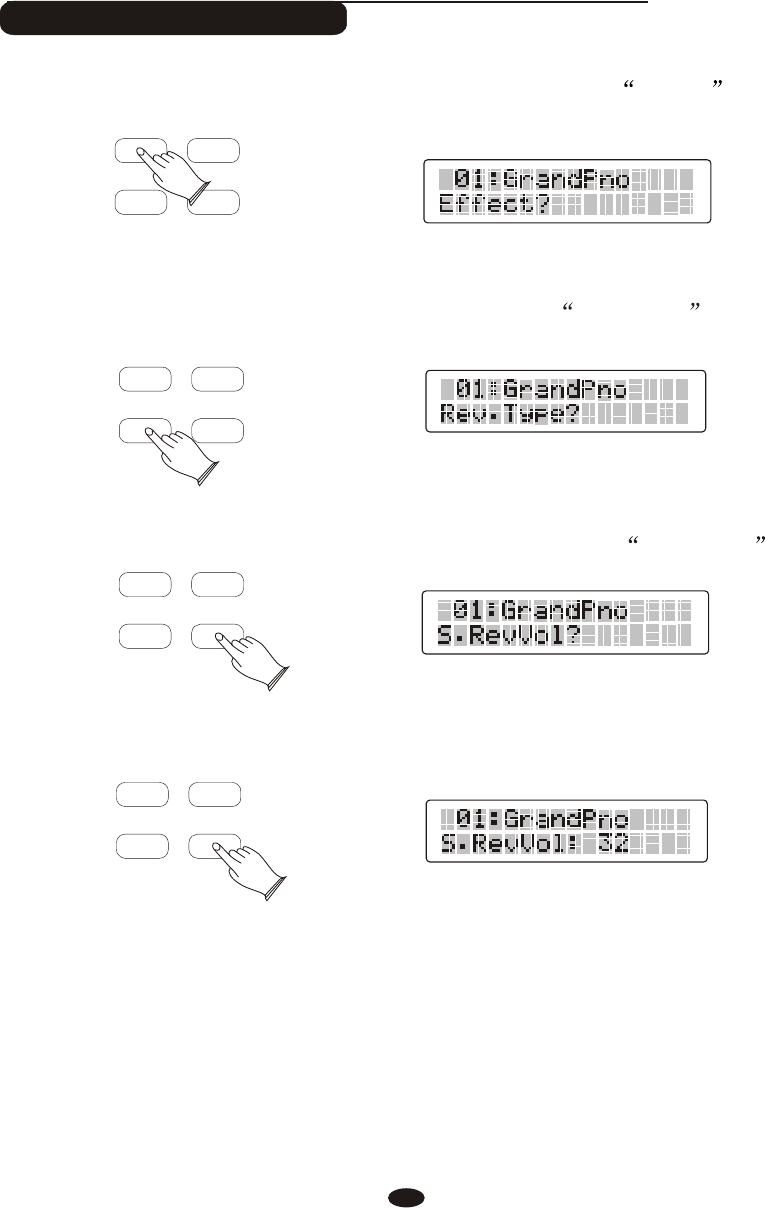
Split Voice Reverb Level
Press [ENTER] button to confirm, LCD will display Rev.Type?
Use [+/-] buttons or the [DATA CONTROL] knob to select S.RevVol?
Press [ENTER] button to confirm, use [+/-] buttons or the [DATA CONTROL]
knob to set split voice reverb level value.
Press the [+] and [-] buttons simultaneously to restore the default
value:32.
Press the [FUNCTION] button repeatedly, LCD will display Effect?
FUNCTION
FUNCTION
ENTER
ENTER
+
-
FUNCTION
FUNCTION
ENTER
+
-
FUNCTION
FUNCTION
ENTER
ENTER
+
+
-
-
39
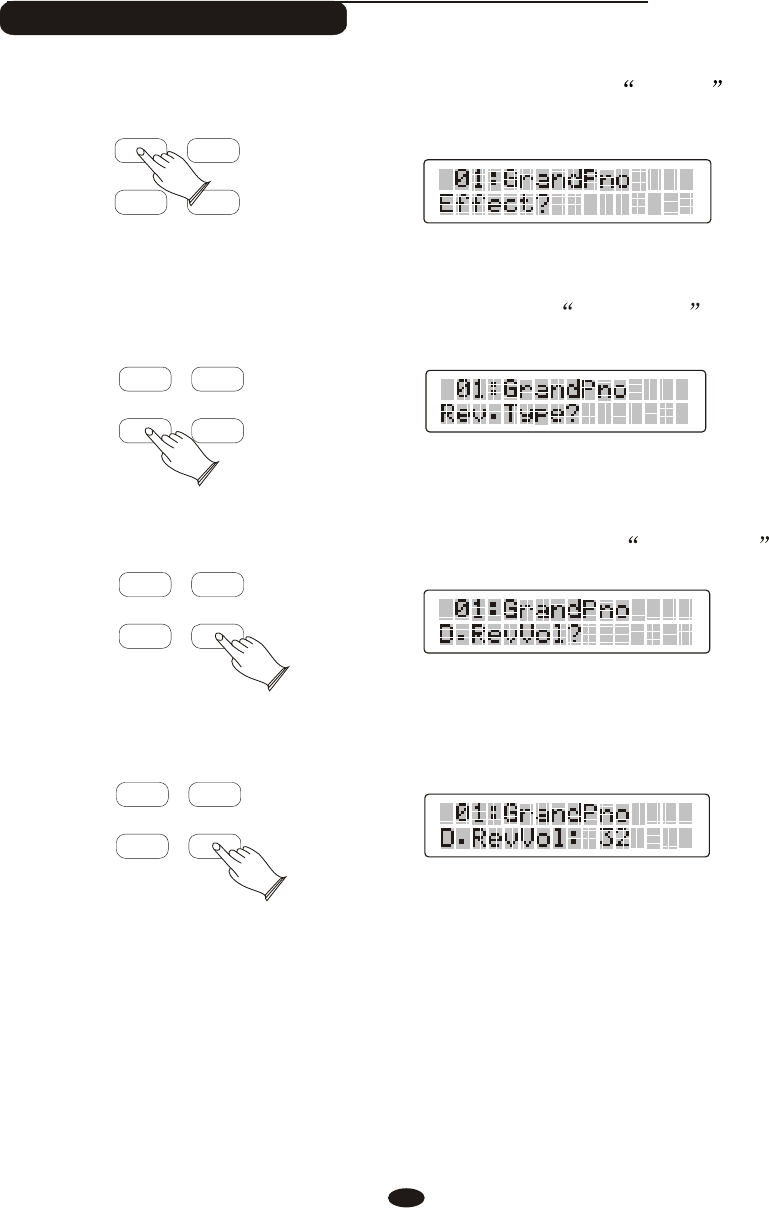
Dual Voice Reverb Level
Press [ENTER] button to confirm, LCD will display Rev.Type?
Use [+/-] buttons or the [DATA CONTROL] knob to select D.RevVol?
Press [ENTER] button to confirm, use [+/-] buttons or the [DATA CONTROL]
knob to set dual voice reverb level value.
Press the [+] and [-] buttons simultaneously to restore the default
value:32.
Press the [FUNCTION] button repeatedly, LCD will display Effect?
FUNCTION
FUNCTION
ENTER
ENTER
+
-
FUNCTION
FUNCTION
ENTER
+
-
FUNCTION
FUNCTION
ENTER
ENTER
+
+
-
-
40
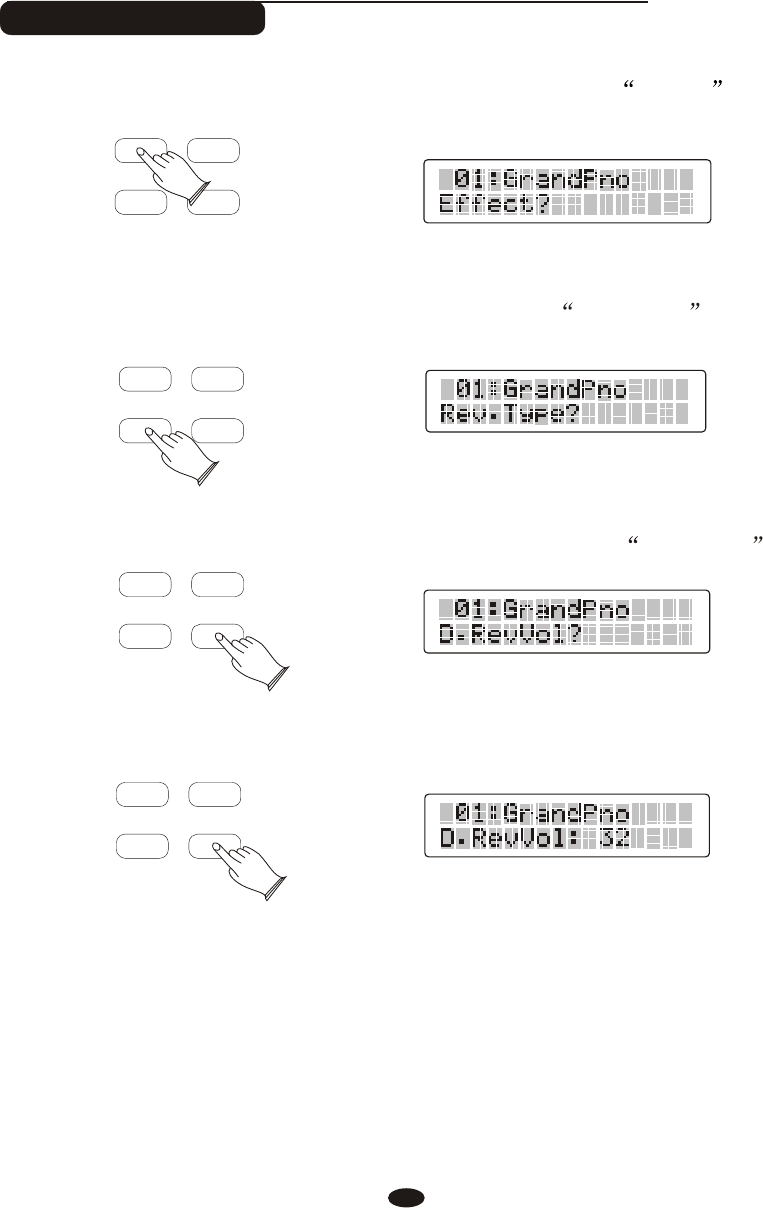
Chorus Type
Press [ENTER] button to confirm, LCD will display Rev.Type?
Use [+/-] buttons or the [DATA CONTROL] knob to select Chr.Type?
Press [ENTER] button to confirm, use [+/-] buttons or the [DATA CONTROL]
knob to select 14 chorus types.
reverb type:Chorus3.
Press the [+] and [-] buttons simultaneously to restore the default
Press the [FUNCTION] button repeatedly, LCD will display Effect?
FUNCTION
FUNCTION
ENTER
ENTER
+
-
FUNCTION
FUNCTION
ENTER
+
-
FUNCTION
FUNCTION
ENTER
ENTER
+
+
-
-
41
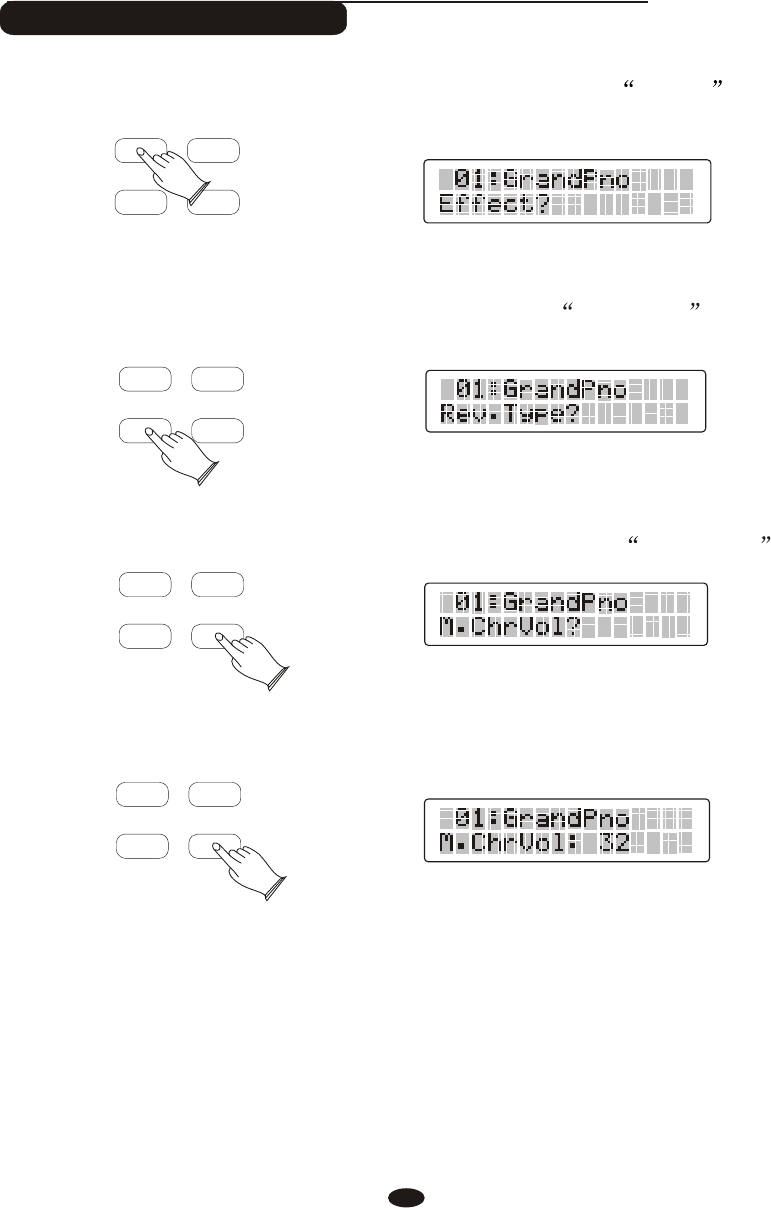
Main voice Chorus Level
Press [ENTER] button to confirm, LCD will display Rev.Type?
Use [+/-] buttons or the [DATA CONTROL] knob to select M.ChrVol?
Press [ENTER] button to confirm, use [+/-] buttons or the [DATA CONTROL]
knob to set main voice reverb level value.
Press the [+] and [-] buttons simultaneously to restore the default
value:32.
Press the [FUNCTION] button repeatedly, LCD will display Effect?
FUNCTION
FUNCTION
ENTER
ENTER
+
-
FUNCTION
FUNCTION
ENTER
+
-
FUNCTION
FUNCTION
ENTER
ENTER
+
+
-
-
42
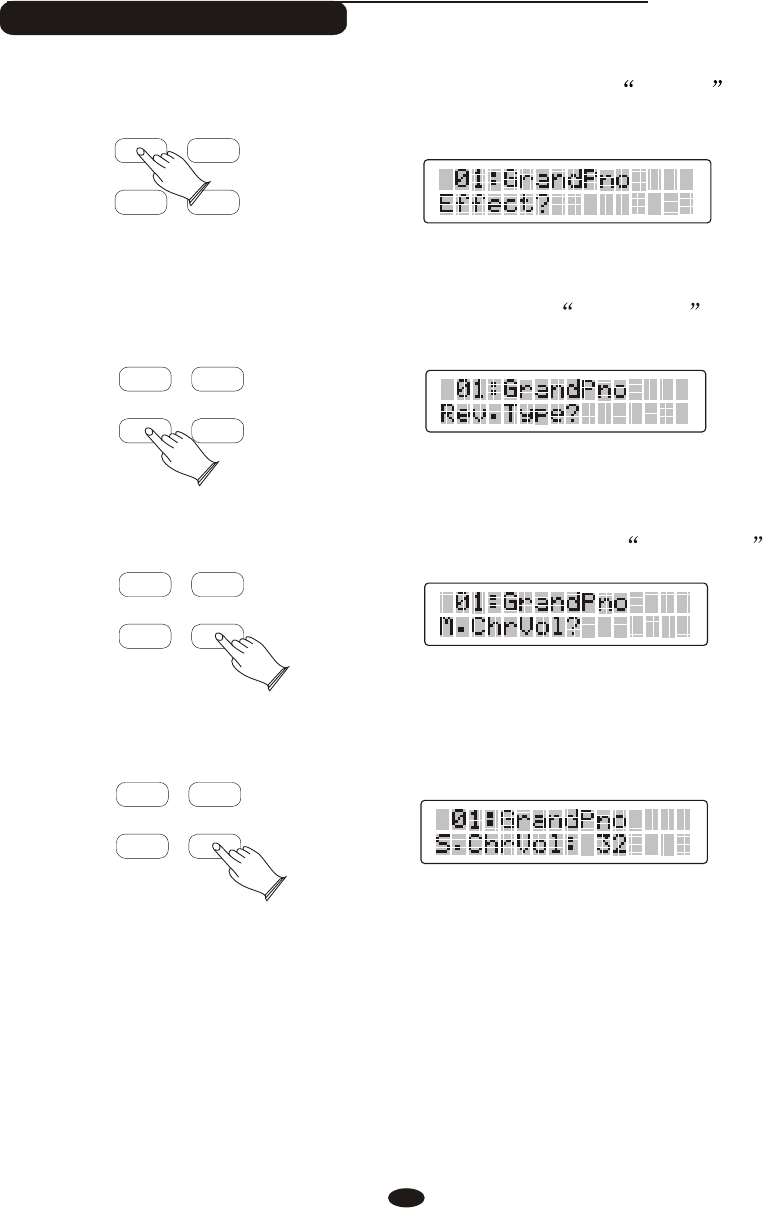
Split voice Chorus Level
Press [ENTER] button to confirm, LCD will display Rev.Type?
Use [+/-] buttons or the [DATA CONTROL] knob to select S.ChrVol?
Press [ENTER] button to confirm, use [+/-] buttons or the [DATA CONTROL]
knob to set main voice reverb level value.
Press the [+] and [-] buttons simultaneously to restore the default
value:32.
Press the [FUNCTION] button repeatedly, LCD will display Effect?
FUNCTION
FUNCTION
ENTER
ENTER
+
-
FUNCTION
FUNCTION
ENTER
+
-
FUNCTION
FUNCTION
ENTER
ENTER
+
+
-
-
43
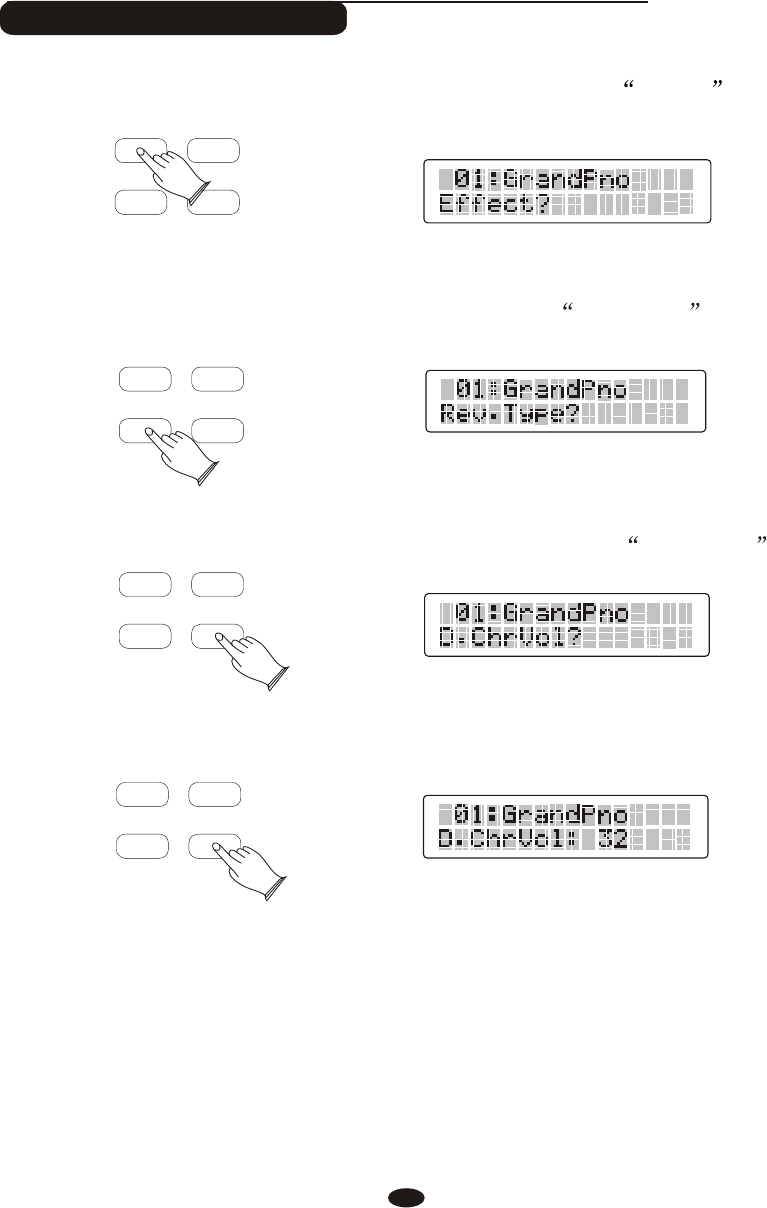
Dual voice Chorus Level
Press [ENTER] button to confirm, LCD will display Rev.Type?
Use [+/-] buttons or the [DATA CONTROL] knob to select D.ChrVol?
Press [ENTER] button to confirm, use [+/-] buttons or the [DATA CONTROL]
knob to set dual voice reverb level value.
Press the [+] and [-] buttons simultaneously to restore the default
value:32.
Press the [FUNCTION] button repeatedly, LCD will display Effect?
FUNCTION
FUNCTION
ENTER
ENTER
+
-
FUNCTION
FUNCTION
ENTER
+
-
FUNCTION
FUNCTION
ENTER
ENTER
+
+
-
-
44
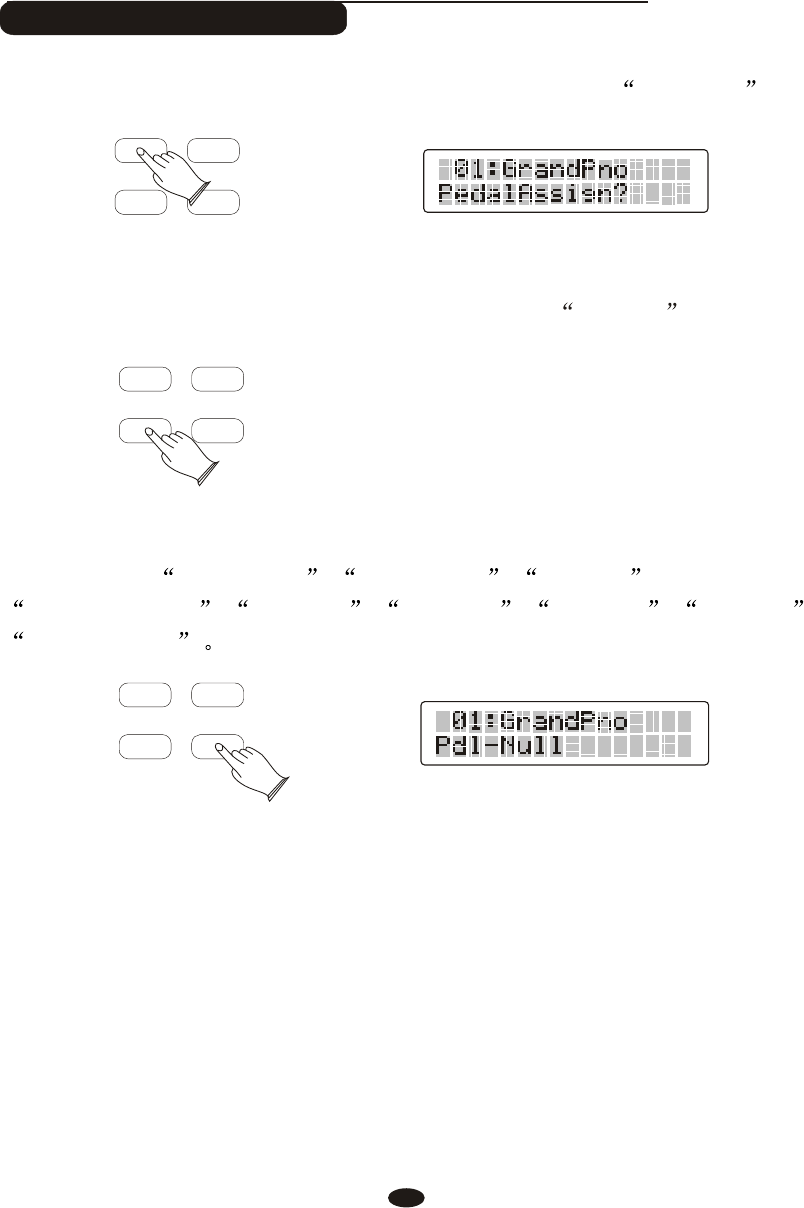
Pedal1 Control
Press [ENTER] button to confirm, LCD will display Pedal 1?
Press [ENTER] button to confirm, use [+/-] buttons or the [DATA CONTROL]
knob to select Pd1-Fill In1 , Pd1-Fill In2 , Pd1-Tap ,
Pd1-MemoryUp , Pd1-Play , Pd1-Null , Pd1-Soft , Pd1-sost ,
Pd1-StartStop
Press the [FUNCTION] button repeatedly, LCD will display Pedal Assign?
FUNCTION
FUNCTION
ENTER
ENTER
+
-
FUNCTION
FUNCTION
ENTER
+
-
FUNCTION
ENTER
+
-
Pd1-Null------The switch will not control any function.
Pd1-Soft------
Pd1-Sos------If you play a note or chord on the keyboard and press the sostenuto
pedal while the notes are held, those notes will be sustained as long as the pedal
is held, but all subsequently played notes will not be sustained.
Pd1-StrtStop------This function correspond to the [START] button on the panel.
45
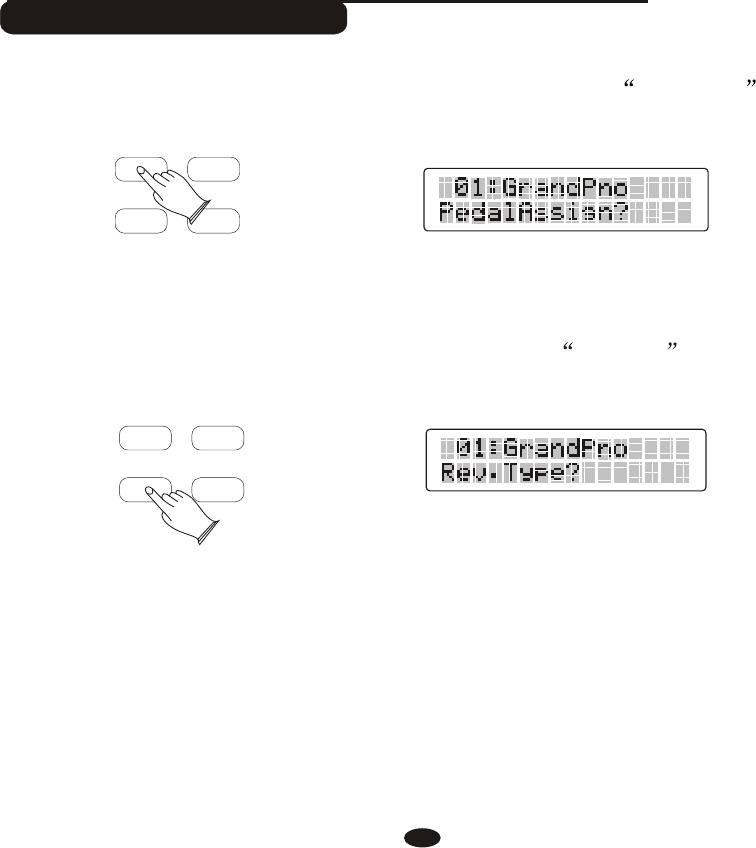
Switches the rhythm on/off whenever you press the Left Foot-switch.
Pd1-Fil1l------This function correspond to the [FILL IN] button on the panel. Let
you add dynamic variations and breaks in the rhythm of the accompaniment.
Pd1-Fil12------This function correspond to the [FILL IN] button on the panel. Let
you add dynamic variations and breaks in the rhythm of the accompaniment.
Pd1-Play------USB MIDI Play
Pd1-MemoryUp------Anytime you store to a REGISTRATION MEMORY button,
all settings previously stored in that button will be erased and replaced by the new
settings.
Pd1-Tap----
Pedal2 Control
Press [ENTER] button to confirm, LCD will display Pedal 2?
Press the [FUNCTION] button repeatedly, LCD will display Pedal Assign?
FUNCTION
FUNCTION
ENTER
+
-
FUNCTION
ENTER
+
-
46
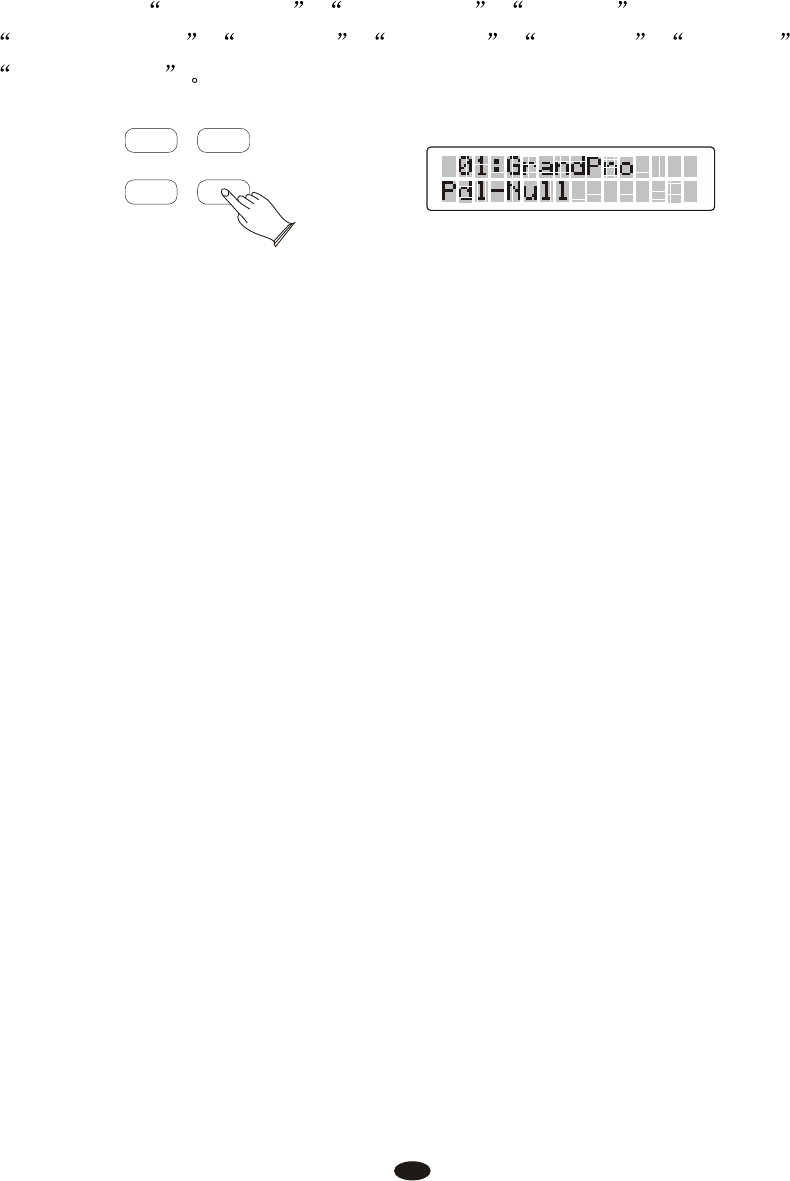
Press [ENTER] button to confirm, use [+/-] buttons or the [DATA CONTROL]
knob to select Pd2-Fill In1 , Pd2-Fill In2 , Pd2-Tap ,
Pd2-MemoryUp , Pd2-Play , Pd2-Null , Pd2-Soft , Pd2-sost ,
Pd2-StartStop
Pd1-Null------The switch will not control any function.
Pd1-Soft------
Pd1-Sos------If you play a note or chord on the keyboard and press the sostenuto
pedal while the notes are held, those notes will be sustained as long as the pedal
is held, but all subsequently played notes will not be sustained.
Pd1-StrtStop------This function correspond to the [START] button on the panel.
Switches the rhythm on/off whenever you press the Left Foot-switch.
Pd1-Fil1l------This function correspond to the [FILL IN] button on the panel. Let
you add dynamic variations and breaks in the rhythm of the accompaniment.
Pd1-Fil12------This function correspond to the [FILL IN] button on the panel. Let
you add dynamic variations and breaks in the rhythm of the accompaniment.
Pd1-Play------USB MIDI Play
Pd1-MemoryUp------Anytime you store to a REGISTRATION MEMORY button,
all settings previously stored in that button will be erased and replaced by the new
settings.
Pd1-Tap----
FUNCTION
ENTER
+
-
47
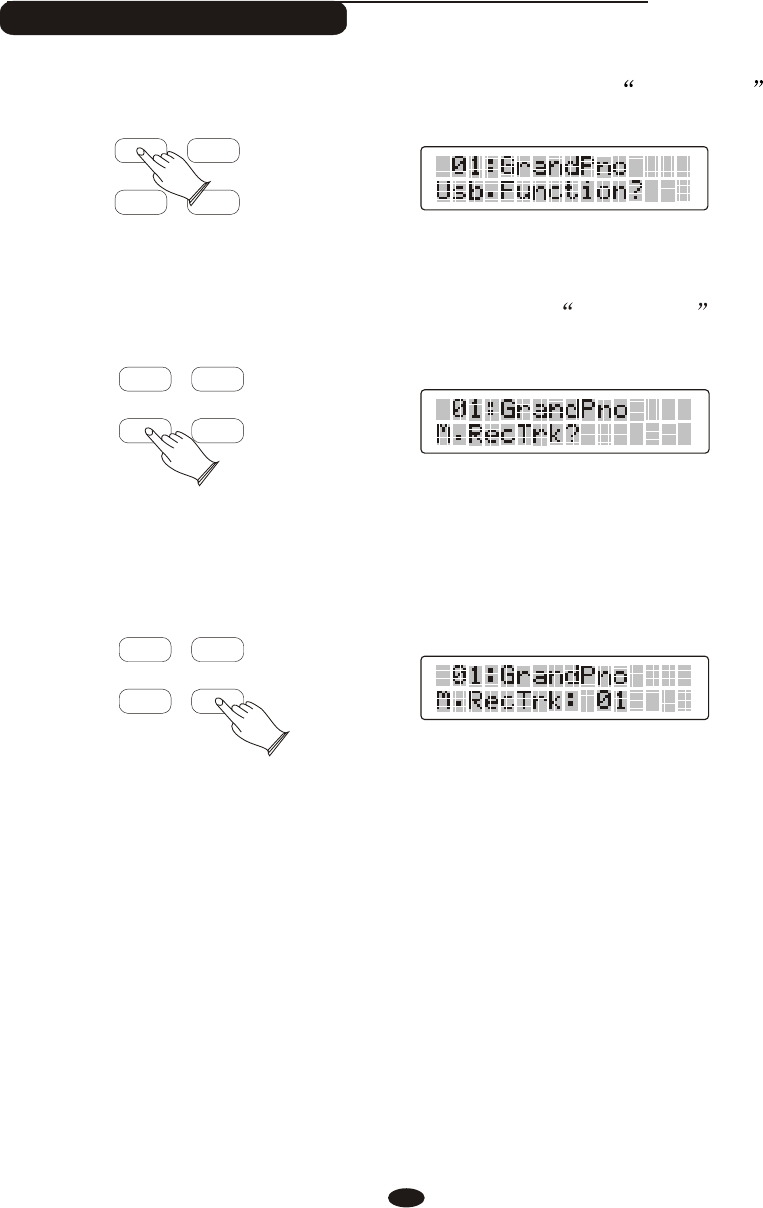
Main voice Track
Press [ENTER] button to confirm, LCD will display M.RecTrk?
Press [ENTER] button to confirm, use [+/-] buttons or the [DATA CONTROL]
knob to select main voice track 01~16 and Off.
Press the [+] and [-] buttons simultaneously to restore the default
main voice track: 01.
Press the [FUNCTION] button repeatedly, LCD will display Usb.Function?
FUNCTION
FUNCTION
ENTER
ENTER
+
-
FUNCTION
FUNCTION
ENTER
+
-
FUNCTION
ENTER
+
-
48
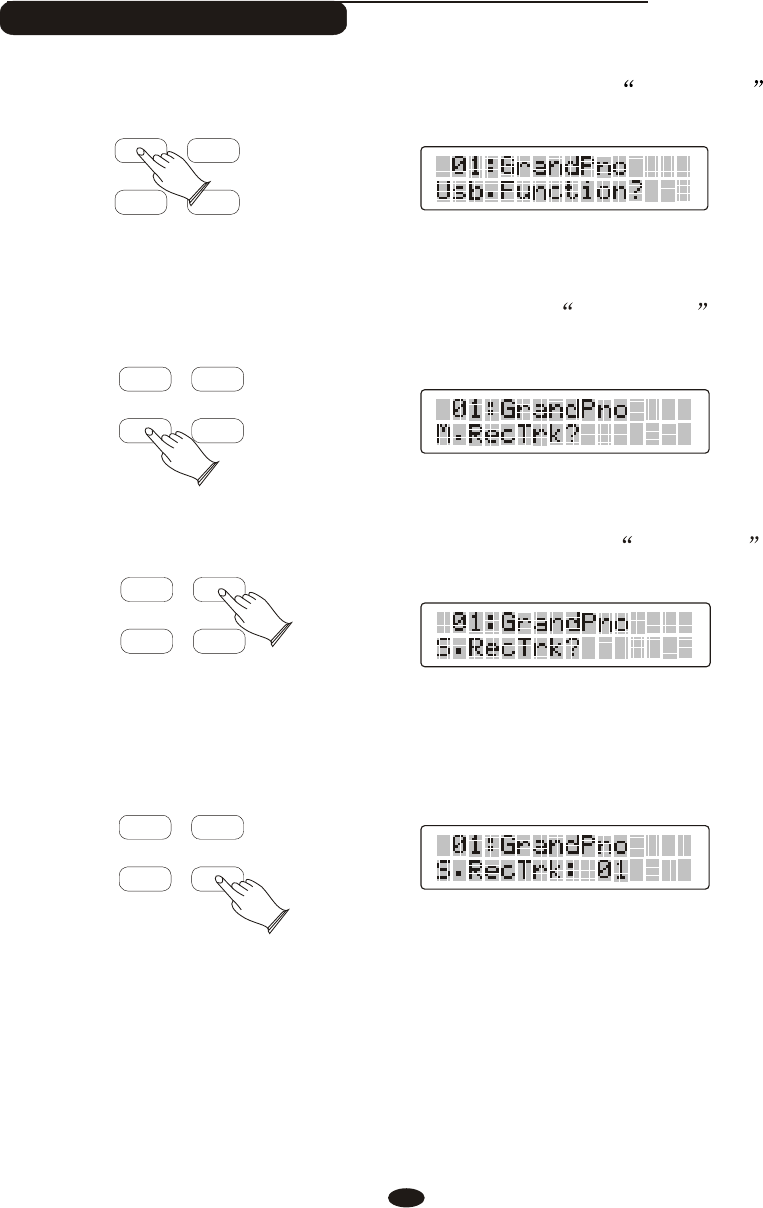
Split voice Track
Press [ENTER] button to confirm, LCD will display M.RecTrk?
Use [+/-] buttons or the [DATA CONTROL] knob to select S.RecTrk?
Press [ENTER] button to confirm, use [+/-] buttons or the [DATA CONTROL]
knob to select split voice track 01~16 and Off.
Press the [+] and [-] buttons simultaneously to restore the default
main voice track: 02.
Press the [FUNCTION] button repeatedly, LCD will display Usb.Function?
FUNCTION
FUNCTION
ENTER
ENTER
+
-
FUNCTION
FUNCTION
FUNCTION
FUNCTION
ENTER
ENTER
ENTER
+
+
-
-
FUNCTION
ENTER
+
-
49
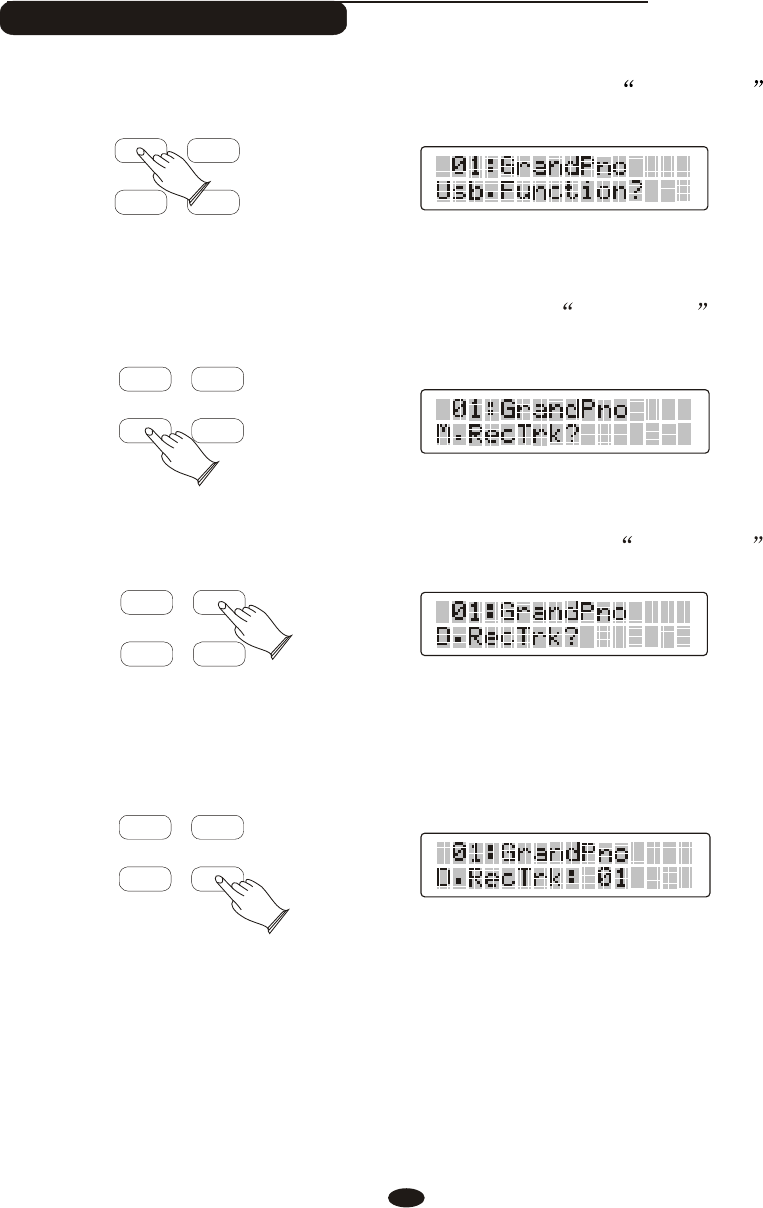
Dual voice Track
Press [ENTER] button to confirm, LCD will display M.RecTrk?
Use [+/-] buttons or the [DATA CONTROL] knob to select D.RecTrk?
Press [ENTER] button to confirm, use [+/-] buttons or the [DATA CONTROL]
knob to select dual voice track 01~16 and Off.
Press the [+] and [-] buttons simultaneously to restore the default
main voice track: 03.
Press the [FUNCTION] button repeatedly, LCD will display Usb.Function?
FUNCTION
FUNCTION
ENTER
ENTER
+
-
FUNCTION
FUNCTION
ENTER
+
-
FUNCTION
ENTER
+
-
FUNCTION
FUNCTION
ENTER
ENTER
+
-
50
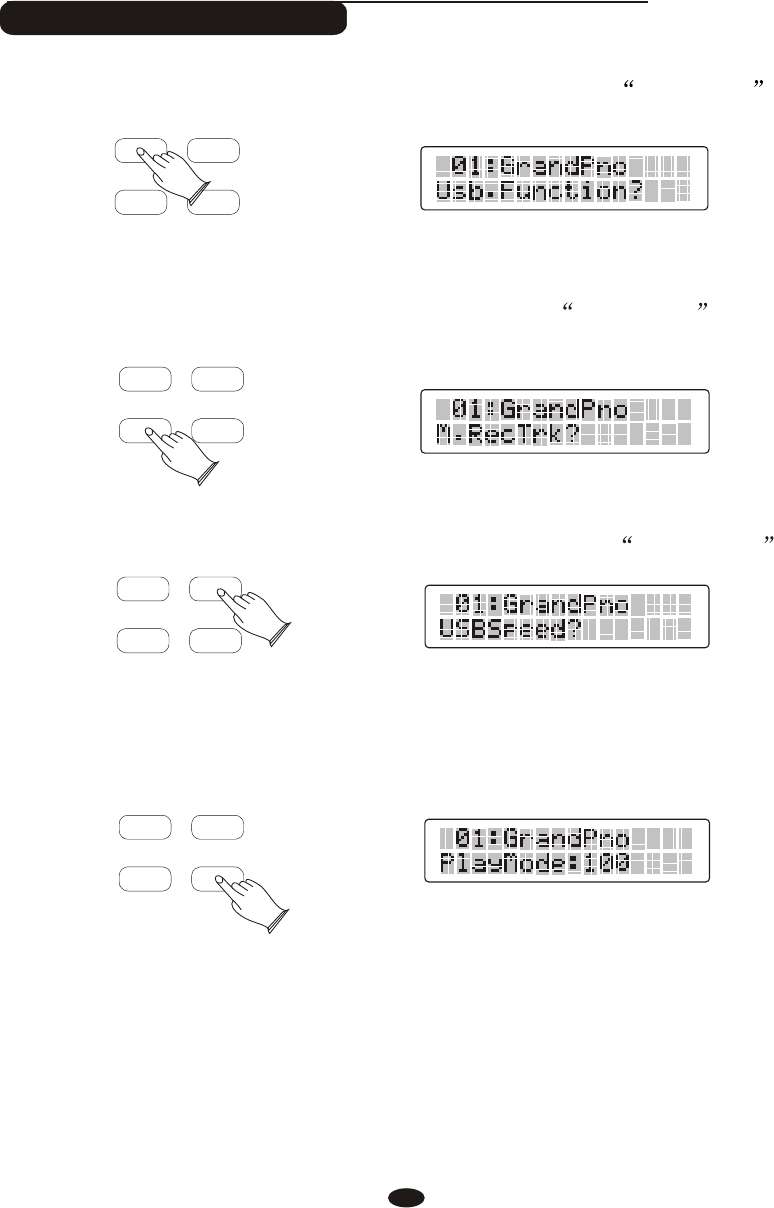
USB Speed
Press [ENTER] button to confirm, LCD will display M.RecTrk?
Use [+/-] buttons or the [DATA CONTROL] knob to select USBSpeed?
Press [ENTER] button to confirm, use [+/-] buttons or the [DATA CONTROL]
knob to select USB speed.
Press the [+] and [-] buttons simultaneously to restore the default
value: 100.
Press the [FUNCTION] button repeatedly, LCD will display Usb.Function?
FUNCTION
FUNCTION
ENTER
ENTER
+
-
FUNCTION
FUNCTION
ENTER
+
-
FUNCTION
FUNCTION
FUNCTION
ENTER
ENTER
ENTER
+
+
-
-
51
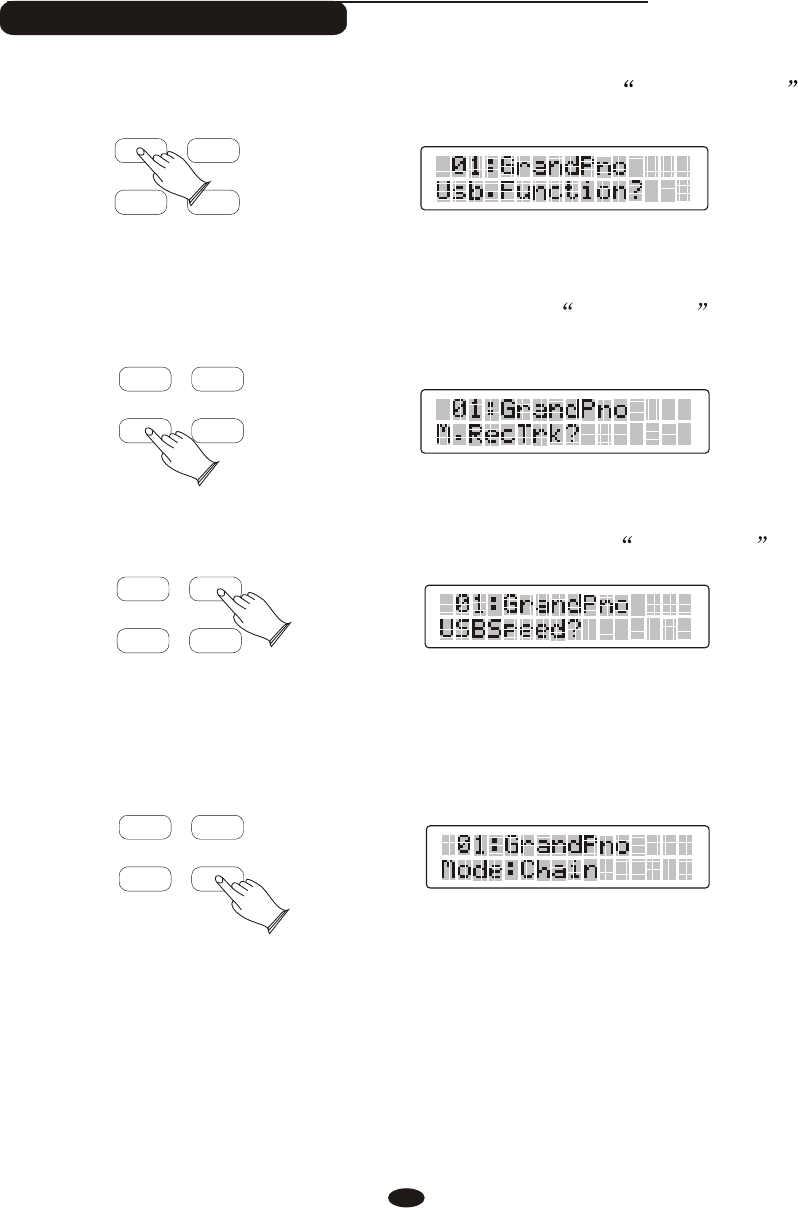
Play Mood
Press [ENTER] button to confirm, LCD will display M.RecTrk?
Use [+/-] buttons or the [DATA CONTROL] knob to select PlayMode?
Press [ENTER] button to confirm, use [+/-] buttons or the [DATA CONTROL]
knob to select the play mode: .
Press the [+] and [-] buttons simultaneously to restore the default
playmode: .
Single,Chain,Random
Chain
Press the [FUNCTION] button repeatedly, LCD will display Usb.Function?
FUNCTION
FUNCTION
ENTER
ENTER
+
-
FUNCTION
FUNCTION
ENTER
+
-
FUNCTION
FUNCTION
FUNCTION
ENTER
ENTER
ENTER
+
+
-
-
52
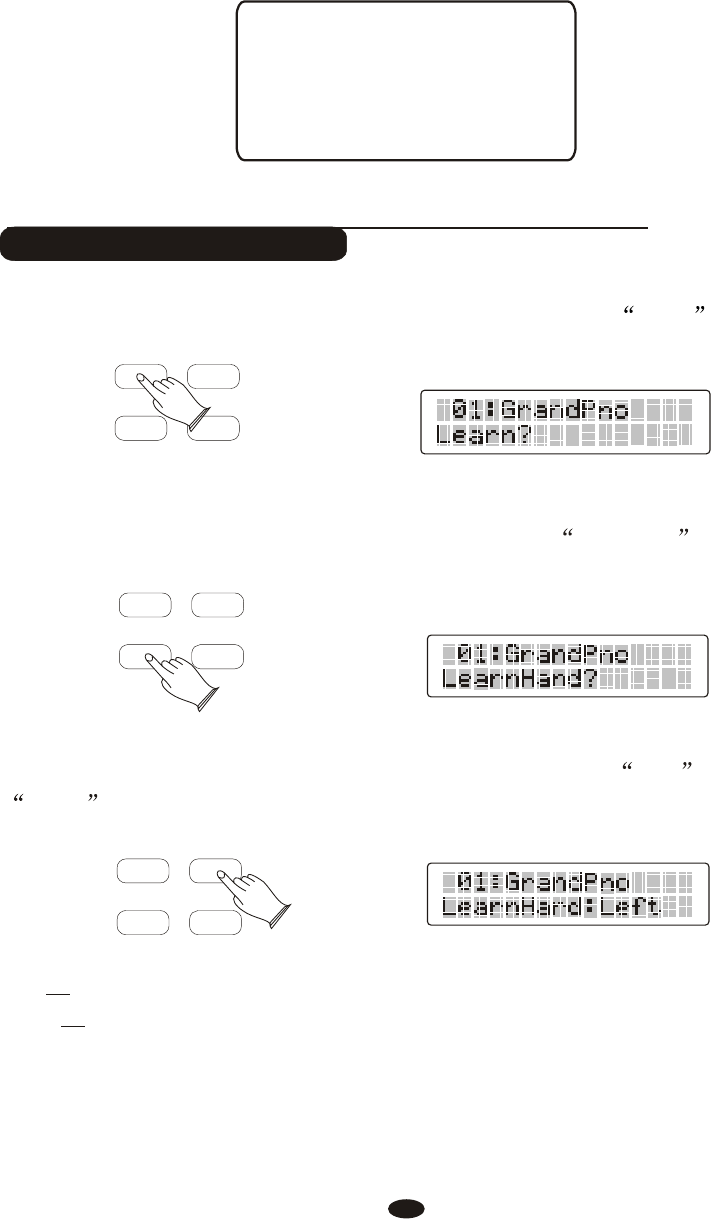
Single------ Single play
Chain------Order play
Random------Then play
Left/right Hand
Press [ENTER] button to confirm, LCD will display ?
Use [+/-] buttons or the [DATA CONTROL] knob to select Left
Right .
Left Left Hand.
Right Right Hand.
LearnHand
Press the [FUNCTION] button repeatedly, LCD will display Learn?
FUNCTION
FUNCTION
ENTER
ENTER
+
-
FUNCTION
FUNCTION
ENTER
+
-
FUNCTION
FUNCTION
ENTER
ENTER
+
-
53
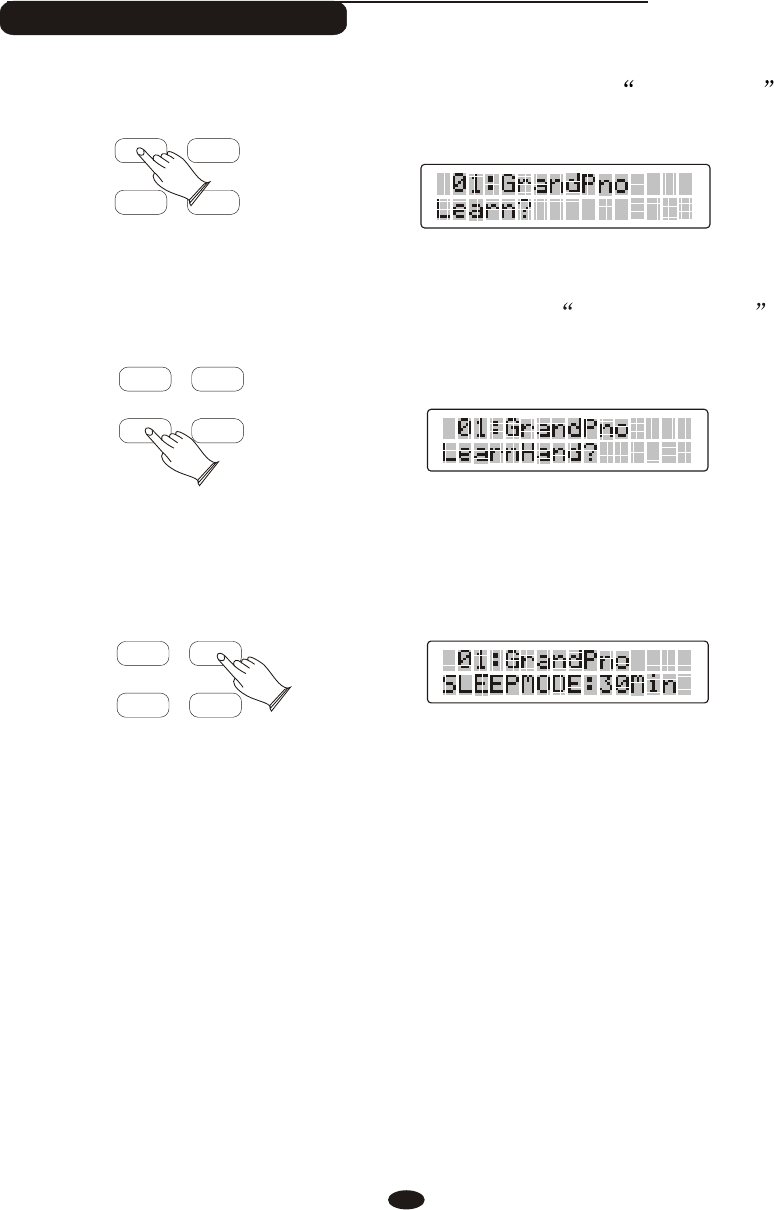
Auto Power Off
Press [ENTER] button to confirm, LCD will display
Press [ENTER] button to confirm, use [+/-] buttons or the
[DATA CONTROL] knob to select sleep mode:
.
Press the [+] and [-] buttons simultaneously to restore the default
value: 30Min.
Auto Power Off?
20Min, 30Min, 40Min,
50Min, 60Min and OFF
Press the [FUNCTION] button repeatedly, LCD will display Other Func?
FUNCTION
FUNCTION
ENTER
ENTER
+
-
FUNCTION
FUNCTION
ENTER
+
-
FUNCTION
FUNCTION
ENTER
ENTER
+
-
54
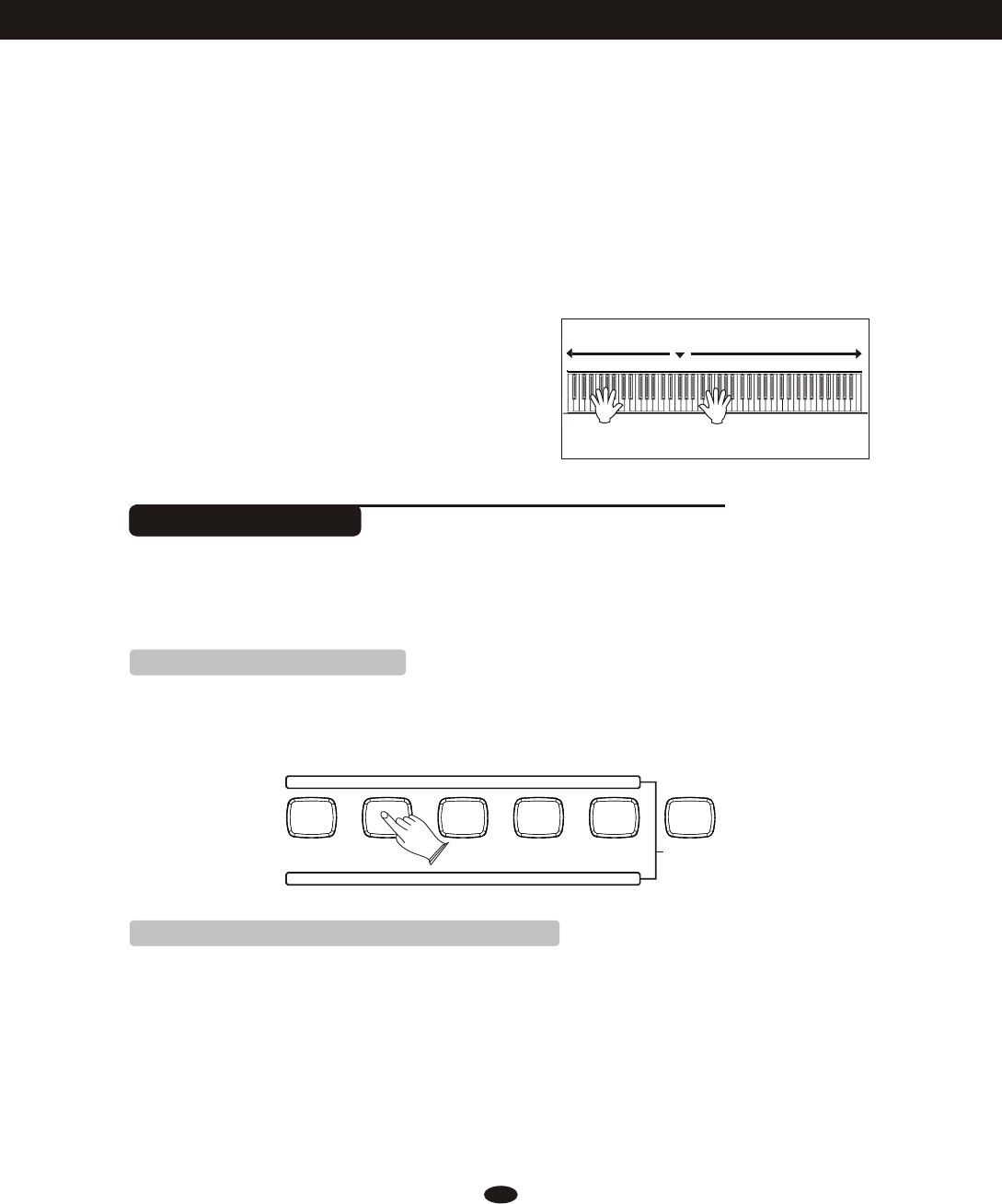
Auto Accompaniment
Your instrument has 203 accompaniment styles which can be used to provide
Fully-orchestrated Auto Accompaniment. When the Auto Accompaniment
function is turned on, your instrument will create fully-orchestrated rhythm, bass
and chord accompaniment based on chords you play with the left hand in the
Auto Accompaniment section of the keyboard(i.e. all keys to the left of the Auto
Accompaniment split point). The right-hand section of the keyboard is available
for normal playing.
The default Auto Accompaniment split
#
point is the F2 key. The Auto
Accompaniment section of the keyboard
Consists of all keys to its left .
Auto Accompaniment Normal
Left hand fingering
specifies the auto
accompaniment chords.
The right hand plays normally
Auto Accompaniment
2.Use Number Button and [+/-] Buttons
Press the [NUMBER] button, the indicator light color is red. Now you can use
number 0~9 or [+/-] Buttons to select style.
Selecting a Style
Press [VOICE/STYLE] button, the
[+] / [-] buttons or [DATA CONTROL] knob
indicator is lighted, you can use the voice button
on the panel, use to select the style.
1.Selecting Voice Directly
When the [VOICE/STYLE] button is lighted, means your piano is in Style
mode, now you can use the voice button on the panel to select voice directly, the
second row of buttons below as the direct style.
NUMBER
PIANO ORGAN GUITAR BASS USER VOICE
8 BEAT BALLAD DANCE DISCO USER STYLE
1 2 3 4 5
6 7 8 9 0
55
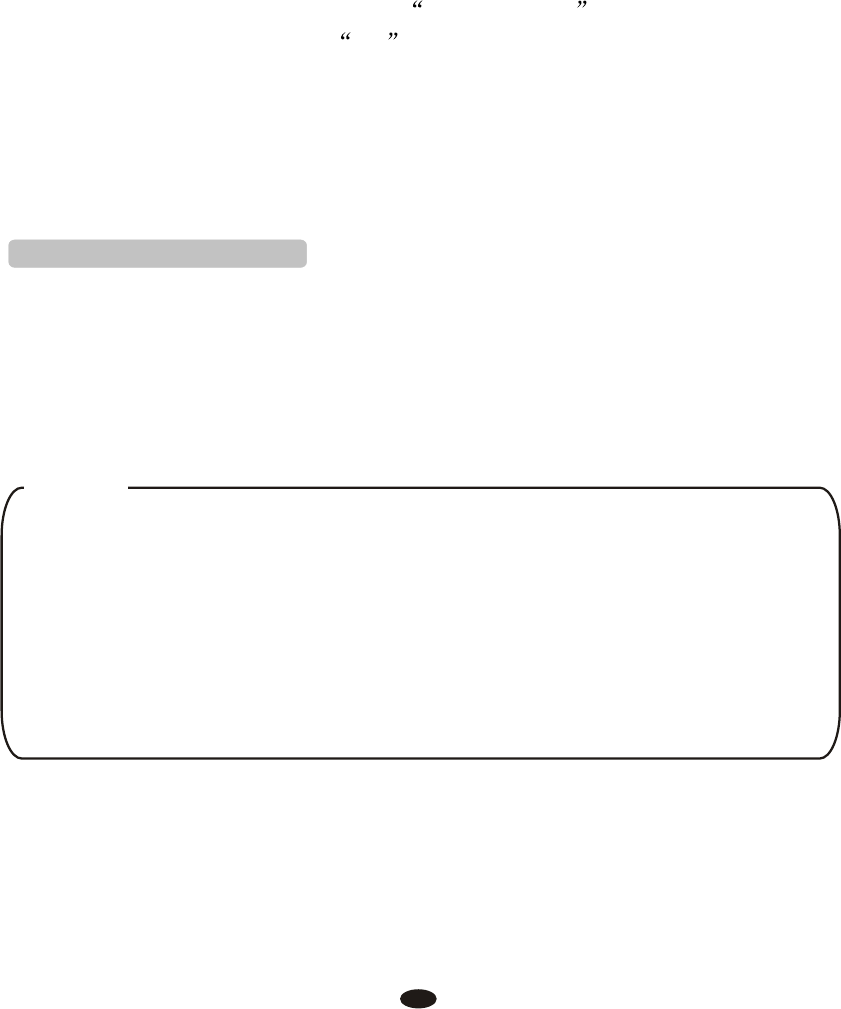
Style 01~09 :press number 0 first, then press 1~9
Style 10~99 : press two numeric buttons directly, for example: to select 99,
press the number 9 button and then the number 9 to select the
sound.
Style 100~203: press the number 1 to 2 of a button and hold it until the number
appears on the display, then you can enter the tens and ones digits.
For example: to select 123 Sea Shore press number 1 button
and hold it until 1_ appears, then press the number 2 and the
number 3 buttons to select the sound.
You also can press the [+/- ] buttons until the desired voice appears on the display.
NOTE
When [VOICE/STYLE] button is unlighted, it meams the current selection
in VOICE mode .
When [VOICE/STYLE] button is lighted, it meams the current selection in
STYLE mode .
When [NUMBER] button is unlighted, it meams the current selection in
direct VOICE or STYLE mode.
When [NUMBER] button is lighted, it meams the current selection in
NUMBER SELECT mode .
In the Style Mode, clockwise or counterclockwise rotation [DATA CONTROL],
can quickly select the Style.
Clockwise rotation is increasing rapidly, counterclockwise rotation for the rapid
decline.
3.Use Data Control Knob
56
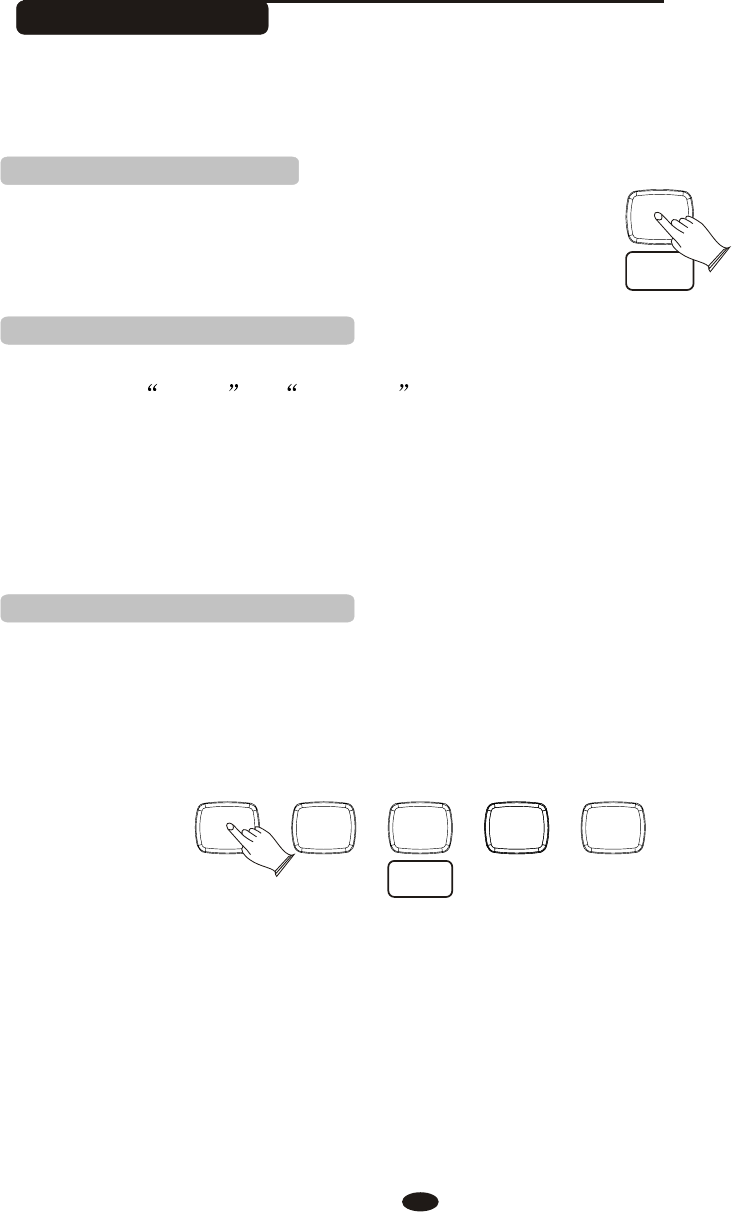
Start the Stlyle
Press [VOICE/STYLE] button, the
[+] / [-] buttons or [DATA CONTROL] knob
Reference: Chord in Keymood function. P13
indicator is lighted, you can use the voice button
on the panel, use to select the style.
1. Start Immediately
Press [START/STOP] button to start the style.
2. Turn the Chord Function On
The left hand section of the keyboard becomes the Auto Accompaniment section,
and chords played in this section are automatically detected and used as a basis
of for fully automatic accompaniment with the selected style.
Press the [SYNCHRO] button to enter the sync start waiting mode, then the
accompaniment will start when you play the first chord on the Auto Accompaniment
section of the keyboard.
START
STOP
3. Using Synchro Start
FILL IN 2
FILL IN 2
VARIATION
VARIATION
SYNCHRO
SYNCHRO INTRO
ENDING
START
START
STOP
STOP
FILL IN 1
FILL IN 1
57
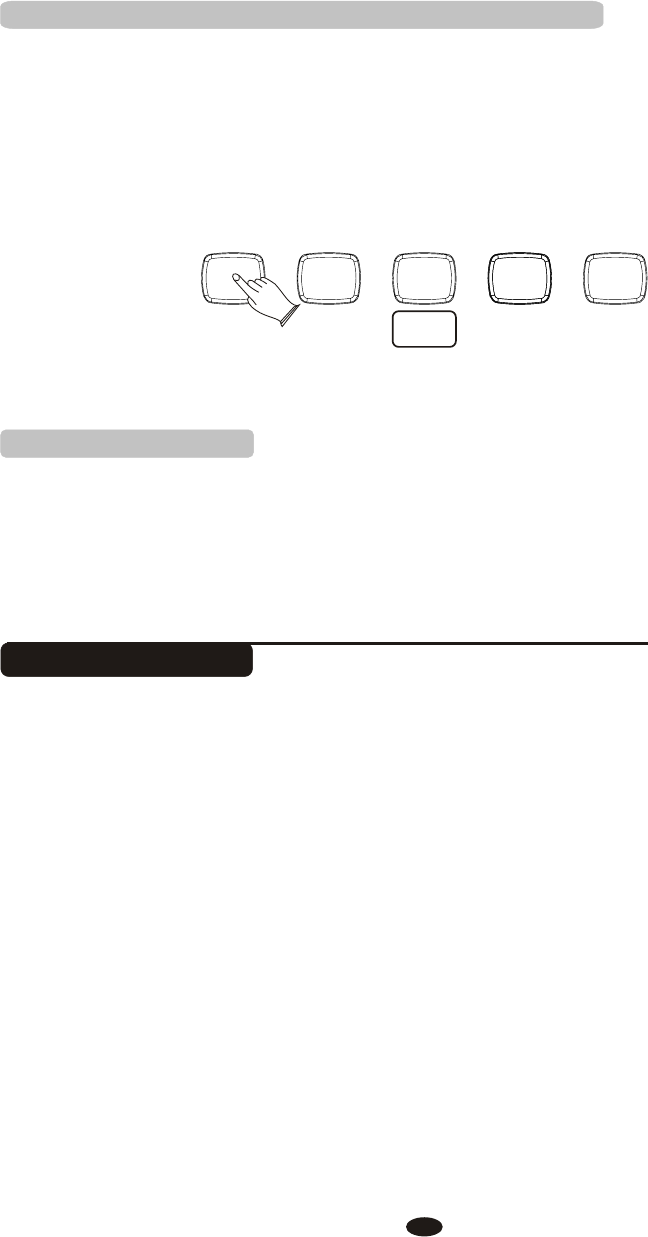
Press the [SYNCHRO] button and then press the [FILL IN 1] or
[FILL 2/VARIATION] button, the accompaniment will start from Fill In as soon
as a chord is detected in the Auto Accompaniment section of the keyboard.
You can do this in one of three ways.
a. Stop Immediately
The accompaniment can be stopped at any time by pressing the [START/STOP]
button.
b. Ending Stop
Press the [INTRO/EDNING] button, the style stops after the ending section is
finished.
Any of your instrument accompaniment patterns can be started with an appropriate
introduction by pressing the [INTRO/ENDING] button directly.
If you press the [SYNCHRO] button and then press the [INTRO/ENDING] button,
the accompaniment will start from the introduction as soon as a chord is detected
in the Auto Accompaniment section of the keyboard.
4.Starting the Accompaniment With an Introduction
5. Using Fill In Start
Stop the Style
FILL IN 2
VARIATION
VARIATION
SYNCHRO
SYNCHRO
INTRO
INTRO
ENDING
ENDING
START
START
STOP
FILL IN 1
FILL IN 1
58
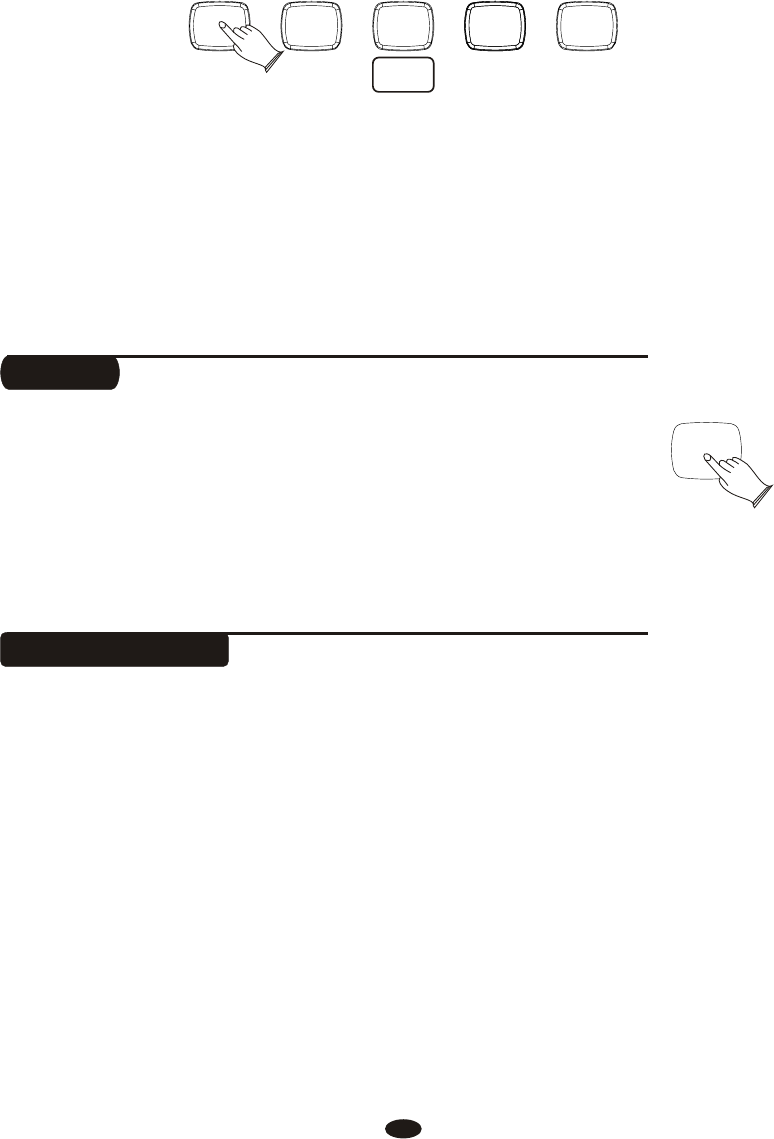
c. Pressing the [SYNCHRO] Button
This immediately stops style and automatically enables Sync Start, letting you
re-start the style by simply playing a chord or key in the auto accompaniment area
of the keyboard.
FILL IN 2
FILL IN 2
VARIATION
VARIATION
SYNCHRO
SYNCHRO INTRO
ENDING
ENDING
START
START
STOP
STOP
FILL IN 1
FILL IN 1
Hold down the [FILL IN 1] or [ ]
button when the style is playing, the selected FILL pattern repeats continuously
until button is released.
Press the [FILL IN 1] button at any time while the accompaniment is playing to
add a one-measurefill-in.
When the accompaniment is playing, press [FILL 2 /VARIATION] button, fill-in
accompaniment will immediately start playing, continuing with the
FILL 2/ VARIATION Section. FILL 2/VARIATION
Fade
Press [FADE] button makes rhythm fade up when starting
the rhythm.
While rhythm is playing, press [FADE] button to make
rhythm fade away.
Adding Fill-In
FADE
59
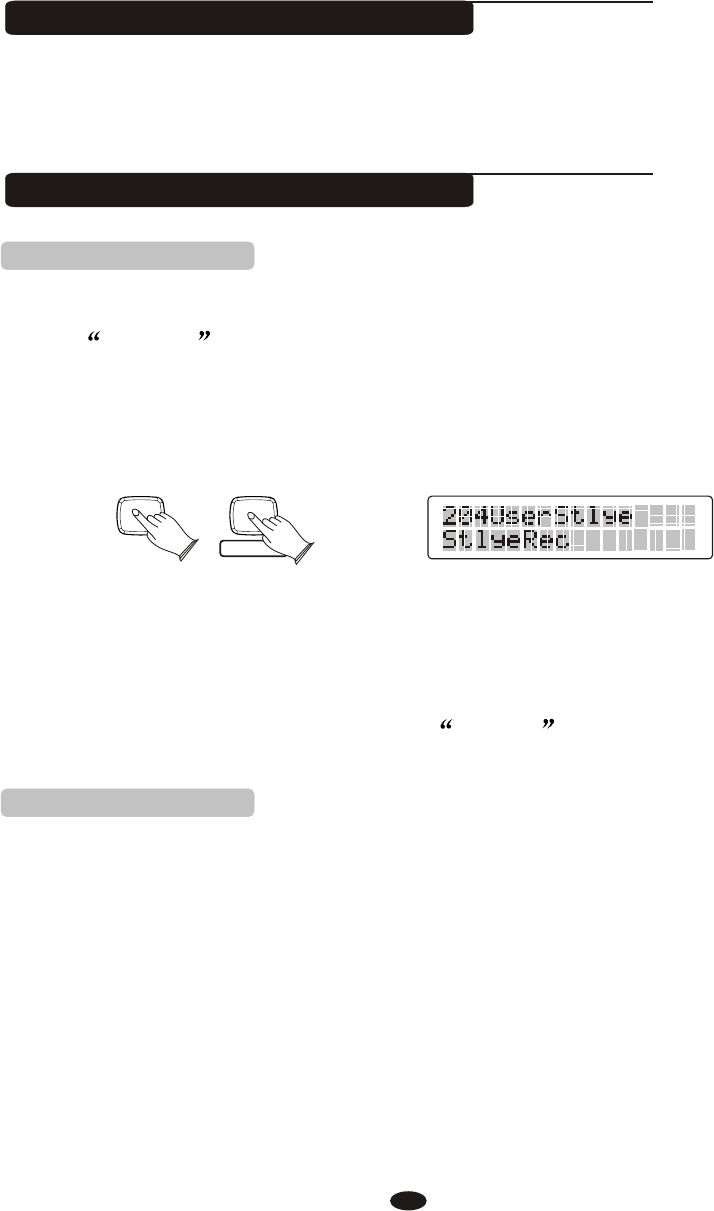
Use the ACC. VOLUME Control to adjust the Accompaniment volume.
Adjusting the Accompaniment Volume
User rhythm recording
Save User Style
Press [EDIT] button and [USER STYLE] button at the same time, the LCD will
display StyleRec , then press one key to start record.The [START/STOP]
button indicator is light, there is 2 section rhythm cycle performance. At the same
time start the rhythm, can be arbitrarily added percussion. Press [START/STOP]
button to stop the recording.
Press the [START/STOP] button to play the recording.
At this time,press and hold down the [USER STYLE] button to save the
recorded user style, the LCD will display Save Ok .
Load User Style
Press the [USER STYLE] button, indicator is light, You can load the current
recorded user rhythm.
USER VOICE
USER STYLE
USER EDIT
60
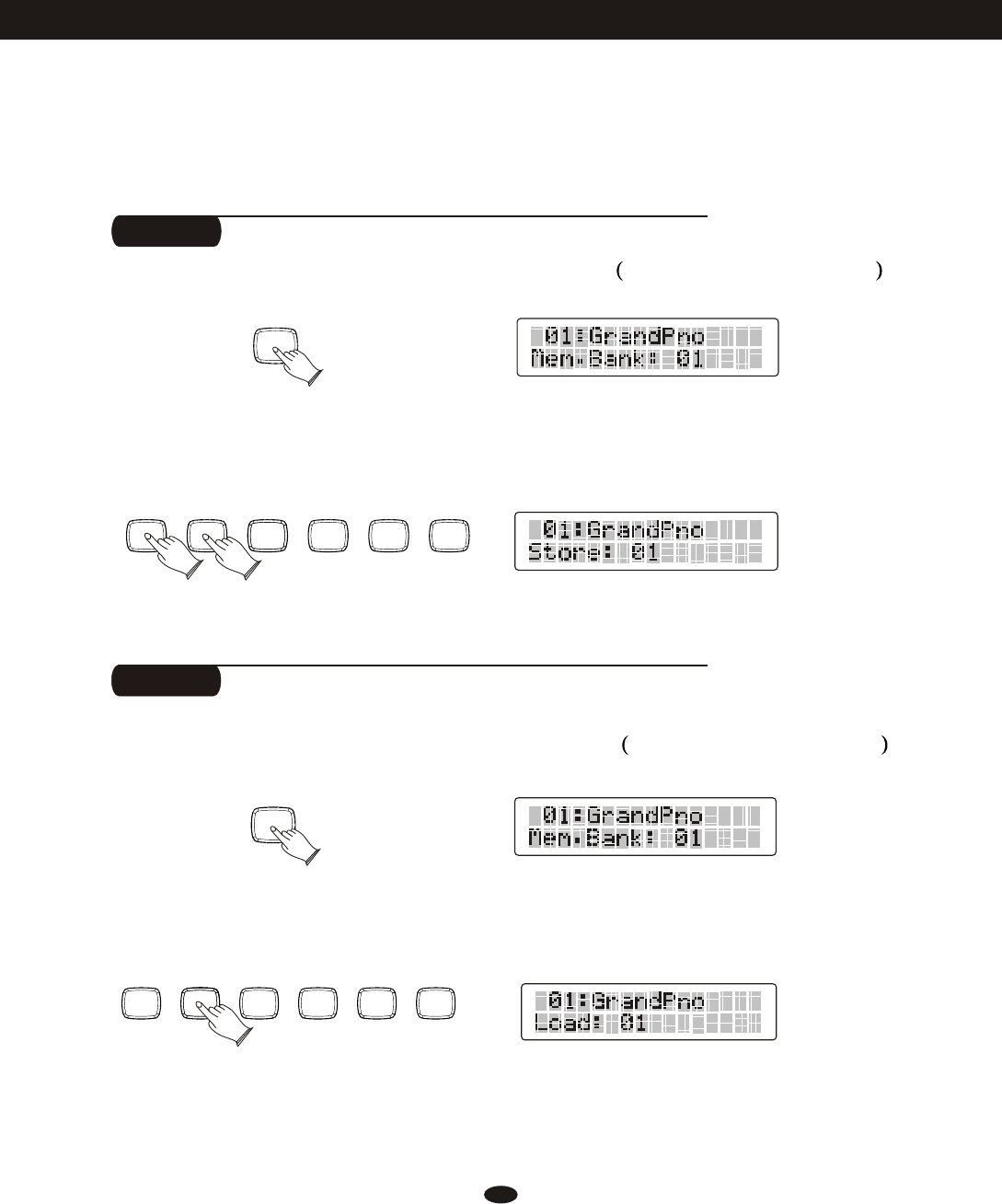
Registration Memory
The piano can store 5 groups x 6 banks of panel settings. By pressing the
memory button, you can recall these settings rapidly. You can preset the panel settings to suit
to your performance and store them to the registration memory positions.
corresponding
a.Press
b.H
[STORE/BANK] button repeatedly to select 1MmryBank~6MmryBank
old down the [STORE/BANK] button, and then Press the [M1-M5] button, the
current panel settings are stored in the memory.
Store
Load
a.Press
b.
[STORE/BANK] button repeatedly to select 1MmryBank~6MmryBank
Press the [M1-M6] buttons, can recall the information you have stored. The LCD
displays the panel position number.settings as well as memory
STORE / BANK
STORE / BANK
STORE / BANK
STORE / BANK
STORE / BANK
M1
M1
M2
M2
M3
M3
M4
M4
M5
M5
61
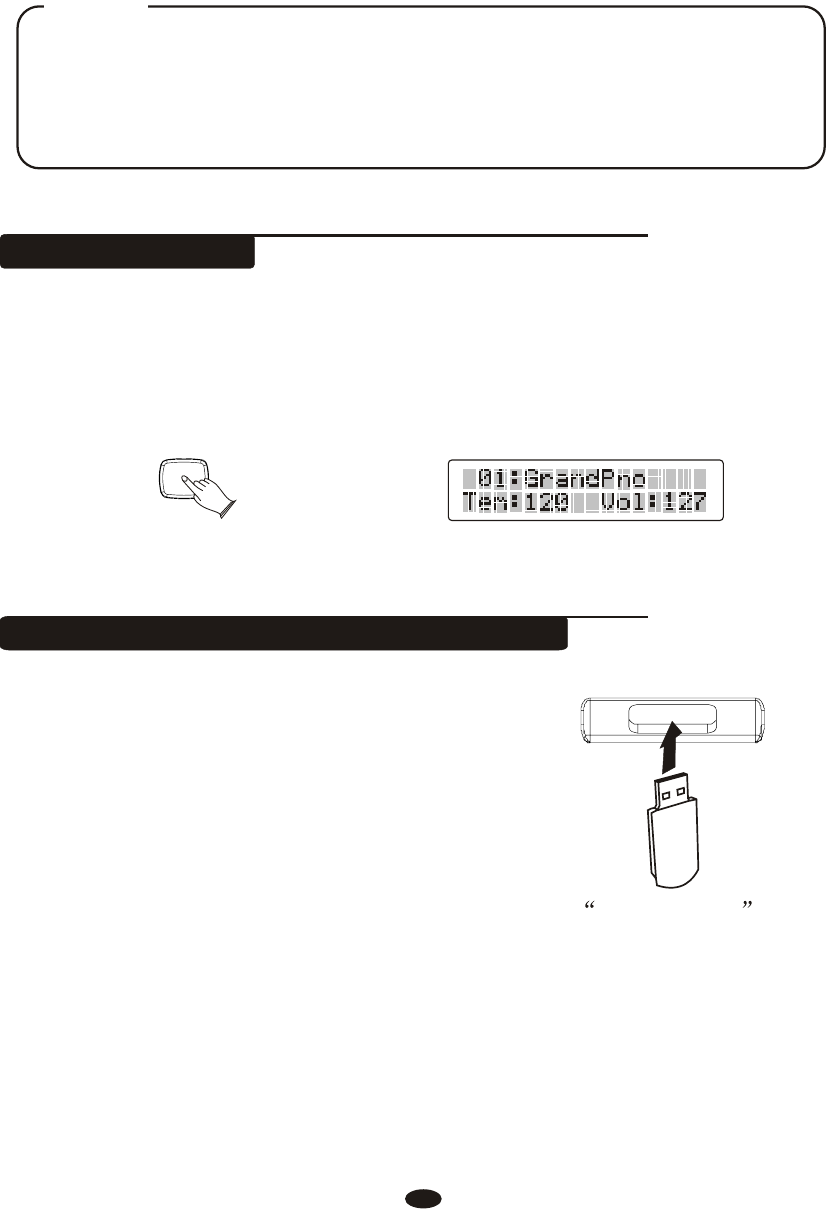
NOTE
Anytime you store to a REGISTRATION MEMORY button, all
settings previously stored in that button will be erased and
replaced by the new settings.
Saving the Registration Data to USB Disk
Insert the USB Disk into the USB terminal.
Press the [SAVE TO] button simultaneously, a message xxREGSTxxx
(xx indicates this file's sequence Num in UDisk. xxx indicates registration file
number ) appears, indicating your Registration Memory Settings are saved to USB
Disk, with 8 Registrations stored to a single file.
Press the [FREEZE] button to turn ON/OFF the freeze function and its icon.
When the freeze function is ON, the memory settings can be recalled with the
exception of any accompaniment settings. You can use the registration memory
function without affecting the accompaniment.
Freeze Function
FREEZE
62
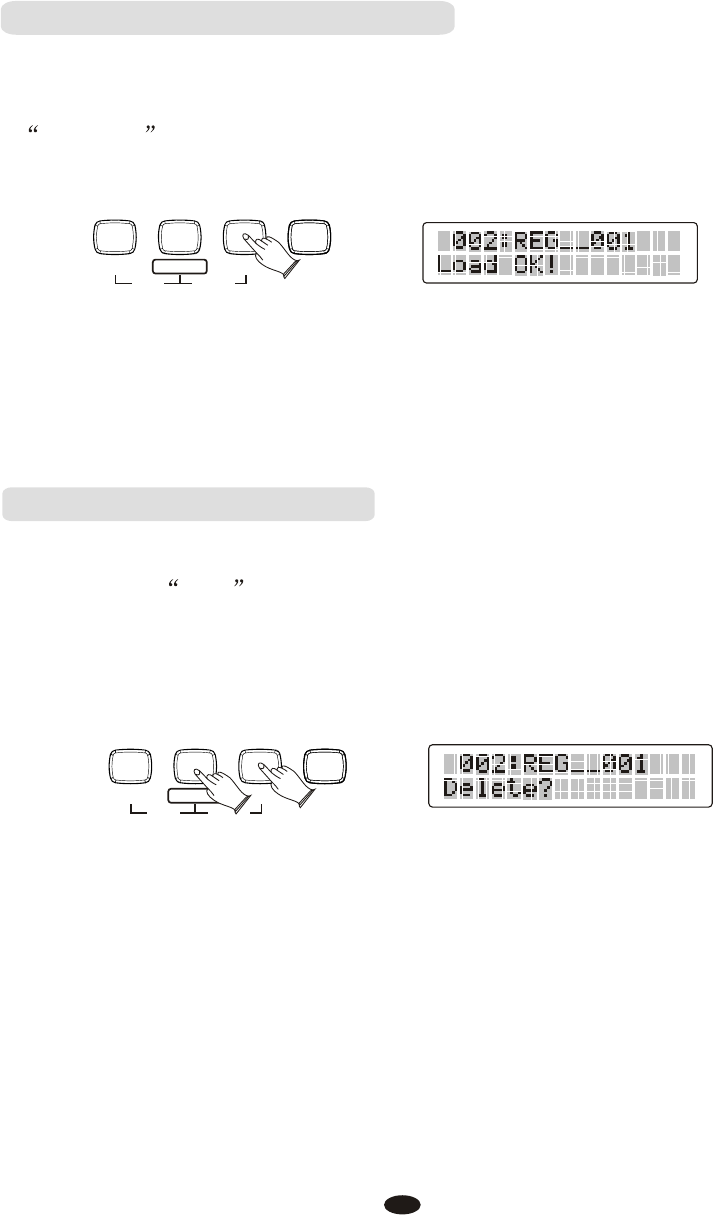
Delete REG File from USB
Insert the USB Disk into the USB terminal. Use buttons or [DATA CONTROL]
knob to select REG file you want to delete, then press the [RECORD]
button and press [PLAY/LOAD] button simultaneously. LCD shows:
[+/ -]
Press [+] button to delete the file.
Press [-] button to cancel.
Use Registration Data from USB
Insert the USB Disk into the USB terminal. Use
to select REG file, then press [PLAY/LOAD] button, display shows
Load OK! .
[+/-] button or [DATA CONTORL]
knob
30 Registrations will be loaded to the memory store on the panel. You
can recall the information you have loaded by pressing M1-M5.
USB FILE
USB FILE
RECORD
RECORD
MULTI
MULTI
PLAY / LOAD
PLAY / LOAD
SAVE TO
SAVE TO
DELETE
DELETE
63
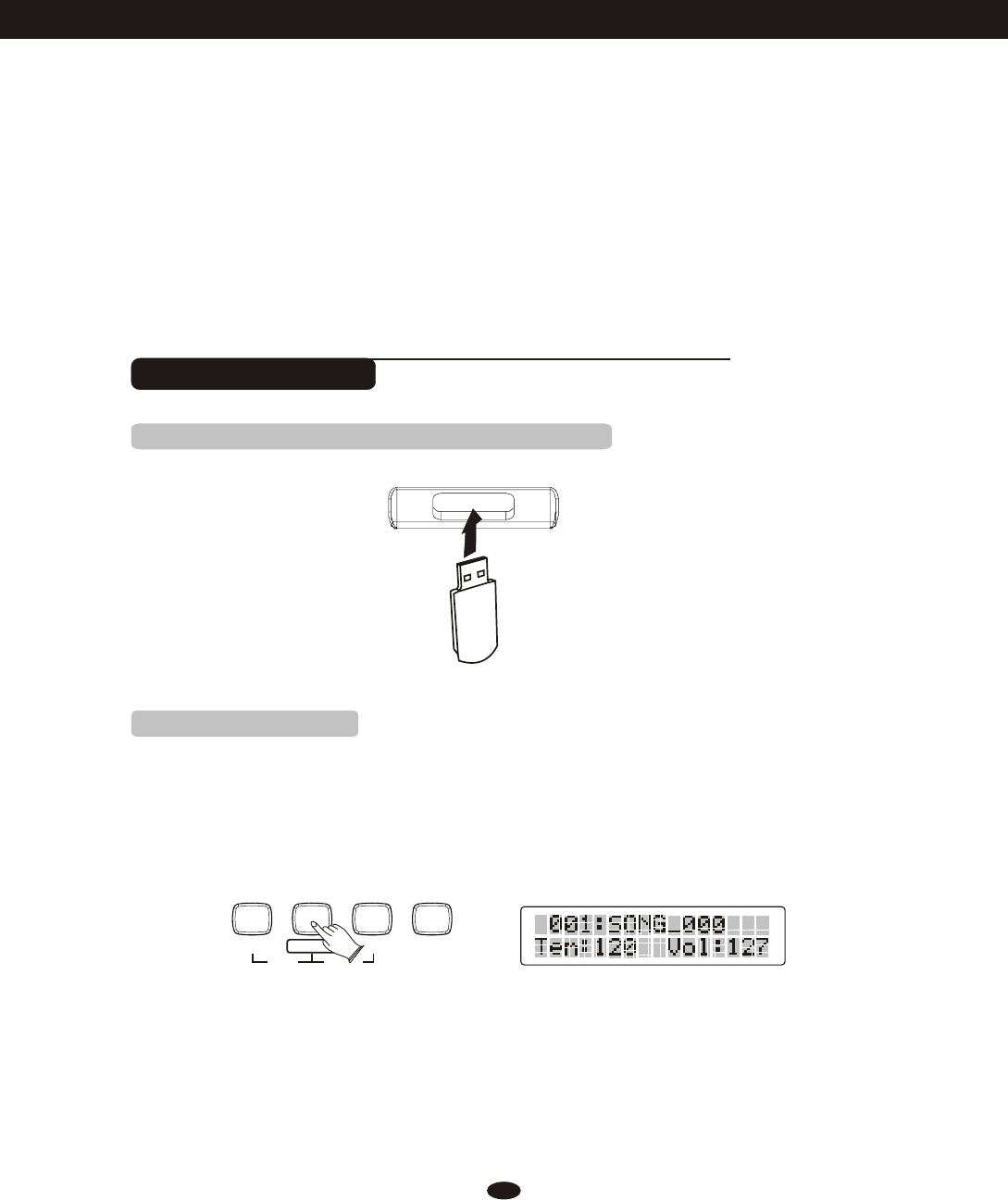
64
Song Recording
This digital piano lets you record your performances and Registration settings
to a USB Disk. Each user song lets you record up to sixteen independent tracks.
These include not only the voices for the keyboard performance, but also the auto
accompaniment parts.
It provides two different ways to record: Quick Recording and Multi Track
Recording.
(All the recording data will be saved automatically as MIDI Format 0 File
to your USB Disk).
Quick Recording
1. Insert the USB Disk into the USB Terminal
2. Start Recording
Press the [RECORD] button to start recording.
(The first one measures are tempo prompt only. It cannot record any data).
USB FILE RECORD
MULTI
PLAY / LOAD SAVE TO
DELETE
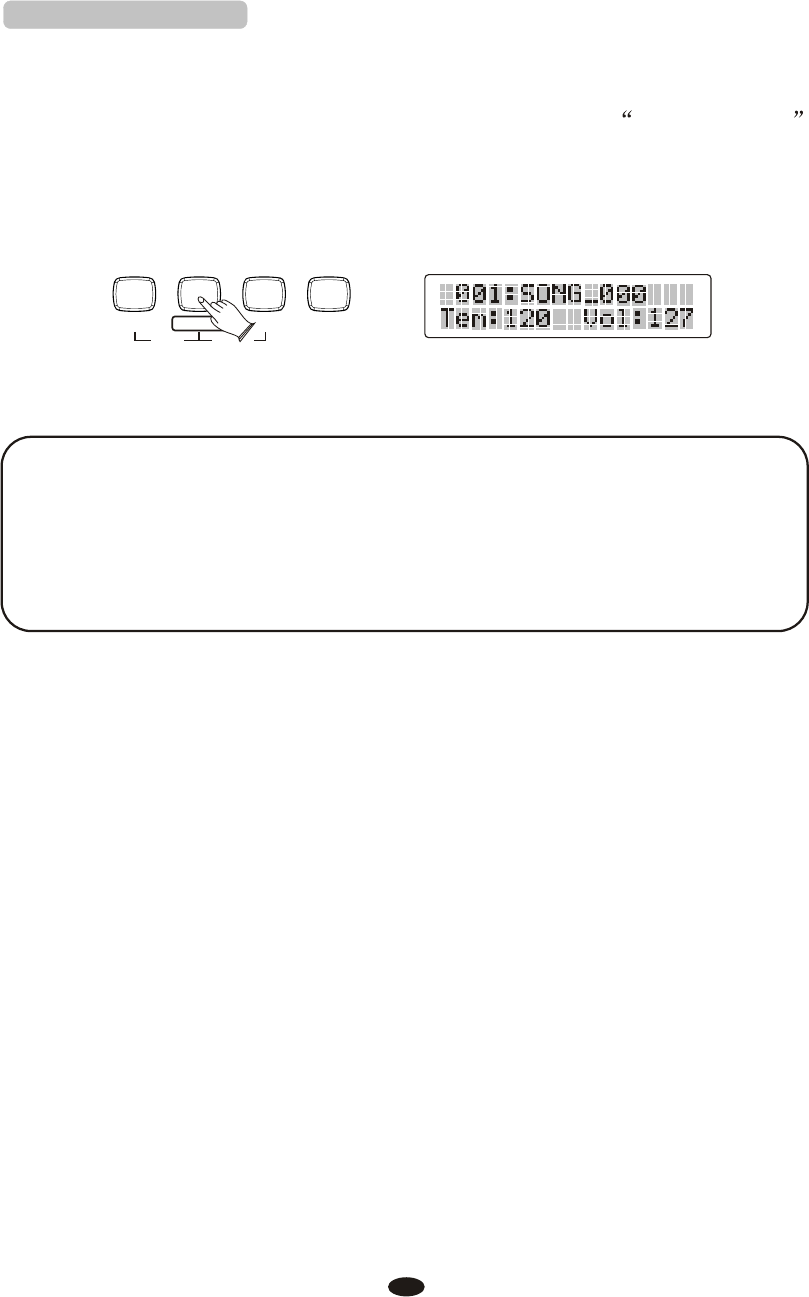
65
3. Stop Recording
Press [RECORD] button again to stop recording.
Recording stops and your performance is written to the song. The song to
which your performance is recorded is automatically named xxxSONG_xxx
(xxx indicates this file's sequence Num in UDisk. xxx indicates the recording file
number). You can edit the song as desired by computer or midi edit soft.
Quick Recording automatically makes track assignments as below:
Track 1--------- Main Voice
Track 2--------- Split Voice
Track 3--------- Dual Voice
You also can use accompaniment styles to record. The accompaniment style
will be recorded on track9-track16.
The quick recording method is different from the multi recording method. In
quick recording mode, track4-track8 are not allowed to record. but for multi
recording, the recorded data is recorded on tracks 1-16.
If you wish to re-record a user song that was originally recorded by the easy
recording method, please use Multi Track Recording.
USB FILE RECORD
MULTI
PLAY / LOAD SAVE TO
DELETE
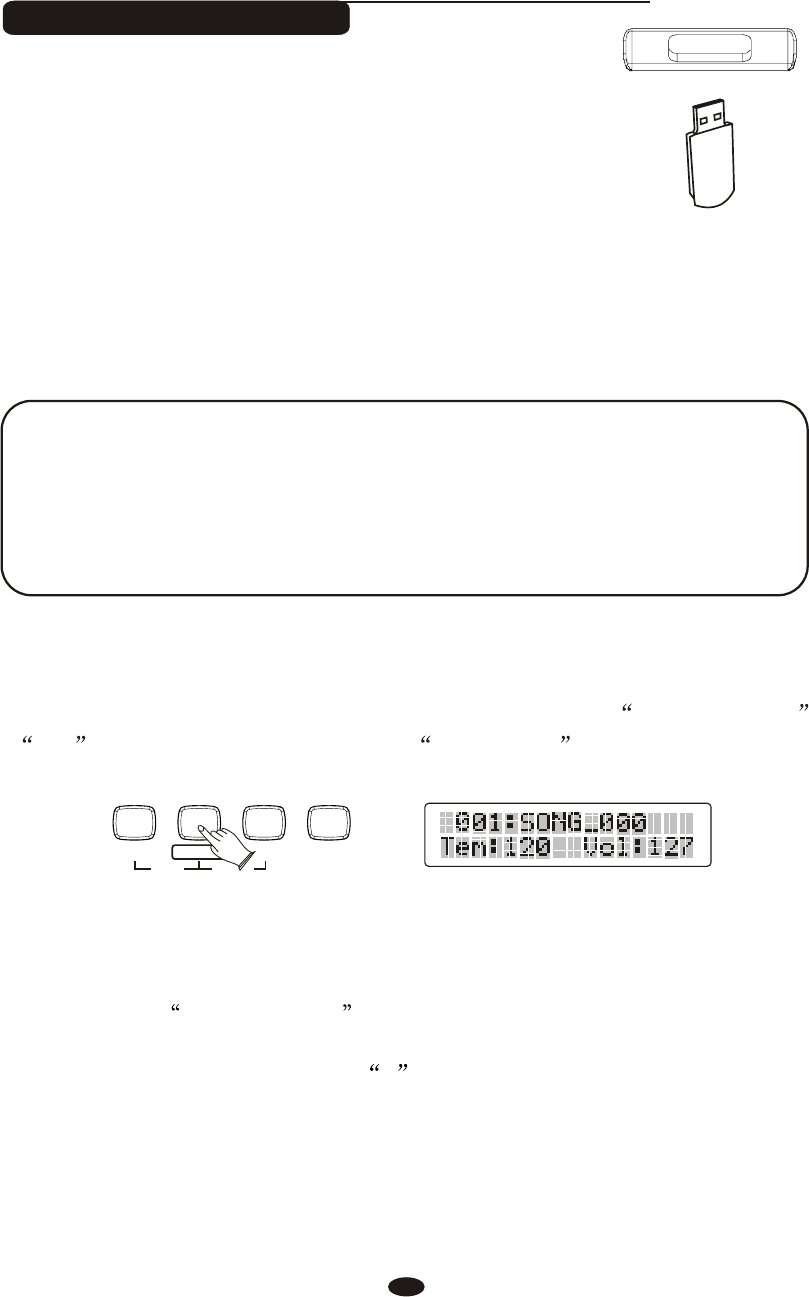
Multi Track Recording
a. Insert the USB Disk Into the USB Terminal
b. Press the [RECORD] button to start recording.
(The first one measures are tempo prompt only. It cannot record any data).
c. Press [RECORD] button again to stop recording.
Recording stops and your performance is written to the song. The song to
which your performance is recorded is automatically named xxxSONG_ xxx
( xxx indicates the song file number. SONG_xxx is the song's name).
d. Hold down [USB FILE] button ,then press [RECORD] button
Recording.
f.
to start
When the recording is finished, the recording file will be saved as a
new file named 002 SONG_001
Use the same operation as Step d to record more tracks. The name of
the new file will be saved in sequence.
Multi track recording provides two ways to record.
Use Auto Track Assignment.
Select Tracks by Yourself.
1. Use Auto Track Assignment.
Quick Recording automatically makes track assignments as below:
Track 1--------- Main Voice
Track 2--------- Split Voice
Track 3--------- Dual Voice
66
USB FILE RECORD
MULTI
PLAY / LOAD
PLAY / LOAD
SAVE TO
SAVE TO
DELETE
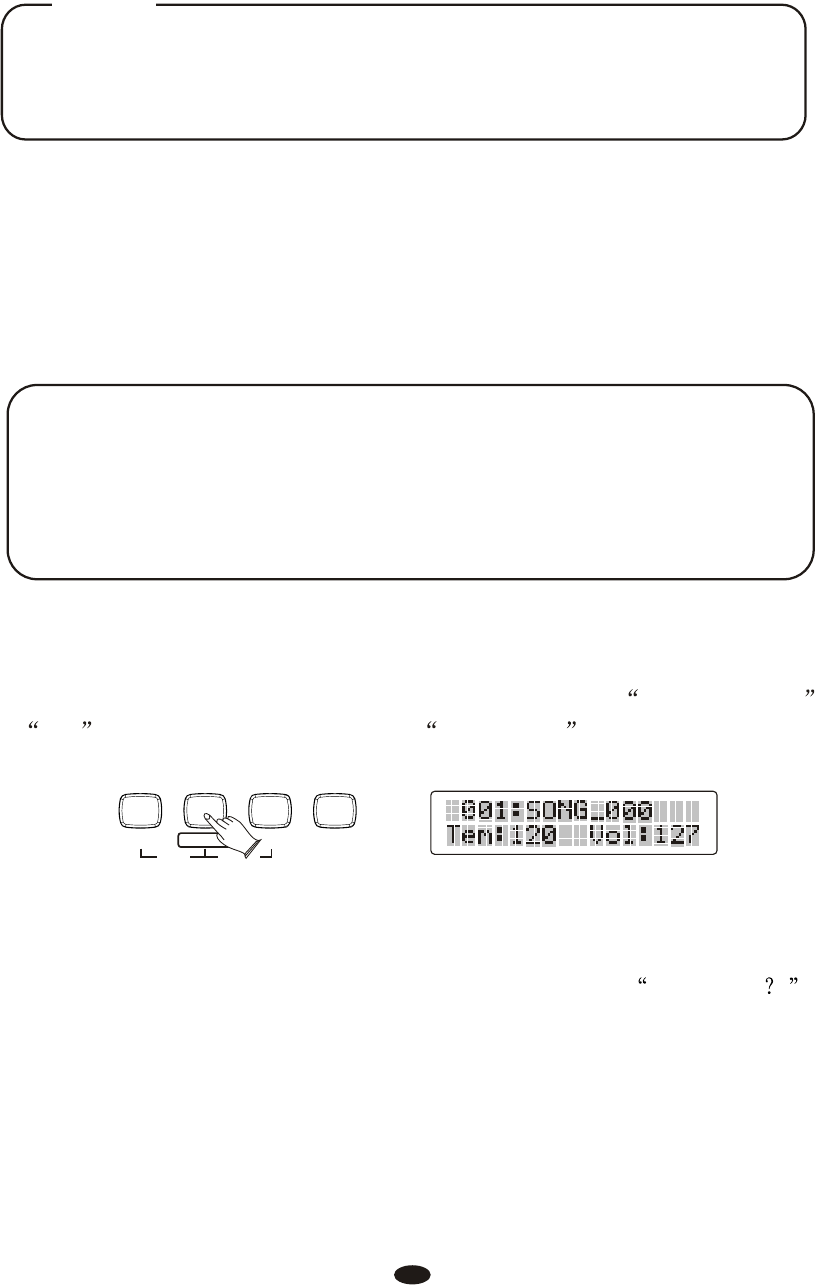
67
a. Insert the USB Disk Into the USB Terminal
2. Select Tracks by Yourself
b. Press the [RECORD] button to start recording.
(The first one measures are tempo prompt only. It cannot record any data).
c. Press [RECORD] button again to stop recording.
Recording stops and your performance is written to the song. The song to
which your performance is recorded is automatically named xxxSONG_ xxx
( xxx indicates the song file number. SONG_xxx is the song's name).
d. Press [FUNCTION] button, use [+] or [-] button to select
then press [ENTER] button, use [+] or [-] button to select Tracks (01-16,Off).
Default : 01R. RecTrk------ to select the Main Voice track (01-16, OFF)
02L. RecTrk------ to select the Split Voice track (01-16, OFF)
03D. RecTrk------ to select the Dual Voice track (01-16, OFF)
25M.RecTr ,
NOTE
If you want to record new files based on the pre-recorded multi-
track file, the new recording will begin with the first track. All
the tracks of the pre-recorded multi-track file will follow the
newly-recorded tracks in sequence.
Quick Recording automatically makes track assignments as below:
Track 1--------- Main Voice
Track 2--------- Split Voice
Track 3--------- Dual Voice
USB FILE RECORD
MULTI
PLAY / LOAD SAVE TO
DELETE
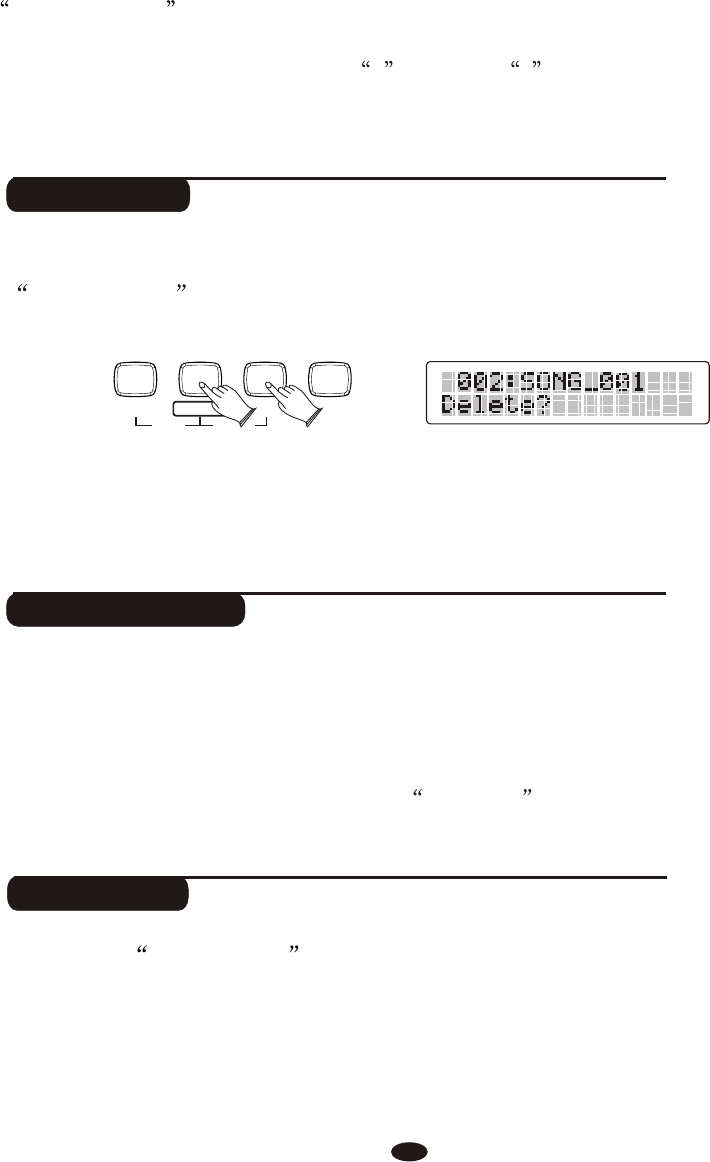
Delete Song
Insert the USB Disk into the USB terminal. Use [+] and [-] buttons to select
xxxSONGxxx file you want to delete, then hold down the [RECORD] button
and press [PLAY/LOAD] button. LCD shows:
Press [+] button to delete the file.
Press [-] button to cancel.
e.
.
If you record Main Voice only, please turn off the Split Track and Dual Track.
Hold down the [USB FILE] button ,then press [RECORD] button, when the
recording is finished, the recording file will be saved as a new file named
002 SONG_001
f Use the same operation as Step d and Step e to record more tracks. The
name of the new file will be saved in sequence.
USB Volume
Reference: USB Volume in function menu. P16
USB FILE RECORD
MULTI
PLAY / LOAD SAVE TO
DELETE
Use this button you can switch to USB mode immediately even the keyboard is in any of
other mode.
Insert the USB Disk into the USB socket. Press [USB FILES] button, if your disk is locked or
no supported files in it, the display will show Not Ready .
USB Files Button
68
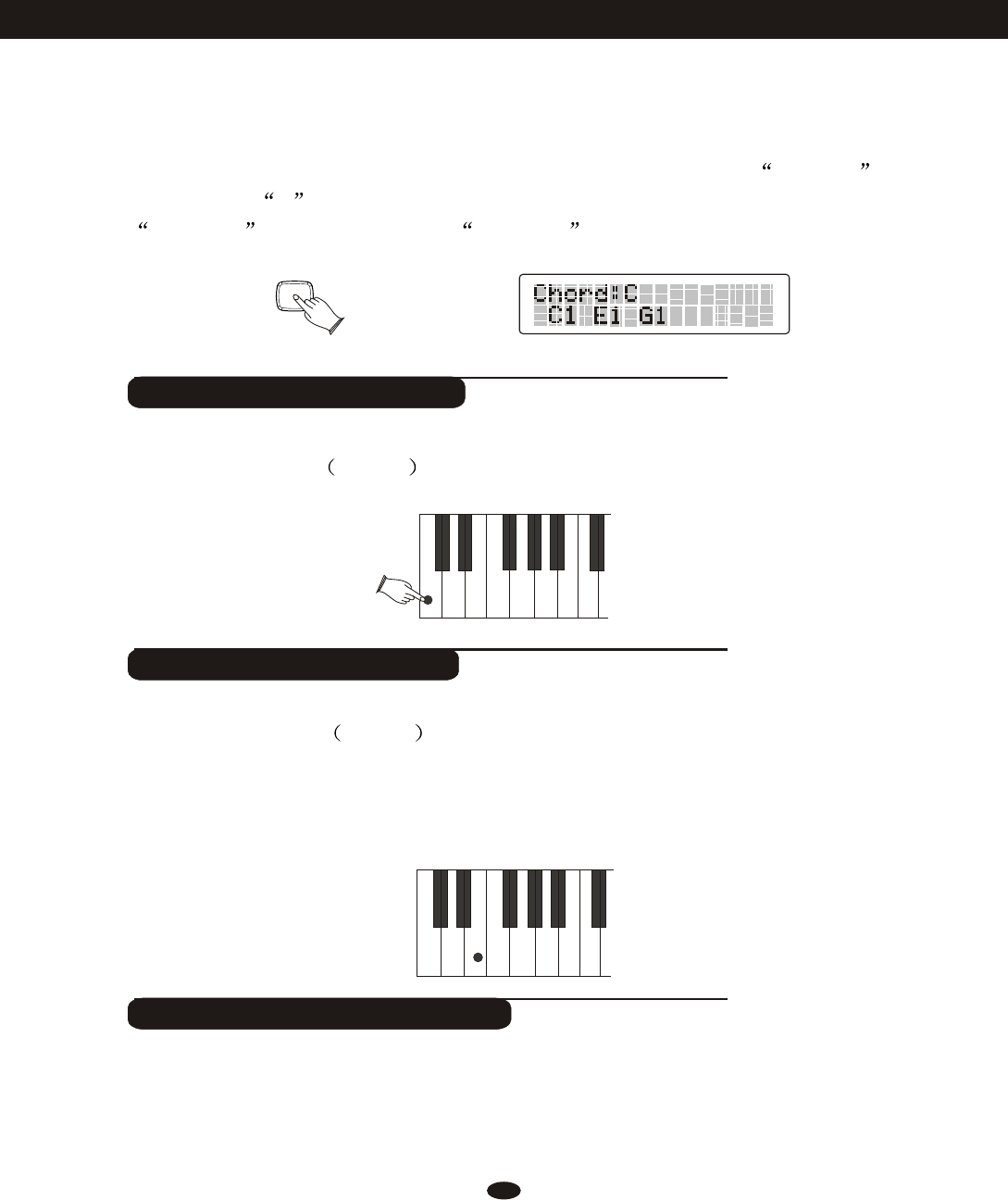
69
Chord Dictionary
The Chord Dictionary function allows you to look up chords. When you want to
quickly learn how to play a certain chord, the Dictionary function will help you
to look up the individual note of the chord.
Press the [CHORD DICTIONARY] button, the LED will display Chord:C in
the top row. ( C is the chord Root and the chord type ). The LED will display
C1 E1 G1 in the buttom row. ( C1 E1 G1 is the chord Root and the chord type ).
Press the root note of the Chord you want to look up. This needs to be in the
Chord Root section C3~B3 of the keyboard. For examle:
After pressing the Chord Root, select the Chord Type you want to look up in the
Chord Type section C4~B5 of the keyboard. The Chord Type includes Major
Triad, Minor Triad and Seventh Chord. Then the LCD will display the Chord
Type and key position you currently want to look up. If you press the correct
key as the notes shown on the LCD, the chord will start.
Press the [CHORD DICTIONARY] Button again to exit the function.
Selecting the Chord Root
CDB
C#/Db D#/Eb
EF
F#/Gb
G
G#/Ab
A
A#/Bb
Selecting the Chord Type
mM7
M7 M
M6
m(9)
6m
7(9)m
7
m
7b5m
7
M(9)
M
Exiting the Chord Dictionary
CHORD
DICTIONARY
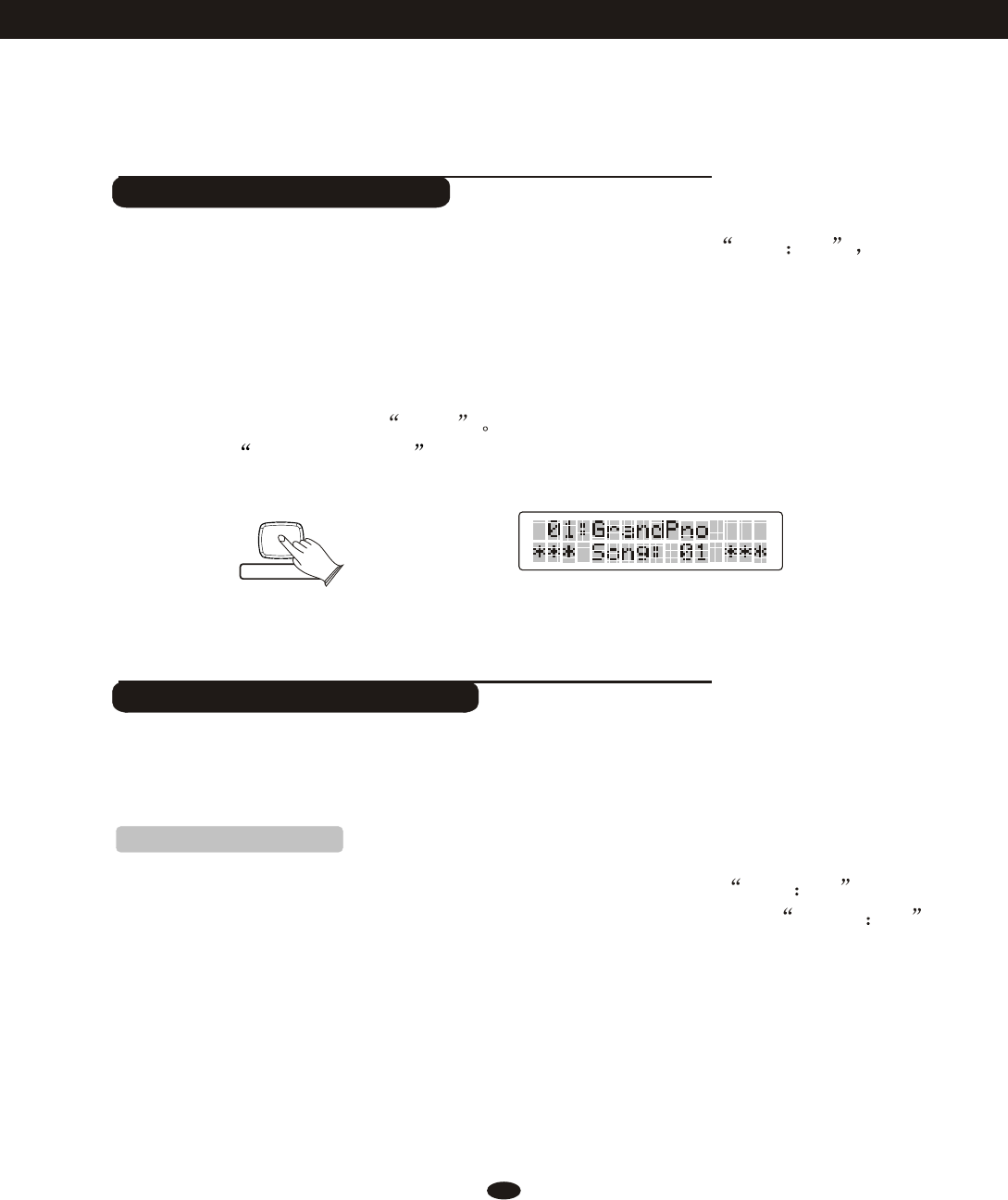
70
Teaching Function
Your instrument has an intellective teach function which can lead a beginner
learn how to play a song.
Hold down the [DEMO/LEARN] button,the LCDwill display
[DEMO/LEARN] button and
There are three teaching steps for you to learn from playing the songs step by step.
Song 01
then press the [PLAY/LOAD]button, the
[PLAY/LOAD]button indicator is flashing. You can playing the song at the same
time.After the song,use the [+/-] button to select other songs that you want.
Range: 01~55.
The defult song learning is Right
Reference: Left/right Hand in function menu. P53
the
Left/Right Hand
3 Steps of Learning Feature
Learn 1:
Hold down the [DEMO/LEARN] button, the LCD will display
ress the [DEMO/LEARN] button , the LCD will display
[DEMO/LEARN] button and
hen you press any one
key on the keyboard contineously, the teaching song will be played note by note.
It will be easy for you to learn.
Song 01 .
P repeatedly Learn1 01 ,
press the [PLAY/LOAD]button , the
[PLAY/LOAD] button indicator is flashing. Now w
the
DEMO / LEARN
DEMO / LEARN
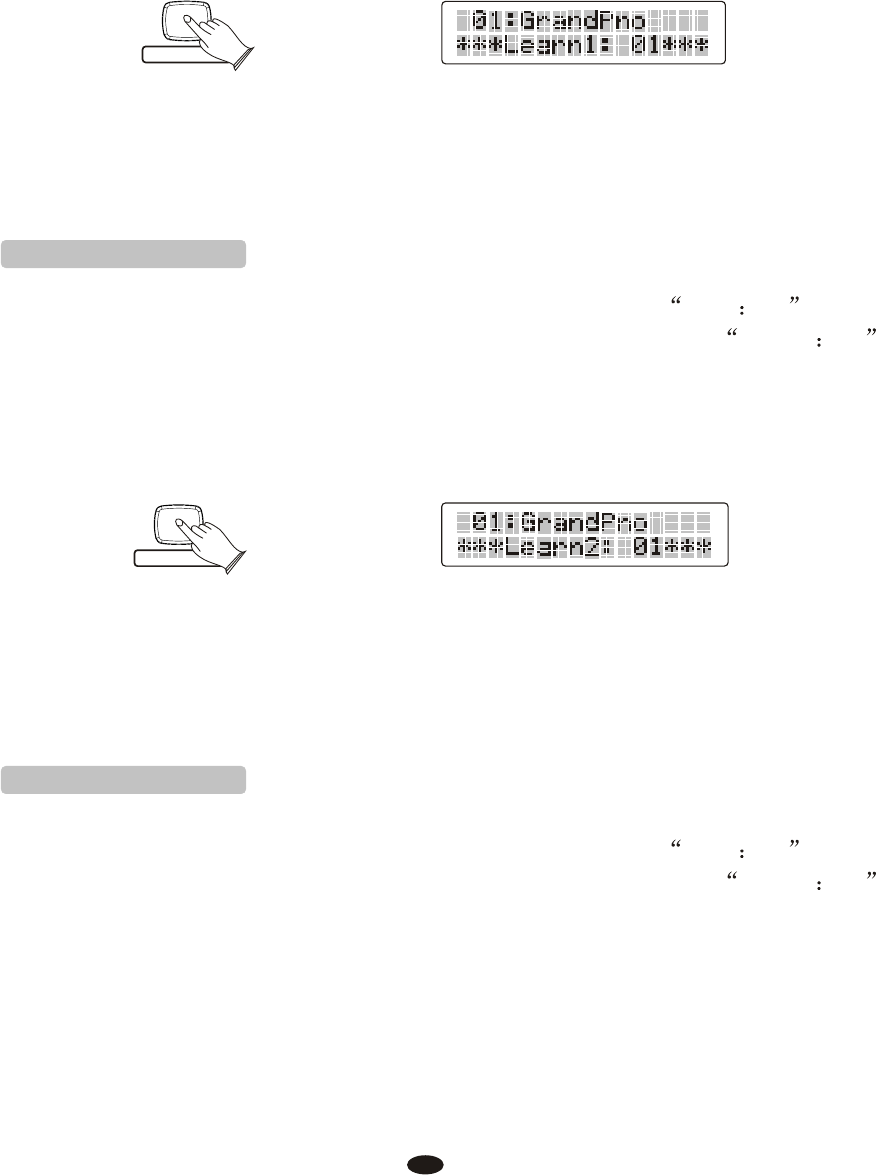
Press the [PLAY/LOAD]button again to stop the learning song mode or use [+/-]
buttonto select other learning song. Range: 01~80.
Learn 2:
Hold down the [DEMO/LEARN] button, the LCD will display
ress the [DEMO/LEARN] button , the LCD will display
[DEMO/LEARN] button and
he teaching song will
not go on until you press the correct key on the keyboard.You can learn how to
play a song in a very short time.
Song 01 .
P repeatedly Learn2 01 ,
press the [PLAY/LOAD]button , the
[PLAY/LOAD] button indicator is flashing. Now t
the
Press the [PLAY/LOAD]button again to stop the learning song mode or use [+/-]
buttonto select other learning song. Range: 01~80.
Learn 3:
Hold down the [DEMO/LEARN] button, the LCD will display
ress the [DEMO/LEARN] button , the LCD will display
[DEMO/LEARN] button and
ou can play the song with the instrument play.
You can play this song by yourself.
Song 01 .
P repeatedly Learn2 01 ,
press the [PLAY/LOAD]button , the [PLAY/LOAD]
button indicator is flashing. Now y
the
DEMO / LEARN
DEMO / LEARN
DEMO / LEARN
71
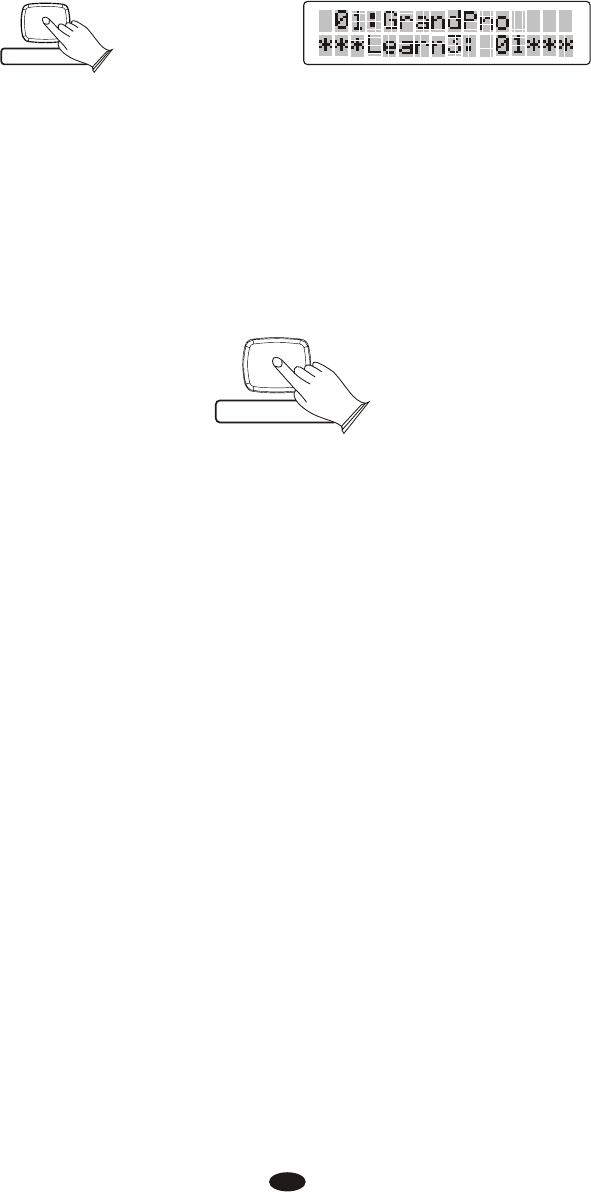
Press the [PLAY/LOAD]button again to stop the learning song mode or use [+/-]
buttonto select other learning song. Range: 01~80.
Press and hold down the [DEMO/LEARN] button to exit the Teaching Function.
DEMO / LEARN
DEMO / LEARN
DEMO / LEARN
72
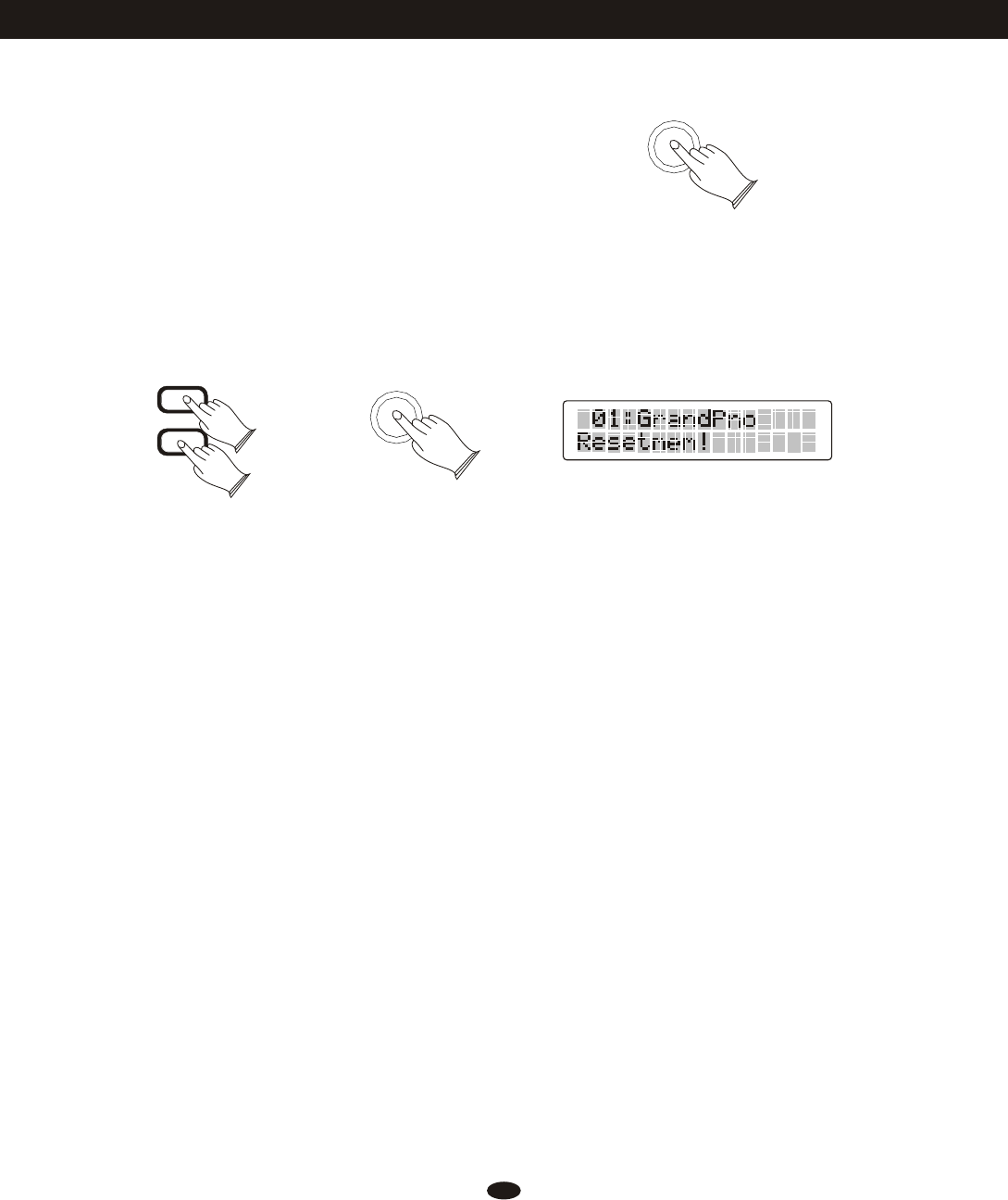
73
Factory Set
1. Turn off the power.
2. Hold down [+] and [-] buttons, then turn the power on, it can restore all
internal settings to factory set.
STANDBY/ON
STANDBY/ON
+
-
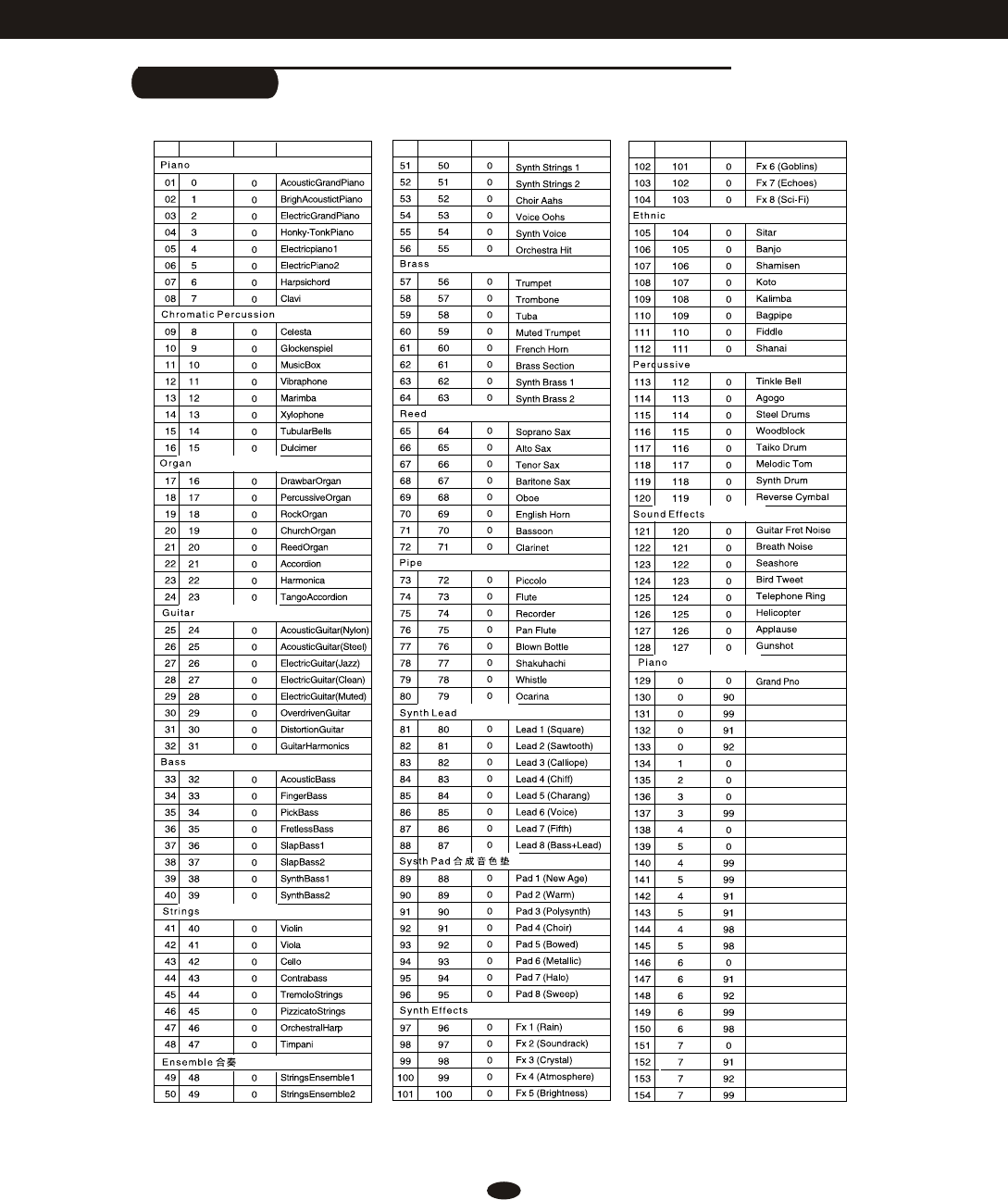
74
Appendix
Voice List
AcPiano1
AcPiano2
AcPiano3
AcPiano4
BritePno
El Grand Piano 1
HonkyTonk Piano 1
HonkyTonk 2
Electric piano 1
Electric piano 2
ElecPiano3
ElecPiano4
ElecPiano5
ElecPiano6
DetunedEP1
DetunedEP2
Harpsichord
Harpsichord2
Harpsichord3
Harpsichord4
CoupledHarpsichord
Clavi1
Clavinet2
Clavinet3
Clavinet4
NO VOICE NAME
.
BANK
PROGRAM CHANGE
PROGRAM CHANGE
NO VOICE NAME
.
BANK
PROGRAM CHANGE
PROGRAM CHANGE
NO VOICE NAME
.
BANK
PROGRAM CHANGE
PROGRAM CHANGE
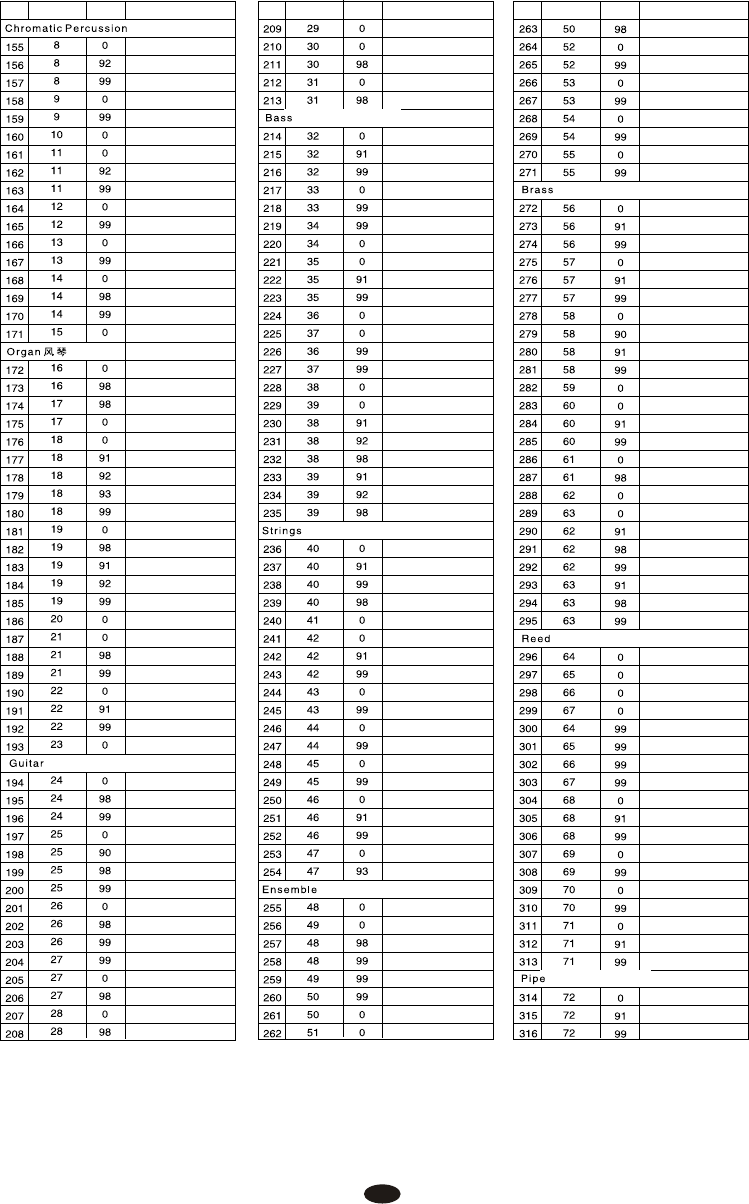
75
Celesta
Celesta 2
Celesta 3
Glocken1
Glocken2
Music Box
Vibraphone
Vibes 1
Vibes 2
Marimba 1
Marimba 2
Xylophone 1
Xylophone 2
Tubular Bells
ChurchBell
TubeBell
Dulcimer
Drawbar Organ
DetunedOrgan 1
DetunedOrgan 2
Percussive Organ
Rock Organ
ElecOrgan1
ElecOrgan2
ElecOrgan3
ElecOrgan4
Church Organ 1
ChurchOrgan 2
PipeOrgan1
PipeOrgan2
PipeOrgan3
Reed Organ
Accordion
ItalianAccordion
Accordion_MT
Harmonica1
Harmonica2
HarmoPan
Tango Accordion
Nylon Guitar
Ukulele
Guitar1
Steel Guitar 1
Mandolin
StringGuitar
Guitar2
Jazz Guitar
HawaiianGuitar
ElecGuitar1
ElecGuitar2
Clean Guitar
ChorusedGuitar
Muted Guitar
FunkGuitar
Overdriven Guitar
Distortion Guitar
FeedbackGuitar1
Guitar Harmonics
GuitarFeedback2 2
Acoustic Bass 1
Acou Bass 2
Acou Bass 3
Finger Bass
ElecBass 1
ElecBass 2
Pick Bass
Fretless Bass 1
Fretless 2
Fretless 3
Slap Bass 1
Slap Bass 2
Slap Bass 3
Slap Bass 4
Synth Bass 1
Synth Bass 2
SynthBass 3
SynthBass 4
SynthBass 5
SynthBass 6
SynthBass 7
SynthBass 8
Violin1
Violin2
Violin3
SlowViolin
Viola
Cello 1
Cello 2
Cello 3
Contrabass 1
ContraBass_MT
Tremolo Strings
DoctorSolo
Pizzicato Strings1
Pizzicato 2
Orchestral Harp 1
Harp 1
Harp 2
Timpani 1
Timpani 2
Strings Ensemble 1
Strings Ensemble 2
OrchestralPad
StringSection1
StringSection2
StringSection3
Synth Strings 1
Synth Strings 2
SynthStrings3
Choir Aahs
Chorale
Voice Oohs
SoundTrack
Synth Voice
FunnyVox
Orchestra Hit1
OrchestraHit 2
Trumpet 1
Trumpet 2
Trumpet
Trombone 1
Trombone 2
Trombone
Tuba
Tuba
BrassSection
BrassSection
Muted Trumpet
French Horn 1
FrenchHorns 2
FrenchHorns
Brass Section
Brass2
Synth Brass 1
Synth Brass
SynthBrass 3
SynthBrass
SynthBrass
SynthBrass
SynthBrass
SynthBrass
Soprano Sax
Alto Sax
Tenor Sax
Baritone Sax
Sax1
Sax2
Sax3
Sax4
Oboe
Oboe
Oboe2001
English Horn
English Horn
Bassoon
Bassoon
Clarinet
Clarinet 2
Clarinet
Piccolo 1
Piccolo 2
Piccolo 3
3
3
2
1
2
3
2
4
5
6
7
8
1
2
1
2
1
2
1
3
NO VOICE NAME
.
BANK
PROGRAM CHANGE
PROGRAM CHANGE
NO VOICE NAME
.
BANK
PROGRAM CHANGE
PROGRAM CHANGE
NO VOICE NAME
.
BANK
PROGRAM CHANGE
PROGRAM CHANGE
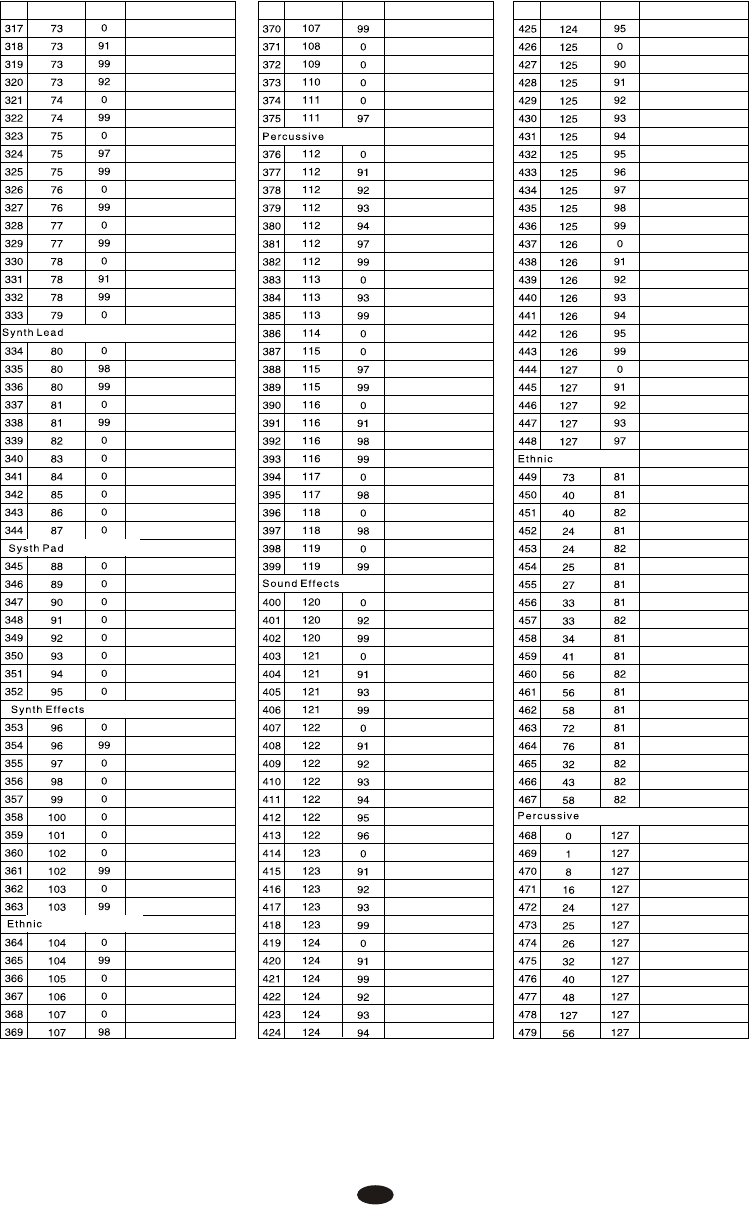
76
WindChimes
Helicopter
BurstNoise
CarEngine
CarStop
CarPass
CarCrash
Siren
Train
JetPlane
Starship
OneNoteJam
Applause
Laughing
Screaming
Punch
HeartBeat
FootSteps
SchoolDaze
Gunshot1
MachineGun
LazerGun
Explosion
JungleTune
Bangdi
Erhu 1
Erhu 2
Pipa 1
Pipa 2
Liuqin
Zhongruan
Guzheng 1
Guzheng 2
Yangqin
Banhu
Suona
SuonaHigh
LuShen
Hulusi
Xiao
Guqin
Matouqin
Reed
Standard
Standrd2
Room
Power
Eletroni
Synth
Dance
Jazz
Brush
Classic
Sino
Effect
Flute 1
Flute 2
Flute 3
BreathPipe
Recorder1
Recorder 2
Pan Flute
Sho
PanPipes
Blown Bottle1
Bottle Bottle2
Shakuhachi
Shakuhachi 2
Whistle 1
Whistle 2
Whistle 3
Ocarina
Lead 1 (Square)
Sine Wave
Square Wave
Lead 3 (Sawtooth)
DeepSnare
Lead 5 (Calliope)
Lead 7 (Chiff)
Lead 8 (Charang)
Lead 10(Voice)
Lead 12 (Fifth)
Lead 13 (Bass+Lead)
Pad 1 (New Age)
Pad 3 (Warm)
Pad 4 (Polysynth)
Pad 5 (Choir)
Pad 6 (Bowed)
Pad7(Metallic)
Pad 9 (Halo)
Pad 10 (Sweep)
Fx 1 (Rain)
IceRain_MT
Fx 2 (Soundrack)
Fx 3 (Crystal)
Fx 4 (Atmosphere)
Fx6(Brightness)
Fx 7 (Goblins)
Fx 8 (Echoes)
EchoPan
Fantasy1
Fantasy2
Sitar
Sitar_MT
Banjo
Shamisen
Koto1
Koto2
Koto_MT
Kalimba
Bagpipe
Fiddle
Shanai
BreathPipe
Tinkle Bell
EchoBell
WindBell
WaterBell
JungleTune
BellSinger
WarmBell
Agogo
SynMallet
MelodicTom
Steel Drums
Woodblock
ElecPerc 1
ElecPerc 2
Taiko Drum
TaikoRim
ConcertBassDrum
Taiko_MT
Melodic Tom1
MeloTom2
Synth Drum
808Tom 808
Reverse Cymbal
Cymbal
GuitarNoise
StringSlap
GtrCutNoise
Breath Noise
FluteKeyClick
Glasses
Triangle
Seashore
Rain
Thunder
Wind
Stream
Bubble
Atmosphere
Bird Tweet
Dog
HorseGallop
Bird 2
BirdTweet
Telephone 1
Telephone 2
Telephone 3
DoorCreaking
DoorSlam
Scratch
NO VOICE NAME
.
BANK
PROGRAM CHANGE
PROGRAM CHANGE
NO VOICE NAME
.
BANK
PROGRAM CHANGE
PROGRAM CHANGE
NO VOICE NAME
.
BANK
PROGRAM CHANGE
PROGRAM CHANGE
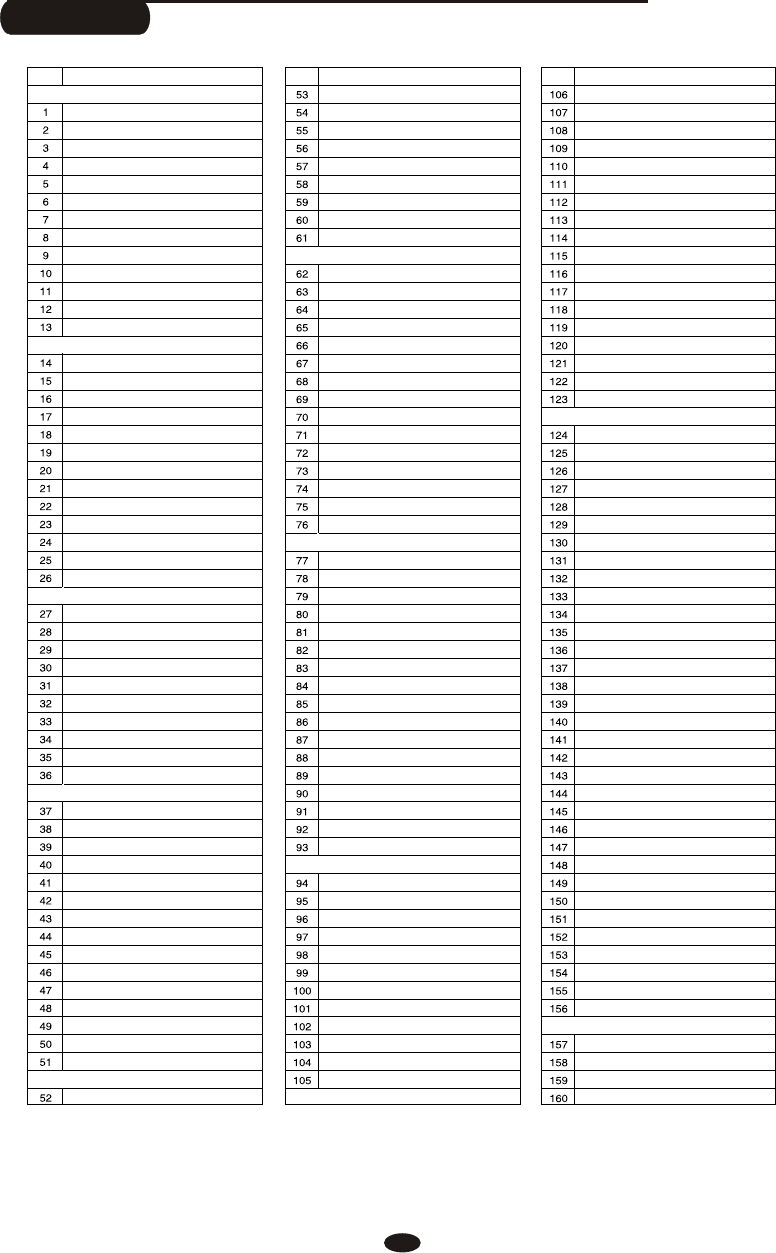
77
Style List
8Bt_Mdrn
MrsyBeat
SurfPop
8Beat1
8Beat2
8Beat3
Ballrock
60sRock
HardRock
ShufRock
80sRock
Slrock1
Slrock2
16Beat1
16Beat2
16Beat3
16Beat4
16Beat5
PopShuf
GuitrPop
JazzRock
SwngFunk
PopRock
60Rock2
70Ties
Surfrock
PnoBalad
LoveSong
68Modern
68SlowRk
ShowBld
PopBalad
16BtBld
Ballad1
Ballad2
Ballad3
Rap
DancePop
House
SwingHse
ClubDnce
ClubLatn
Garage
TechnoPop
Dance8Bt
HipHop
ChillOut
Cumbia
Dance
Techno1
Techno2
70sDisco
80
70
LatnDsco
DiscoPop
DscParty
DscFever
NYDisco
Disco1
Disco2
Disco3
Disco4
BBFast
BBMid
BBBallad
JazzClub
Swing
JzBallad
Dixie
Ratime
Stride
MdrnJazz
DixiePop
Jazzwals
RagtimeP
Swing
Ulligull
Soul
DtrtPop
Rhtmblus
68soul
Twist
RockRollP
BgieWgie
68Blues
34Gospel
GsplShuf
Germwalz
Gospel
Gypsi
Rocknrol
Rockrol2
TwistPop
R&B
Ctry8Bt
CtryPop
CtrySwng
Ctry2Bt2
CtryBld
Bluegras
CtryWlzP
Cntryrok
Cntrywlz
Country1
Country2
Country3
Merengue
Bosanova
PopBossa
MamboPop
SalsaPop
Beguine1
Beguine2
Reggae
SwngRega
Baroque
Bigband
Boogie1
Boogie2
Latin
Macarena
Mambo
Sacrific
Salsa
DancBand
EglshWlz
Foxtrot1
Foxtrot2
Slowfox
QvkFxtrt
QvkStep
Tango1
Tango2
Tango3
Tango4
TangoHb
Pasodobl
Samba1
Samba2
Samba3
Sambarok
Dscsamba
ChaCha1
Chacha2
Chacha3
Chacha4
Jive
Rhumba1
Rhumba2
VnsWaltz
Carib1
Charlstn
Cingen98
Fastbos
Rave1
Rave2
Reggea
24March
March
68March1
68March2
8 Beat
16 Beat
Ballad
Dance
Disco
Country
Traditional
R&B
Swing&Jazz
Ballroom
Latin
NO STYLE NAME
.
NO STYLE NAME
.
NO STYLE NAME
.
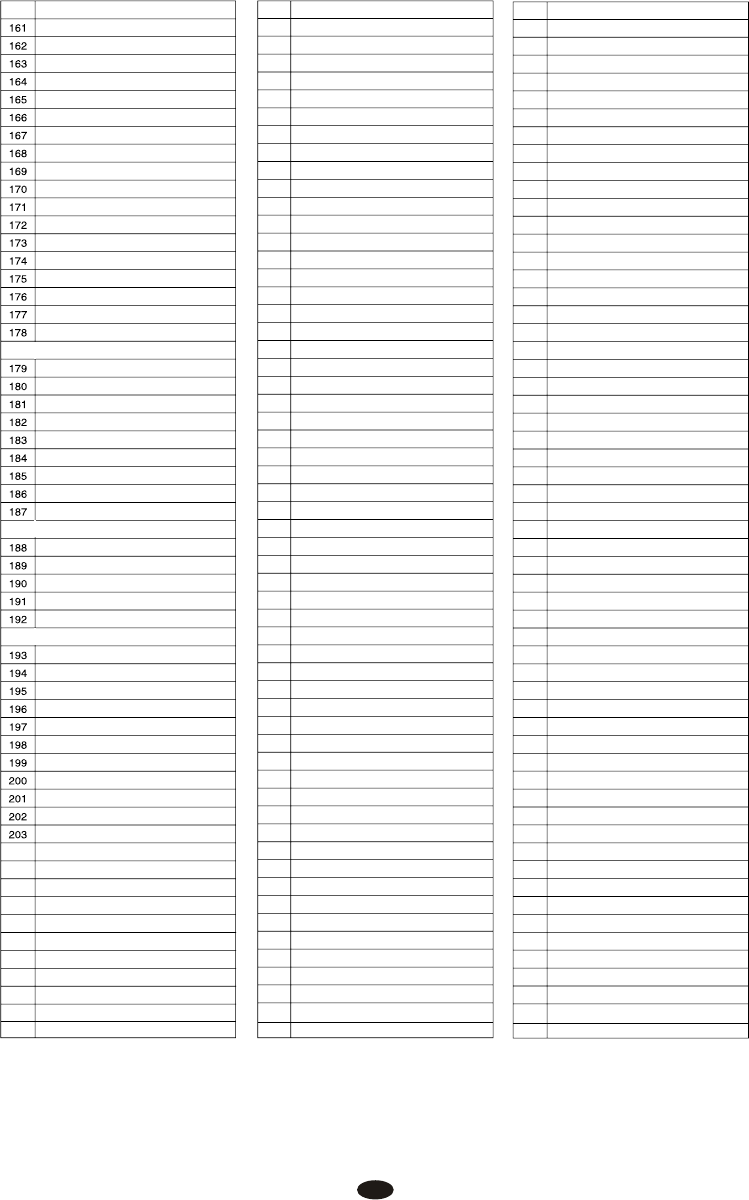
78
24Polka
68Polka
Polka1 1
Polka2
Tarntela
SirtakiP
SctsReel
Hawai1
Hawai2
Mariachi
Hollywd
Merenque
Motown1
Mus58
Oriental
Pasodobl
Schlager
Sirtaki1
SwngWltz
JazzWltz
Waltz
FrnchWlz
MordnWlz
Slwaltz
Trawltz1
Trawltz2
Vienwltz
Pno8bt1
Pno8bt2
Pnobald
Pnowalz1
Pnowalz2
Yaozu
Zangzu
Xiaoqu
Xinjiang
Errenzan
Jiangsu1
Jiangsu2
Minzu
Shanbei
JingJu1
JingJu2
Waltz
Piano
Sino
NO STYLE NAME
.
NO STYLE NAME
.
NO STYLE NAME
.
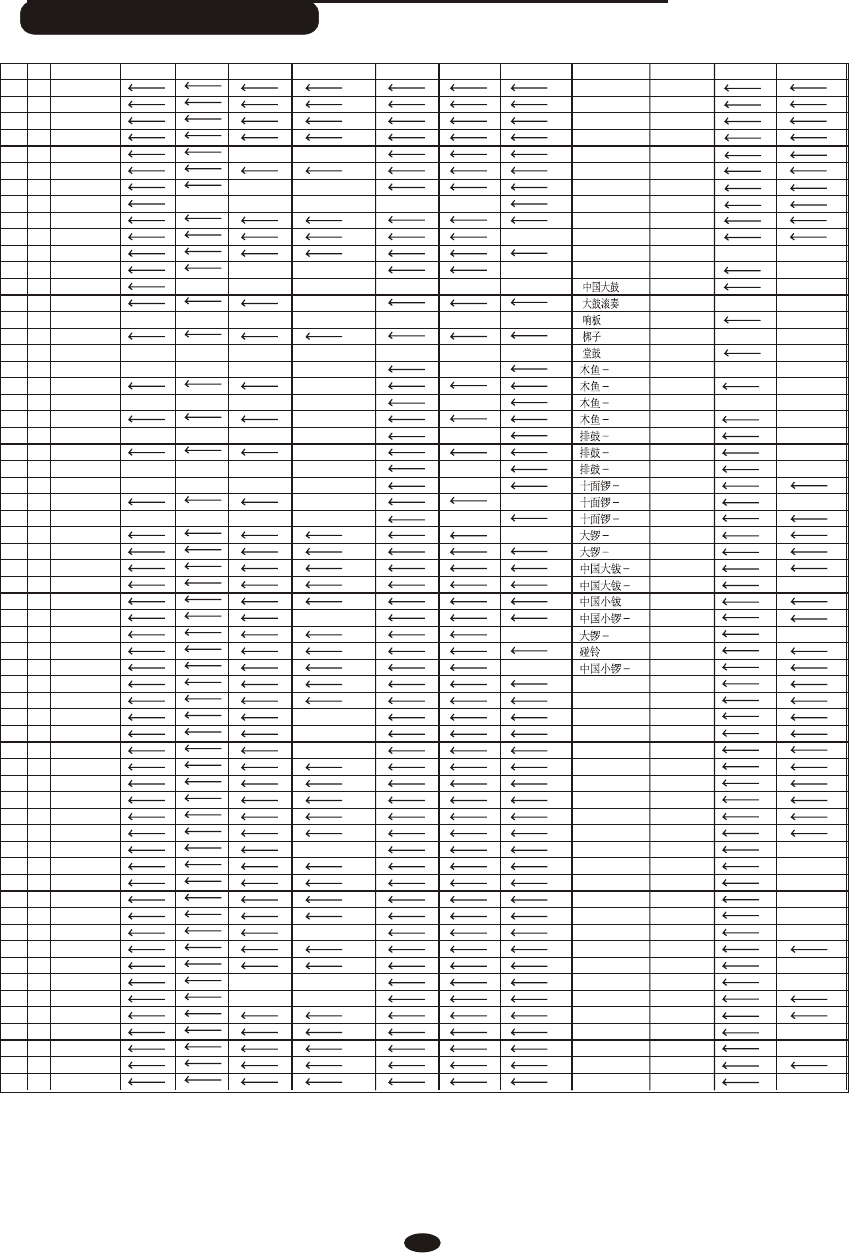
79
Percussion Voice List
Note# Note Standard(0) Room(8)
24
25
26
27
28
29
30
31
32
33
34
35
36
37
38
39
40
41
42
43
44
45
46
47
48
49
50
51
52
53
54
55
56
57
58
59
60
61
62
63
64
65
66
67
68
69
70
71
72
73
74
75
76
77
78
79
80
81
82
83
84
C
#C
D
#D
E
F
#F
G
#G
A
#A
B
C
#C
D
#D
E
F
#F
G
#G
A
#A
B
C
#C
D
#D
E
F
#F
G
#G
A
#A
B
C
#C
D
#D
E
F
#F
G
#G
A
#A
B
C
#C
D
#D
E
F
#F
G
#G
A
#A
B
C
Seq Click H
Brush Tap
Brush Swirl L
Brush Slap
Brush Swirl H
Snare Roll
Castanet
Snare L
Sticks
Bass Drum L
Open Rim Shot
Bass Drum M
Bass Drum H
Side Stick
Snare M
Hand Clap
Snare H
Floor Tom L
Hi-Hat Closed
Floor Tom H
Hi-Hat Pedal
Low Tom
Hi-Hat Open
Mid Tom L
Mid Tom H
Crash Cymbal 1
High Tom
Ride Cymbal 1
Chinese Cymbal
Ride Cymbal Cup
Tambourine
Splash Cymbal
CowBell
Crash Cymbal 2
Vibraslap
Ride Cymbal 2
Bongo H
Bongo L
Conga H Mute
Conga H Open
Conga L
Timbale H
Timbale L
Agogo H
Agogo L
Cabasa
Maracas
Samba Whistle H
Samba Whistle L
Cuiro Short
Cuiro Long
Claves
Wood Block H
Wood Block L
Guica Mute
Guica Open
Triangle Mute
Triangle Open
Shaker
Jingle Bell
Bell Tree
SD Room L
SD Room H
Room Tom 1
Room Tom 2
Room Tom 3
Room Tom 4
Room Tom 5
Room Tom 6
Synth(25)
Rever se Cymbal
Hi-Q
SD Elec H2
BD Analog 1L
BD Analog 1H
Analog Side Stick
SD Analog 1H
SD Analog 1L
Analog Tom 1
Analog HH Closed1
Analog Tom 2
Analog HH Closed2
Analog Tom 3
Analog HH 1Open
Analog Tom 4
Analog Tom 5
Analog Cymbal
Analog Tom 6
Analog Cowbell
Analog Conga H
Analog Conga M
Analog Conga L
Analog Maracas
Analog Claves
Scratch Push
Scratch Pull
Electronic(24)
Rever se Cymbal
Hi-Q
Snare L
BD Rock
BD Rock 2
SD Elec M
SD Elec H
ETom 1
ETom2
E Tom 3
E Tom 4
ETom5
E Tom 6
Scratch Push
Scratch Pull
Power(16)
SD Elec M
BD Rock
SD Rock
SD Rock Rim
Rock Tom 1
Rock Tom 2
Rock Tom 3
Rock Tom 4
Rock Tom 5
Rock Tom 6
Jazz(32)
Snare Jazz
BD Jazz
SD Jazz L
SD Jazz H
Brush Slap L
BD Jazz
Brush Slap H
Brush Tap
Brush Tom 1
Brush Tom 2
Brush Tom 3
Brush Tom 4
Brush Tom 5
Brush Tom 6
Brush(40)
Bass Drun L3
Gran Casa
Gran Casa Mute
Marching SD M
Marching SD H
Hand Cym.L Open
Hand Cym.L Closed
Hand Cym.H Open
Hand Cym.H Closed
Classic(48)
1
2
3
4
Low
Med
Hi
Low
Med
Hi
Med
Hi
Low
Hi
Low
Low
Hi
Sono(151)
Effects(152)
High-Q
Slap
Scratch Push
Scratch Pull
Sticks
Square Click
Mtrnm .Click
Mtrnm. Bell
Gt.FretNoiz
Gt.CutNoise
Gt.CutNoise
String Slap
Fl.KeyClick
Laughing
Screaming
Punch
Heart Beat
Footsteps 1
Footsteps 2
Applause
Door Creaking
Door
Scratch
Wind Chimes
Car-Engine
Car-Stop
Car-Pass
Car-Crash
Siren
Train
Jetplane
Helicopter
Starship
Gun Shot
Machine Gun
Lasergun
Explosion
Dog
HorseGallop
Bird
Rain
Thunder
Wind
Seashore
Stream
BuBBle
Dance 1
Dance Kick
Dance 2
Dance 3
Dance Snare 1
Dance 4
Dance Snare 2
Dance Tom 1
Dance Hita 1
Dance Tom 2
Dance Hita 2
Dance Tom 3
Dance Hita 3
Dance Tom 4
Dance Cha 1
Dance Ling
Dance Cha 2
Dance 5
Dance 6
Dance 7
Dance 8
Dance 9
Dance 10
Dance 11
Dance 12
Dance 13
Dance 14
Dance Ps3
Dance(26)
Standrd2(1)
Snare H Soft 2
Open Rim Shot 2
Bass Drum H 2
Snare 12
Snare H Hard 2
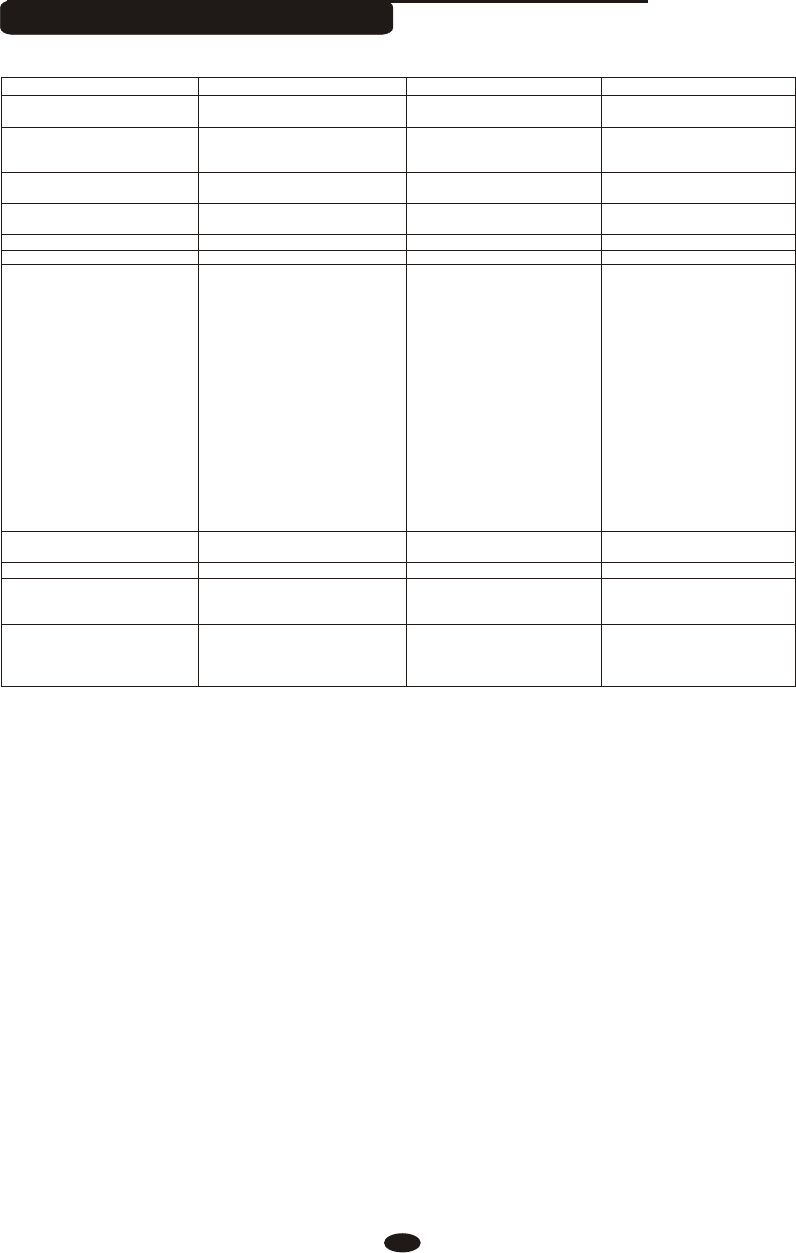
80
Mode1:OMNI ON,POLY Mode2:OMNI ON,MONO O: Yes
Mode3:OMNI OFF,POLY Mode4:OMNI OFF,MONO X: NO
1-16CH
1-16CH
Mode 3
X
X
0~127
0~127
O 9nH,v=1~127
O 9nH,v=0 or 8nh
X
O
O
O
O
O
O
O
O
O
O
O
O
O
O
O(*2)
O
O
O
O 0-127
0-127
O
X
X
X
O
O
O
O
Bank Select
Modulation
Portamento time
Data Entry
Volume
Pan
Expression
Sustain
Portamento
Sostenuto
Soft pedal
DSP TYPE
DSP DEPTH
RPN LSB,MSB
All sound off
Reset all Controllers
Local control
Function Transmitted Recognized Remarks
Basic Default
Channel Changed
Mode Default
Messages
Altered
Note
Number :True voice
Velocity Note ON
Note OFF
Affter Key's
Pitch Bender
Control Change 0,32
1
5
6
7
10
11
64
65
66
67
80,81
91,93
100,101
120
121
122
Programe
Change : True
System Exclusive
System : Song Position
: Song Select
Common : Tune
Aux : Local on/off
: All Notes Off
Messages : Active Sense
: Reset
(*1)
(*1)
Mode 3
X
********
0~127
********
O 9nH,v=1~127
O 9nH,v=0 or 8nh
X
X
O
X
X
O
O
O
X
O
X
O
O
O
O
O
O
X
O
O 0-127
0-127
X
X
X
X
O
O
X
X
MIDI Implementation Chart
*1: Main voice track (01-16).Default: 01
Split voice track (01-16).Default: 02
Dual voice track (01-16).Default: 03
Percussion track (01-16).Default: 10
*2: Registered parameter number:
#0: Pitch sensivity
#1: Fine tuning cents
#2: Coarse tuning in half-tones
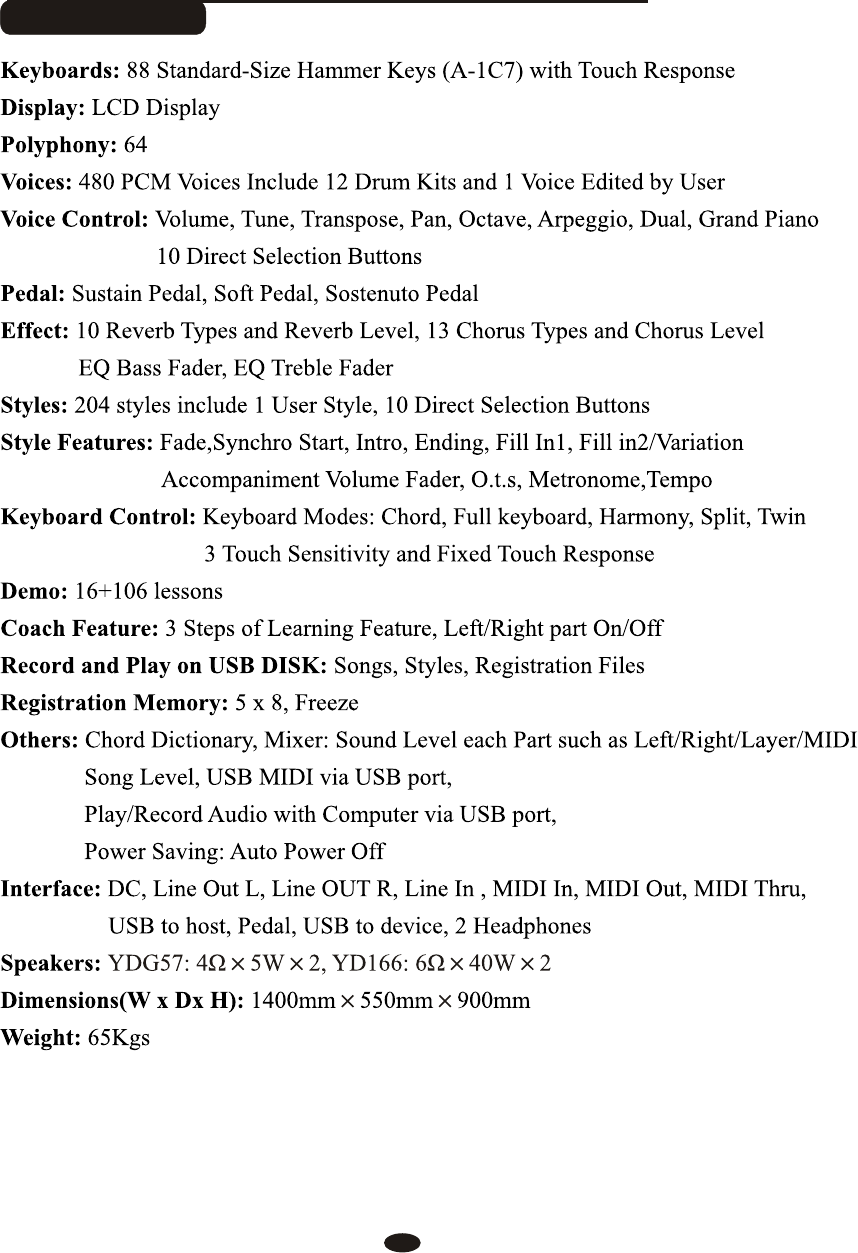
81
Specifications
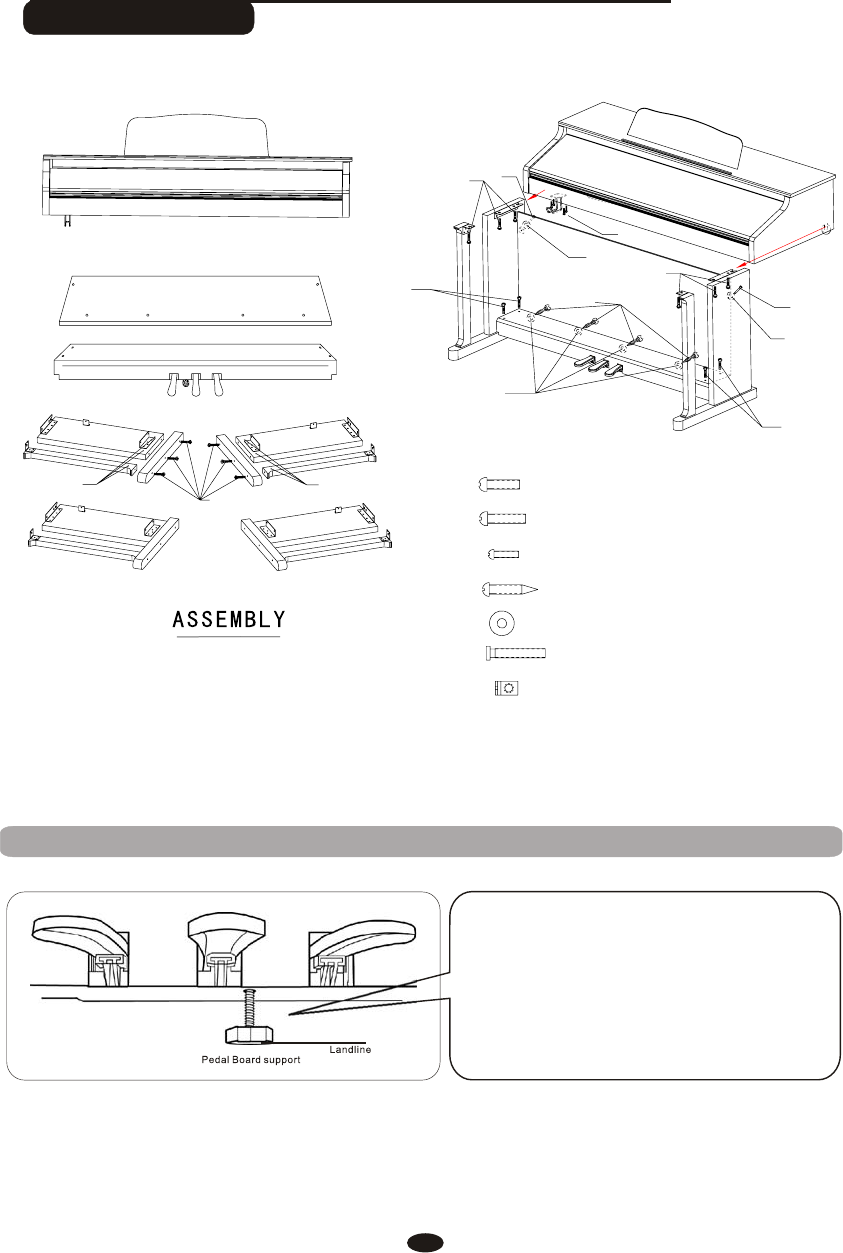
82
Assemble Draft
10505874V1.0
Before moving the piano to a new
location, always remember to raise
the level of the Pedal Board support
so that it is not touching the floor.
Once the piano is in place, you can
adjust it so it is in firm contact with
the floor again.
Turn the adjustable Pedal Board support,until it is in firm contact with the floor.
C
TG8862
C
C
E
E
B
B
E
D
G
G
F
A
A
d=4
E: X6
X4
X6
X6
X4 M6X25
M6X16
M4X16
ST3.9X20D:
C:
A:
B:
G: X6
F: M6X55
X6
FCC STATEMENT
1. This device complies with Part 15 of the FCC Rules. Operation is subject to the following two
conditions:
(1) This device may not cause harmful interference.
(2) This device must accept any interference received, including interference that may cause
undesired operation.
2. Changes or modifications not expressly approved by the party responsible for compliance could
void the user's authority to operate the equipment.
NOTE: This equipment has been tested and found to comply with the limits for a Class B digital
device, pursuant to Part 15 of the FCC Rules. These limits are designed to provide reasonable
protection against harmful interference in a residential installation.
This equipment generates uses and can radiate radio frequency energy and, if not installed and
used in accordance with the instructions, may cause harmful interference to radio communications.
However, there is no guarantee that interference will not occur in a particular installation. If this
equipment does cause harmful interference to radio or television reception, which can be
determined by turning the equipment off and on, the user is encouraged to try to correct the
interference by one or more of the following measures:
Reorient or relocate the receiving antenna.
Increase the separation between the equipment and receiver.
Connect the equipment into an outlet on a circuit different from that to which the receiver is
connected.
Consult the dealer or an experienced radio/TV technician for help.
